|
Denna sida uppdaterades senast
2017-10-24.
Ansvarig för sidan är Rickard O. Lindström. Källa:
http://en.wikipedia.org
I förlängningen av ett veckolångt NATO-möte i Adelaide i
Australien passade jag & Eva på att stanna ytterligare en vecka för att med
hyrbil uppsöka olika naturreservat, parker, stränder, byar och städer. Höjdpunkten blev tre
dagar på Kangeroo Island. Här följer ett antal utvalda bilder på de fåglar jag
lyckats identifiera. Tyvärr hade jag inte med mig mitt stora fågelobjektiv och
bildkvaliteten är naturligtvis därefter...
Här följer bilder på de 60 australiensiska fåglar som jag
tycker är värda att visa (utrustning Canon 7D Mk II, 70-200 2.8 IS + 2x Extender
Mk III):
|
Painted button-quail
The painted button-quail (Turnix
varius - Brokspringhöna) is a species of buttonquail, the family Turnicidae,
which resemble, but are unrelated to, the quails of Phasianidae. This
species is resident in Australia where numbers are believed to be in
decline. The painted buttonquail is about 19 to 20 cm long. It is a
ground-dwelling bird and is found in grassy forests and woodlands. It feeds
on insects and seeds, and the males incubate the eggs for a fortnight and
then care for the young.
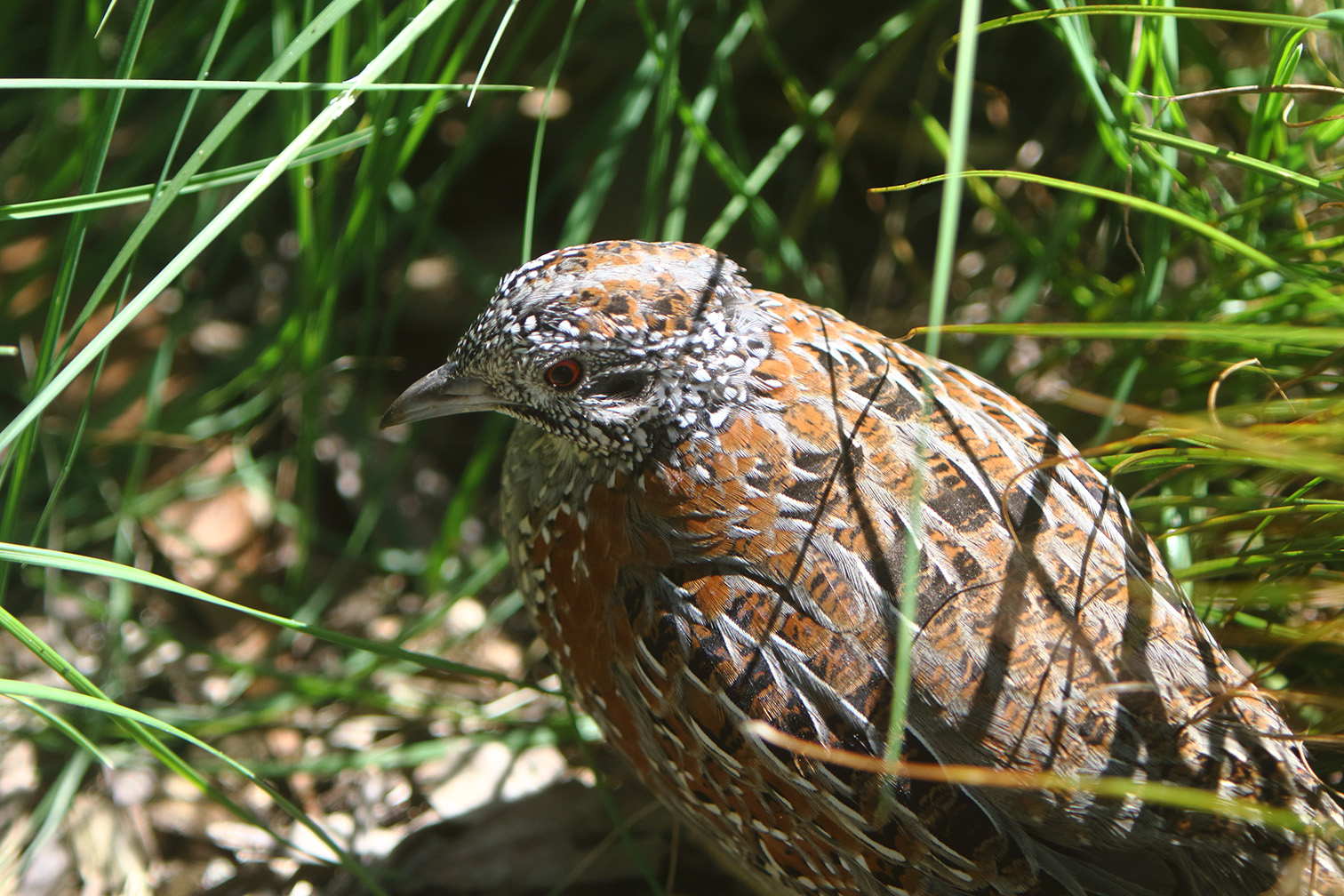 |
|
Radjah Shelduck
The radjah shelduck (Radjah radjah -
Vithuvad gravand) is a species of shelduck found mostly in Papua New Guinea
and Australia, and also on some of the Moluccas. It is known alternatively
as the raja shelduck, black-backed shelduck, or (in Australia) Burdekin
duck. The radjah shelduck is listed as a protected bird in all states of
Australia and penalties exist for harming or disturbing them. The species
prefers the brackish waters of mangrove flats and paperbark tree swamps, but
will visit freshwater swamps, lagoons, and billabongs further inland during
the wet season.
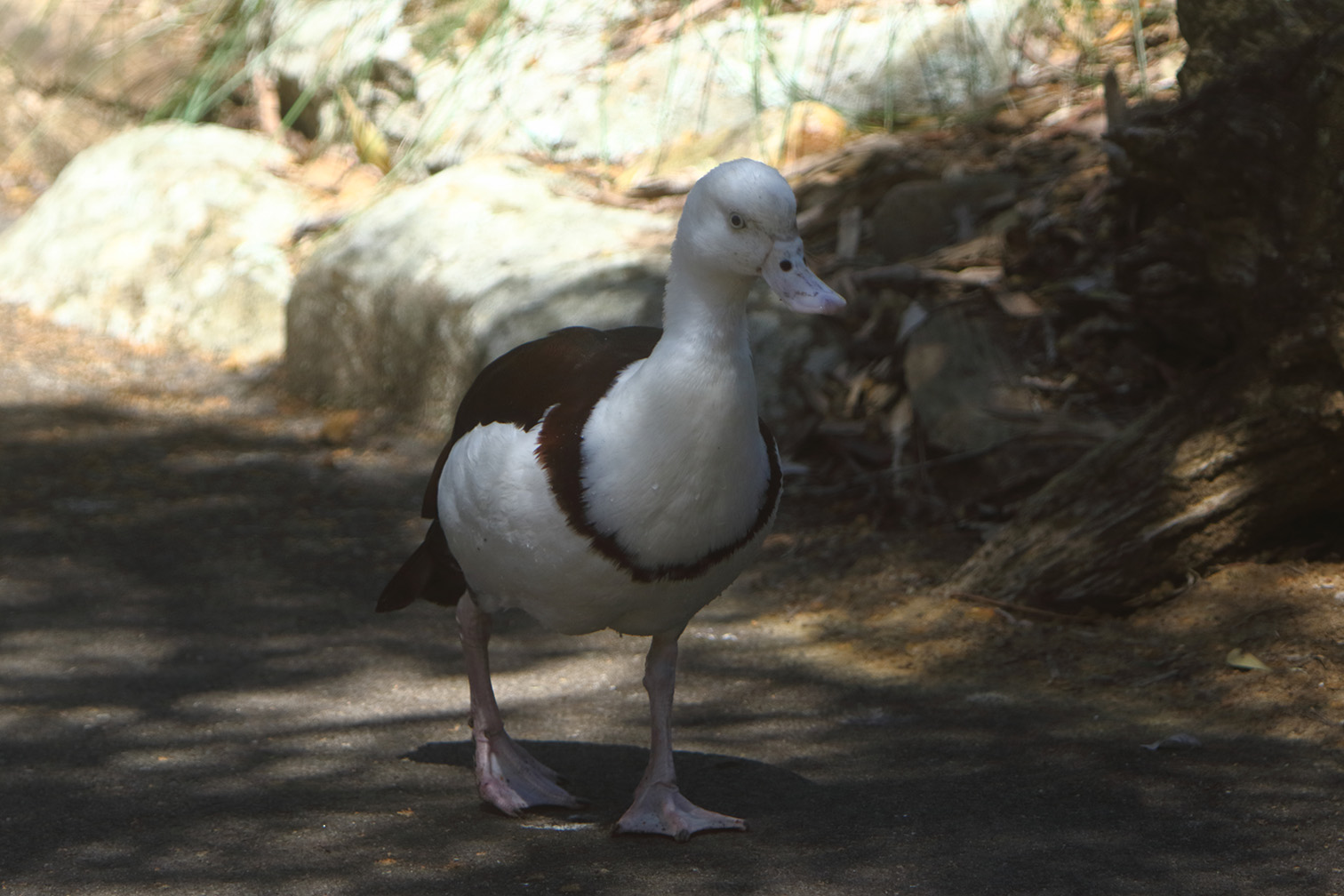 |
|
Variegated Fairy-wren
The variegated fairywren (Malurus
lamberti - Brokblåsmyg) is a fairywren that lives in diverse habitats across
most of Australia. Four subspecies are recognised. In a species that
exhibits sexual dimorphism, the brightly coloured breeding male has chestnut
shoulders and azure crown and ear coverts, while non-breeding males, females
and juveniles have predominantly grey-brown plumage, although females of the
subspecies rogersi and dulcis (previously termed lavender-flanked fairywren)
have mainly blue-grey plumage.
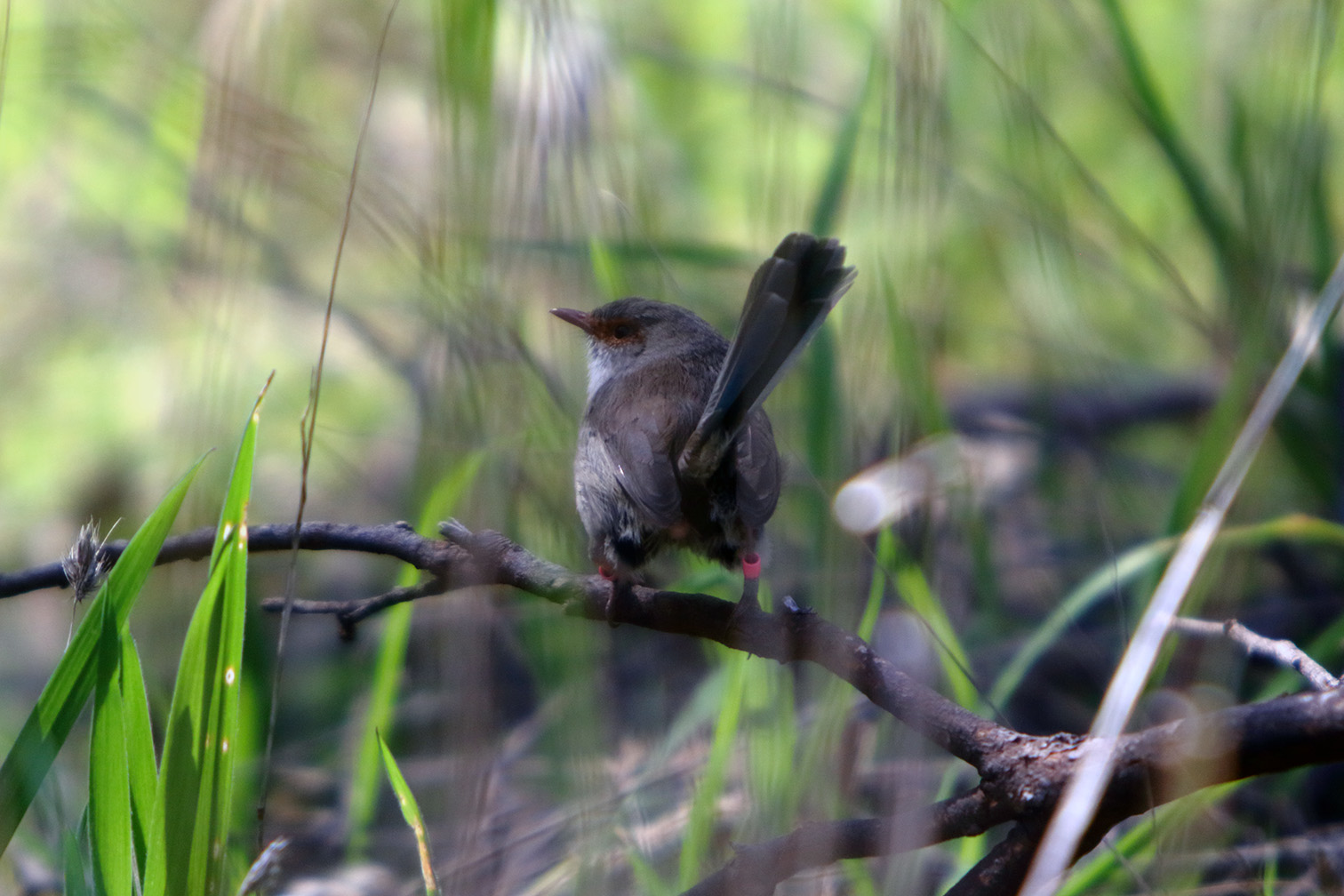 |
|
White-browed Woodswallow
The white-browed woodswallow (Artamus
superciliosus - Vitbrynad svalstareg) is a moderately sized passerine bird
native to inland Australia. Like all woodswallows, it has a brush-tipped
tongue but feeds almost exclusively on flying insects. White-browed
woodswallows are highly nomadic. Pairs, small parties, and sometimes flocks
of thousands wander irregularly around inland Australia, often trending
north to winter in the Northern Territory and central Queensland, and south
in spring to nest. Their heartland is the area centered on the
Murray-Darling Basin, but they range far beyond this area, and in drought
years frequently reach coastal southeast Australia.
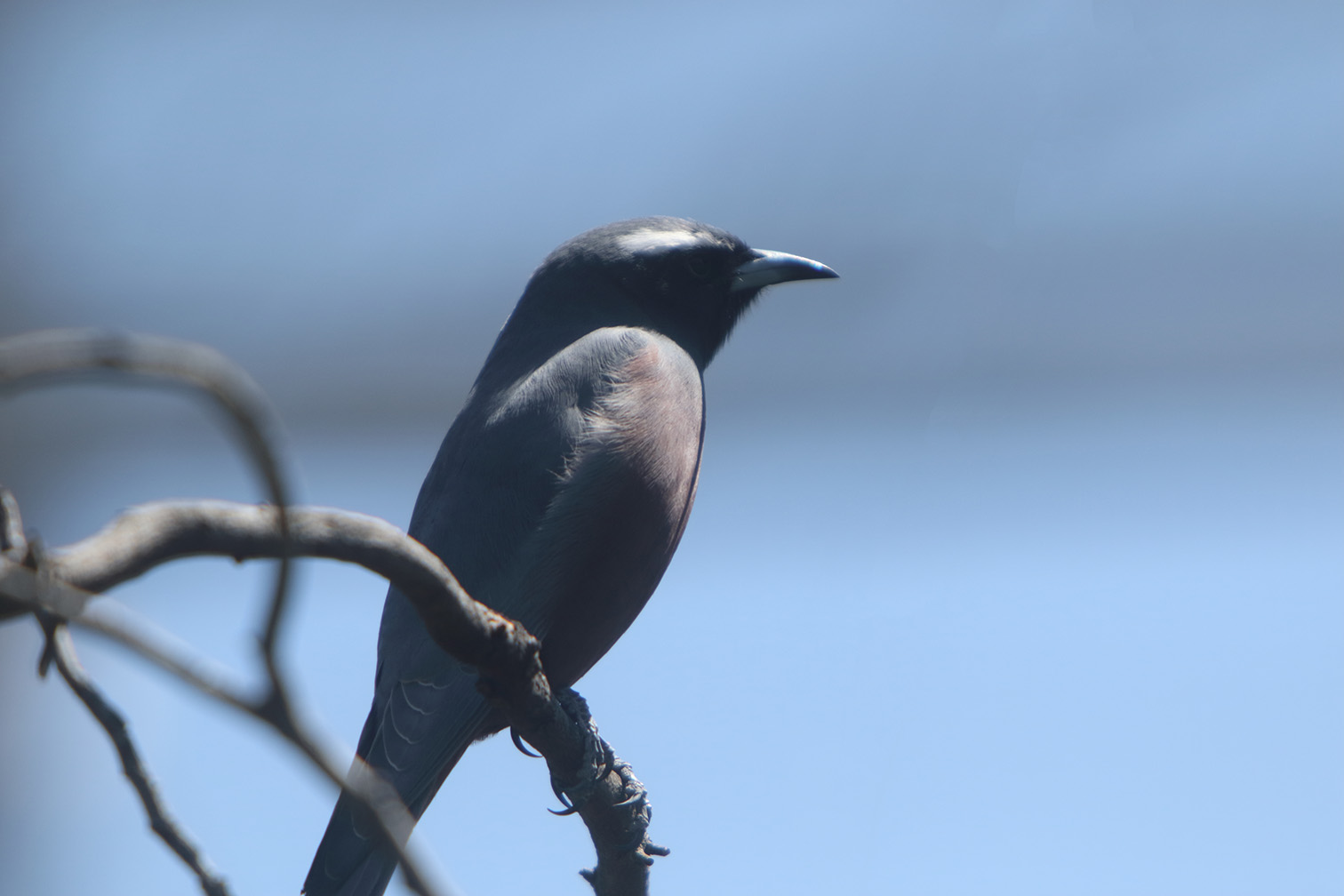 |
|
Magpie Goose
The magpie goose (Anseranas
semipalmata - Skatgås) is the sole living representative waterbird species
of the Anseranatidae family. It is a resident breeder in northern Australia
and a vagrant to southern New Guinea. The species was once also widespread
in southern Australia, but disappeared from there largely due to the
drainage of the wetlands where the birds once bred. The Kunwinjku of western
Arnhem Land know this bird as Manimanuk. It became an important food item
with the formation of wetlands about 1500 ya, and is depicted in rock art
from this period.
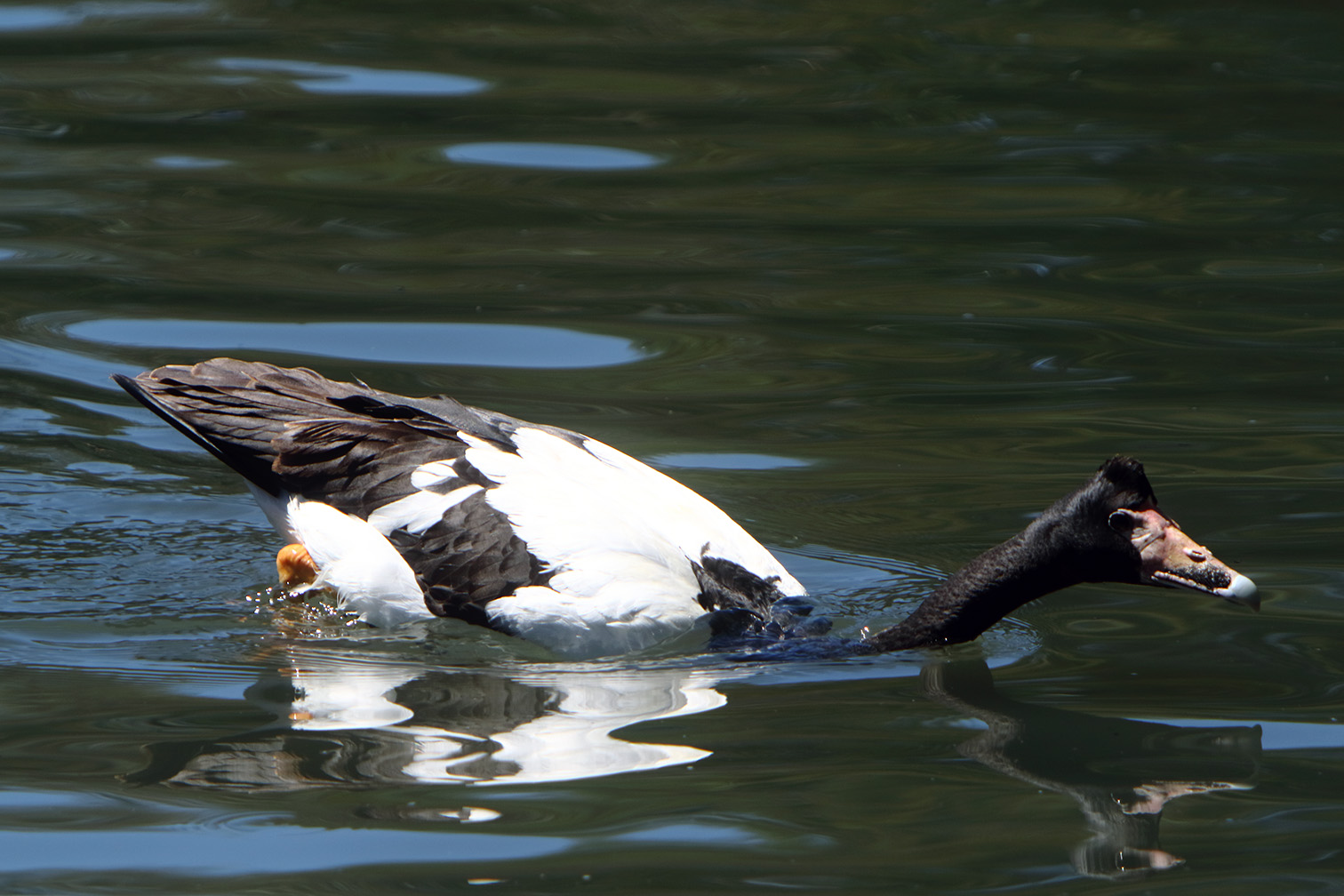 |
|
White-eyed Duck
The white-eyed duck (Aythya
australis – Australisk dykand), also the hardhead, is the only true diving
duck found in Australia. Hardheads are common in the south-east of
Australia, particularly in the Murray-Darling Basin, but also in the wetter
country near the coasts. They are moderately nomadic in normal years, but
disperse widely in times of drought.
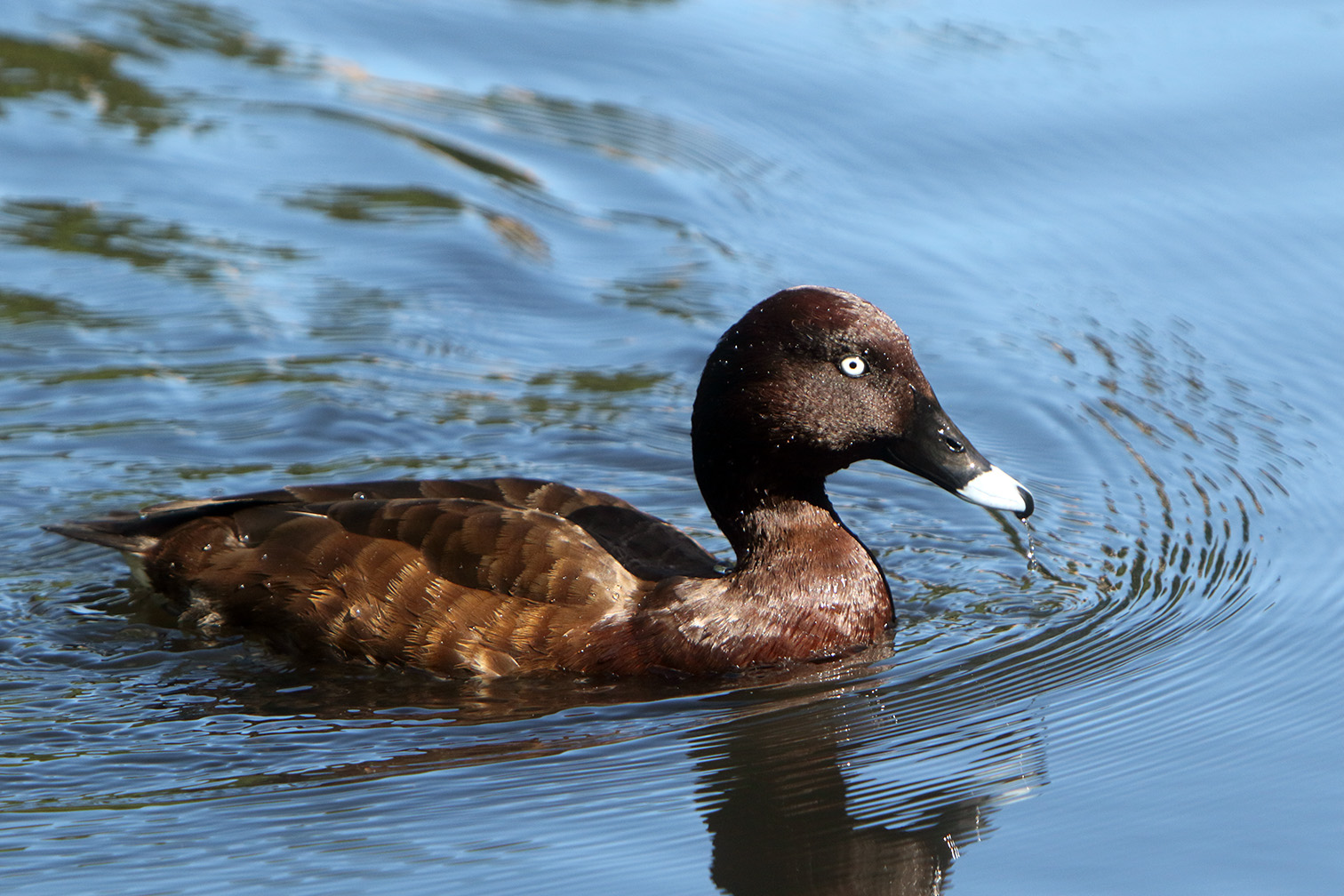 |
|
Hoary-headed Grebe
The hoary-headed grebe
(Poliocephalus poliocephalus - Gråhuvad dopping) is a
member of the grebe family. It breeds in southern parts of Australia and
Tasmania; it winters throughout the island. The bird takes its name from the
silvery-white streaking on its black head. It is common in Australia, with a
population of about 500,000. Its habitat is similar to that of the
Australasian grebe.
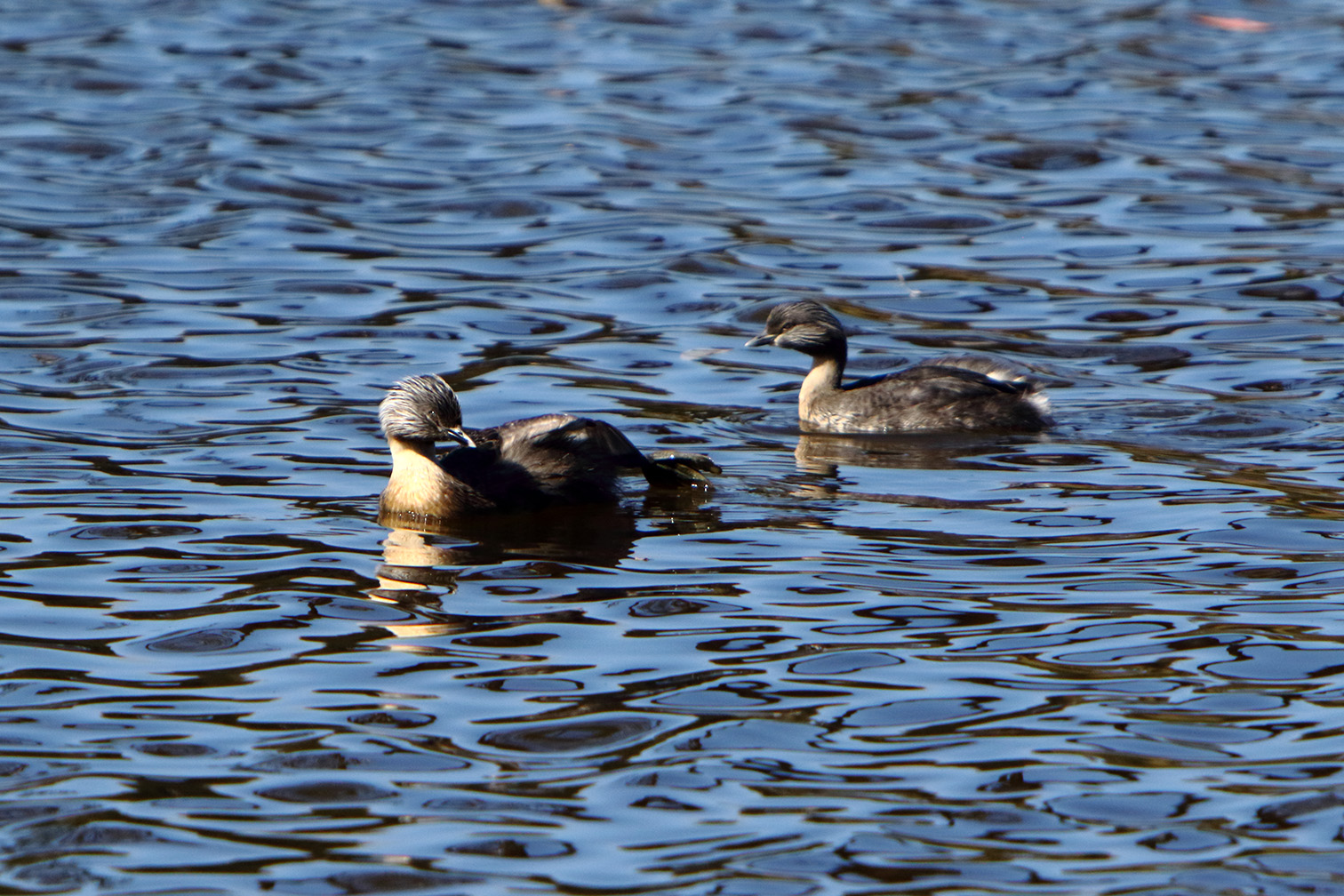 |
|
Bar-shouldered Dove
The bar-shouldered dove (Geopelia
humeralis - Blåbröstad zebraduva) is native to Australia and southern New
Guinea. It is protected under the National Parks and Wildlife Act 1974. It
is a medium-sized pigeon varying in size from 26 to 30 centimetres. Its
voice is a distinctive and melodious "cook-a-wook" or "coolicoo".
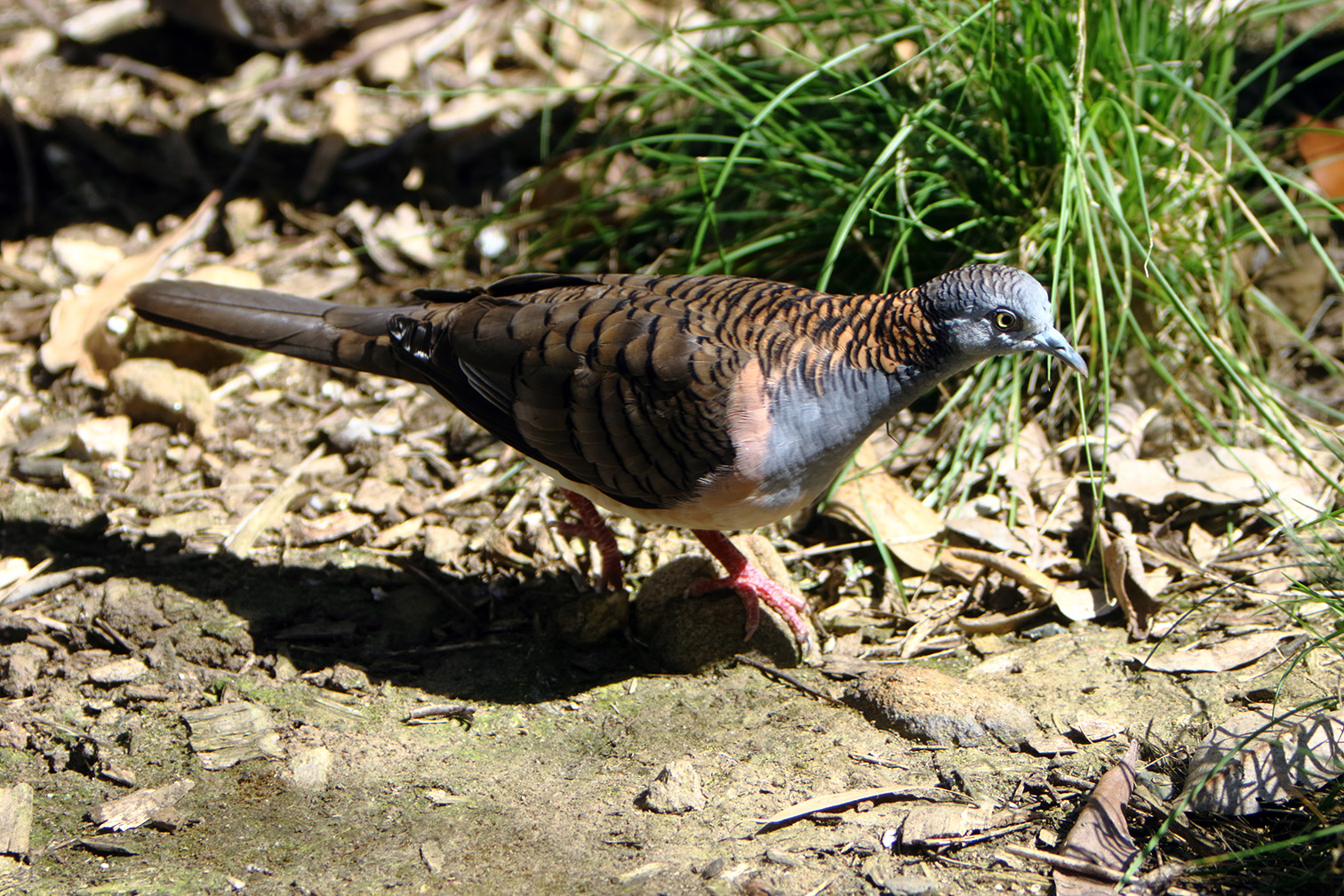 |
|
Red-browed Finch
The red-browed
finch (Neochmia temporalis - Rödbrynad astrild) is an estrildid finch
that inhabits the east coast of Australia. It is commonly found in temperate
forest and dry savannah habitats. It may also be found in dry forest and
mangrove habitats in tropical region. The species is distinguished by the
bright red stripe above the eye, and bright red rump. The rest of the body
is grey, with olive wing coverts and collar. The adults are 11–12 cm long.
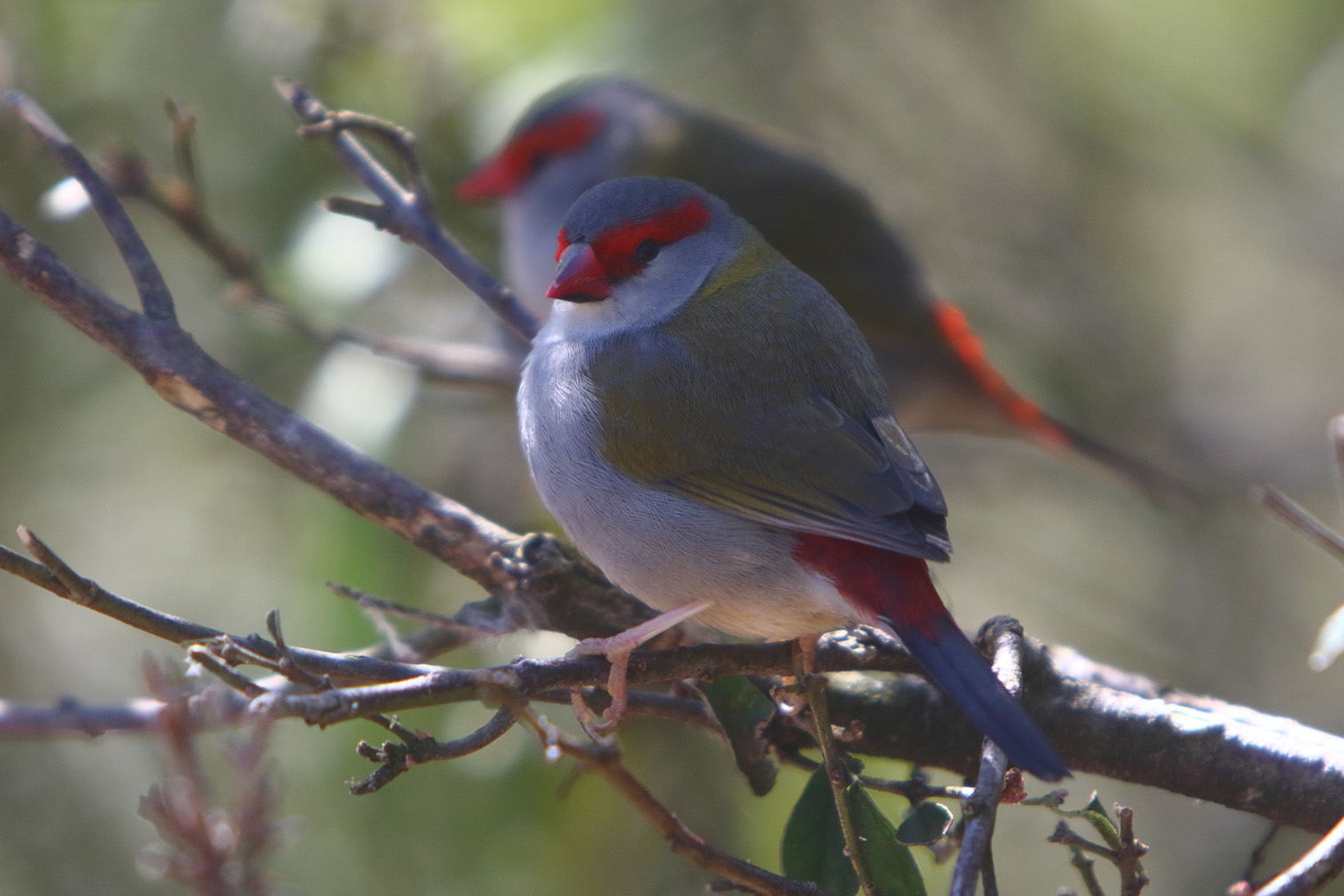 |
|
Masked Woodswallow
The Masked
Woodswallow (Artamus personatus - Svatrmaskad svalstare) is a medium
sized species of Woodswallow in the bird family Artamidae. It is a common,
gregarious and highly nomadic species, appearing in large flocks usually
with White-browed Woodswallow (Artamus superciliosus). Among the few
passerines that have powder down through their plumage. Listed as least
concern on the ICUN list. Widespread on mainland Australia, less common in
coastal and near coastal areas. Mainly inhibit open forest, woodland, heath,
roadside and farm tree belts.
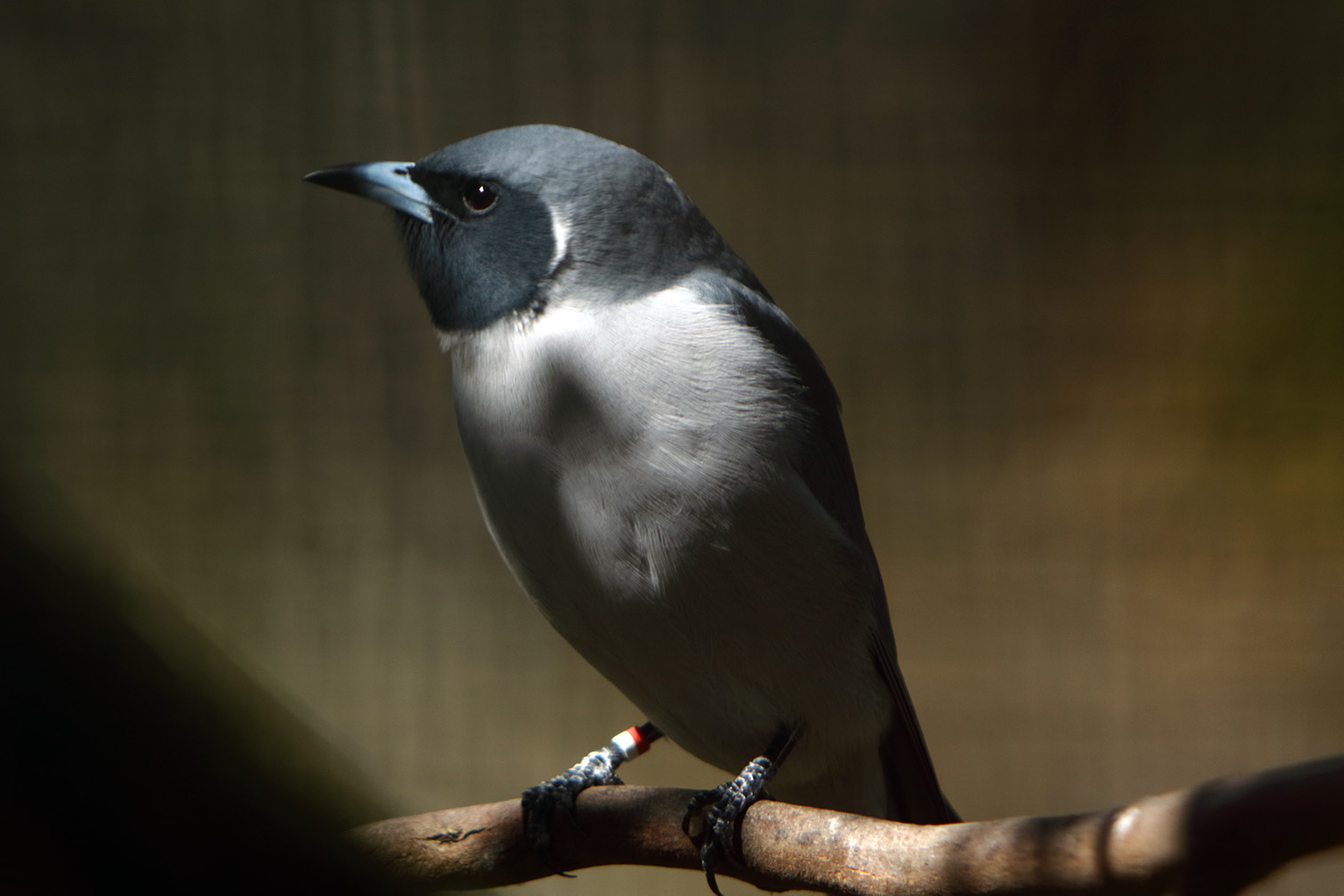 |
|
Emu
The emu (Dromaius novaehollandiae -
Emu) is the second-largest living bird by height, after its ratite relative,
the ostrich. It is endemic to Australia where it is the largest native bird
and the only extant member of the genus Dromaius. The emu's range covers
most of mainland Australia. The bird is sufficiently common for it to be
rated as a least-concern species. Emus are soft-feathered, brown, flightless
birds with long necks and legs, and can reach up to 1.9 metres in height.
Emus can travel great distances, and when necessary can sprint at 50 km/h.
They forage for a variety of plants and insects, but have been known to go
for weeks without eating. They drink infrequently, but take in copious
amounts of water when the opportunity arises.
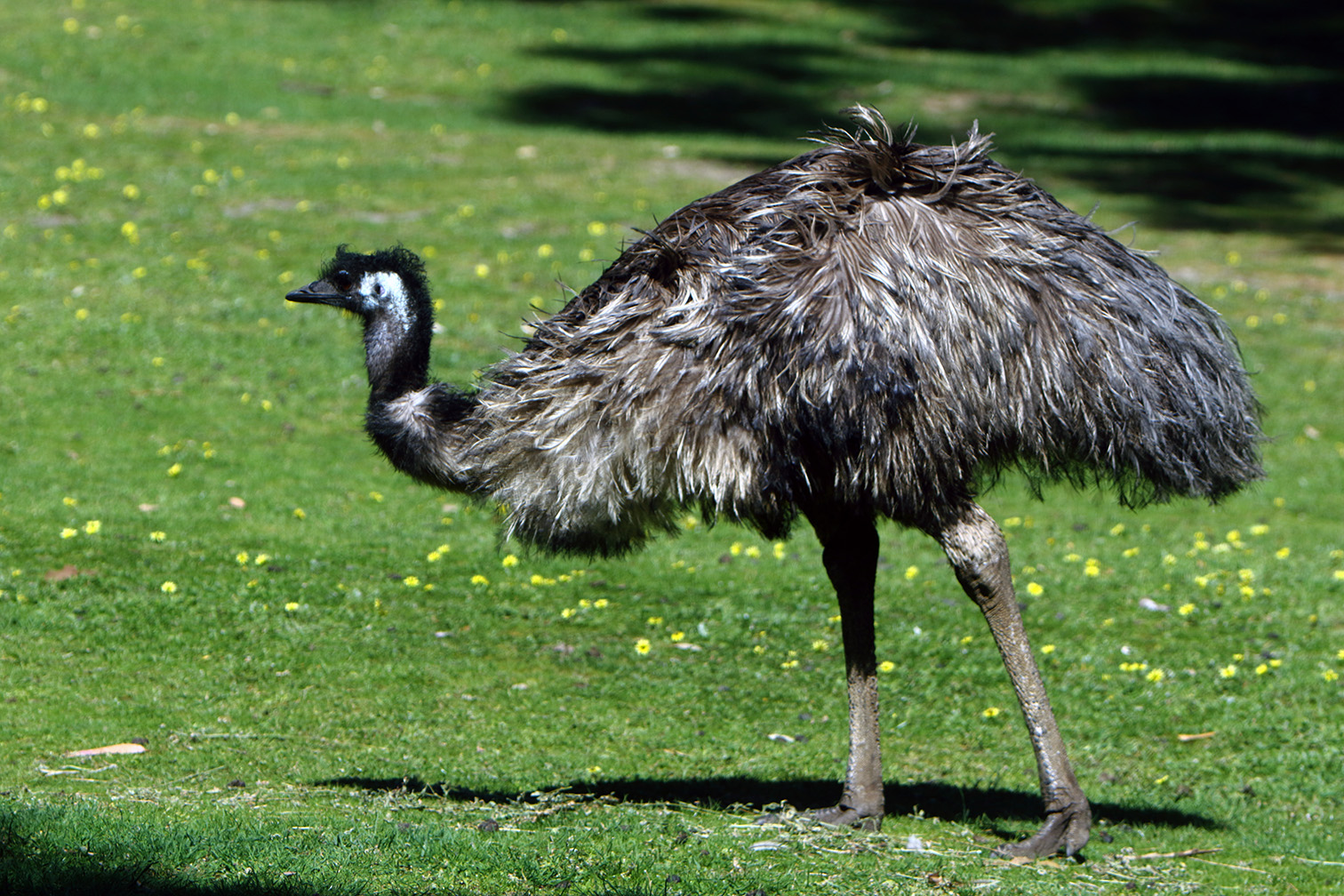 |
|
Bush Stone-curlew
The bush
stone-curlew or bush thick-knee (Burhinus grallarius, obsolete name
Burhinus magnirostris - Stylttjockfot) is a large (55–60 cm wingspan),
ground-dwelling bird endemic to Australia. Bush stone-curlews remain
reasonably common in the north of Australia, but have become rare in the
less fertile south. Many experts believe that fox predation is a prime
factor in their decline, however there are areas where foxes are common yet
the bush stone-curlew population remains healthy, so the true causes remain
uncertain.
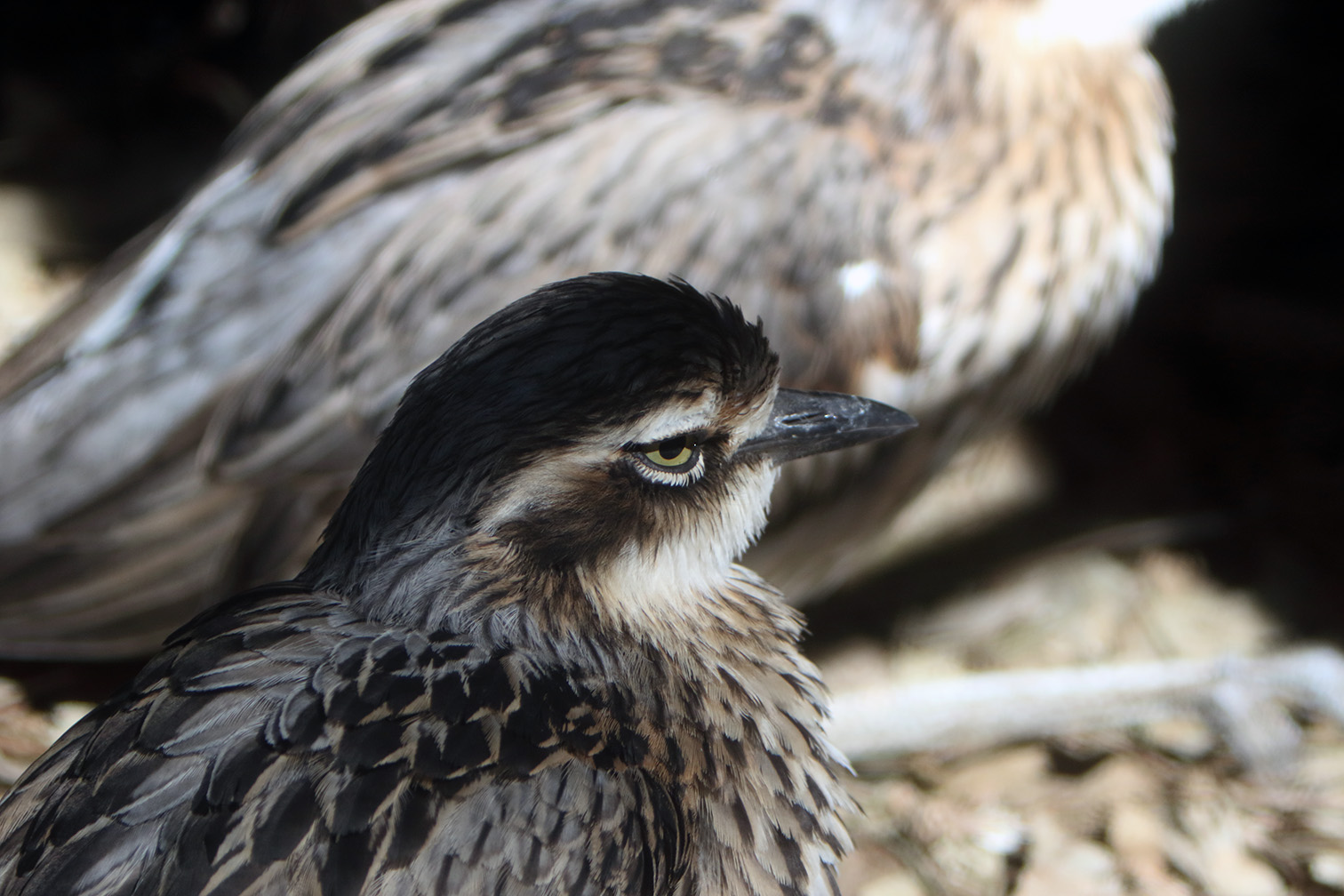 |
|
Budgerigar
The budgerigar (Melopsittacus
undulatus - Undulat), also known as the common parakeet or shell parakeet
and informally nicknamed the budgie, is a small, long-tailed, seed-eating
parrot. Budgerigars are the only species in the Australian genus
Melopsittacus and are found wild throughout the drier parts of Australia
where the species has survived harsh inland conditions for the last five
million years. Budgerigars are naturally green and yellow with black,
scalloped markings on the nape, back and wings, but have been bred in
captivity with colouring in blues, whites, yellows, greys and even with
small crests. Budgerigars are popular pets around the world due to their
small size, low cost and ability to mimic human speech. The origin of the
budgerigar's name is unclear. The species was first recorded in 1805, and
today is the third most popular pet in the world, after the domesticated dog
and cat.
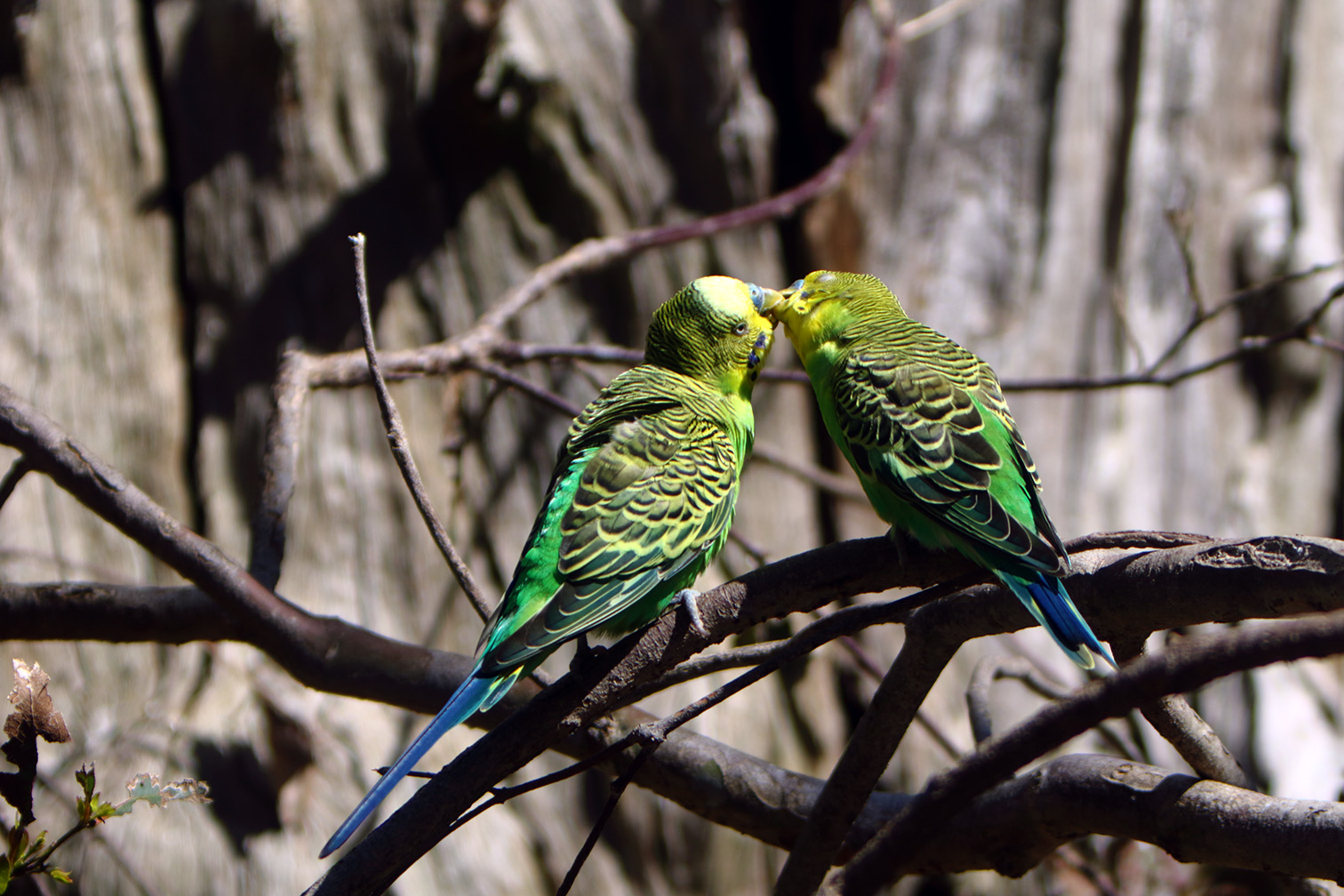 |
|
Masked Lapwing
The masked lapwing
(Vanellus miles - Maskvipa), also known as the masked plover and often
called the spur-winged plover or just plover in its native range, is a
large, common and conspicuous bird native to Australia, particularly the
northern and eastern parts of the continent, New Zealand and New Guinea. It
spends most of its time on the ground searching for food such as insects and
worms and has several distinctive calls. There are two subspecies; the
southern novaehollandiae has distinctive black markings on the shoulder and
side of the chest, and is sometimes recognized as a separate species, the
black-shouldered lapwing (Vanellus novaehollandiae). These brown-black,
white and yellow plovers are common in Australian fields and open land.
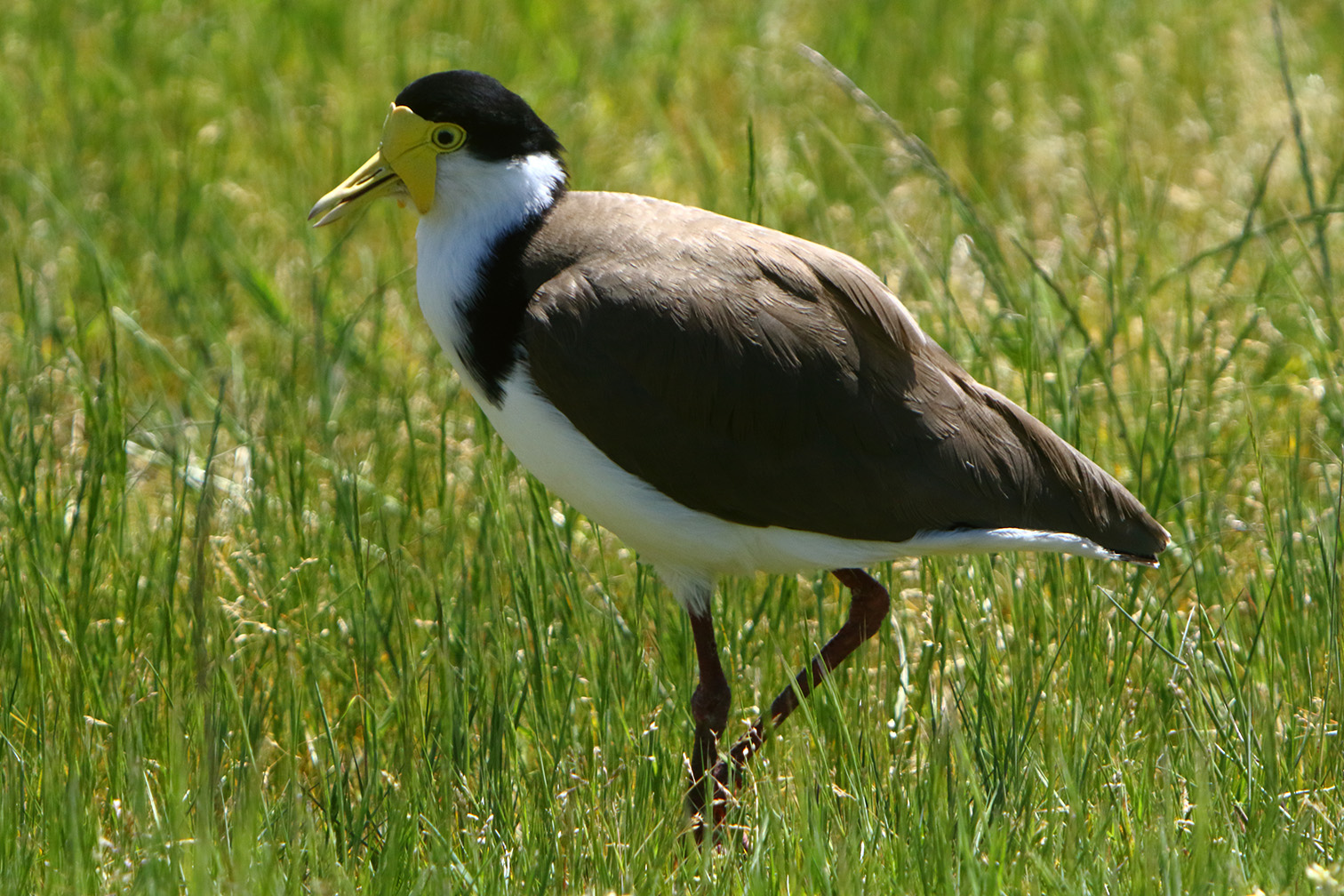 |
|
Australien White Ibis
The Australian White
Ibis (Threskiornis molucca - Australisk ibis) is a wading bird of the
ibis family, Threskiornithidae. It is widespread across much of Australia.
It has a predominantly white plumage with a bare, black head, long
downcurved bill and black legs. Its sister species is the sacred
ibis. Historically rare in urban
areas, the Australian white ibis has immigrated to urban areas of the east
coast in increasing numbers since the late 1970s; it is now commonly seen in
Wollongong, Sydney, Melbourne, the Gold Coast, Brisbane and Townsville. In
recent years the bird has also become increasing common in Perth, Western
Australia and surrounding towns in south-western Australia. Populations have
disappeared from natural breeding areas such as the Macquarie Marshes in
north-western New South Wales. Management plans have been introduced to
control problematic urban populations in Sydney.
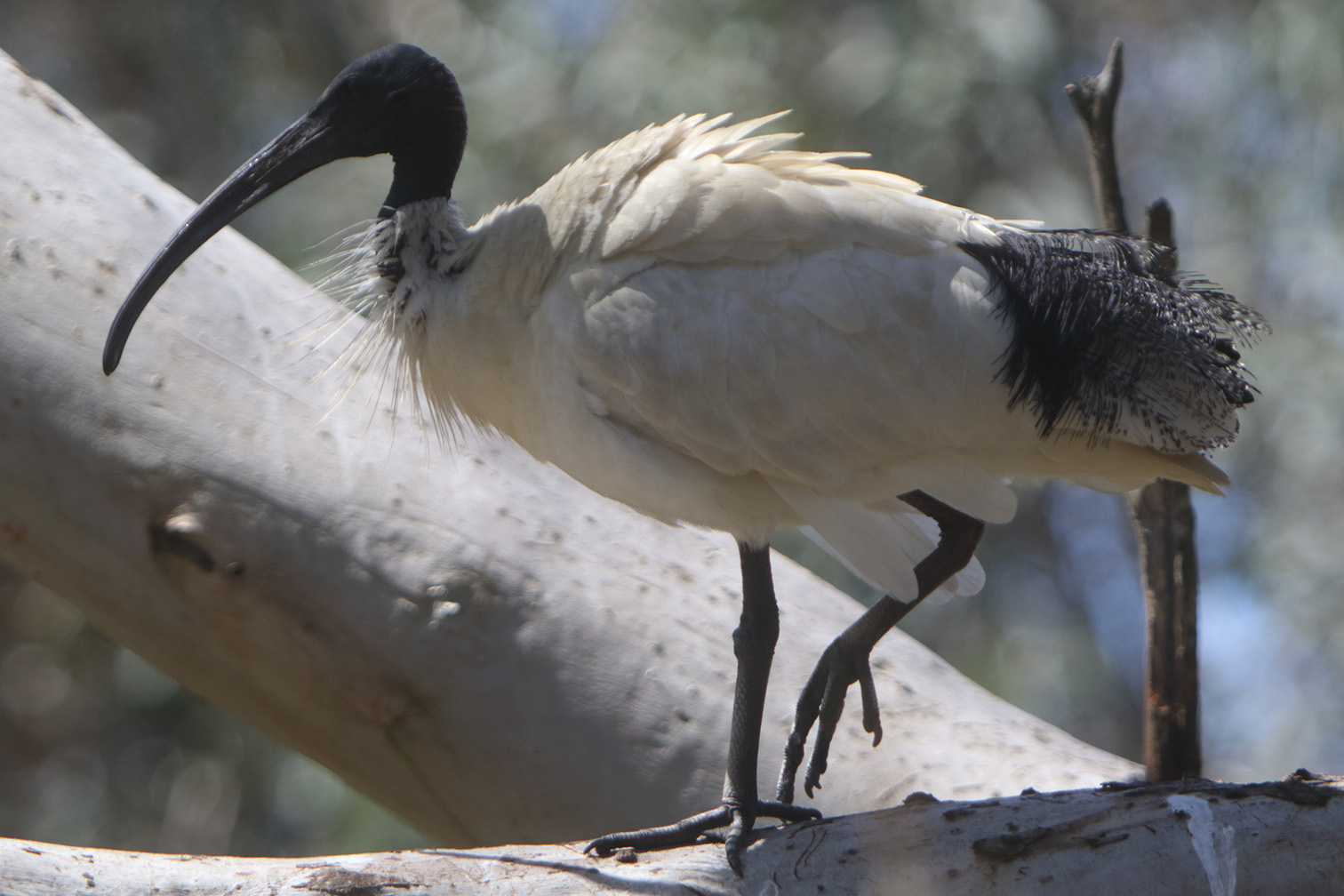 |
Superb Fairy-Wren The superb fairy-wren (Malurus cyaneus - Vitbukig blåsmyg), also known as the superb blue-wren or colloquially as the blue wren, is a passerine bird of the family Maluridae, common and familiar across southeastern Australia. The species is sedentary and territorial, also exhibiting a high degree of sexual dimorphism; the male in breeding plumage has a striking bright blue forehead, ear coverts, mantle, and tail, with a black mask and black or dark blue throat. Six subspecies groups are recognized: three larger and darker forms from Tasmania, Flinders and King Island respectively, and three smaller and paler forms from mainland Australia and Kangaroo Island.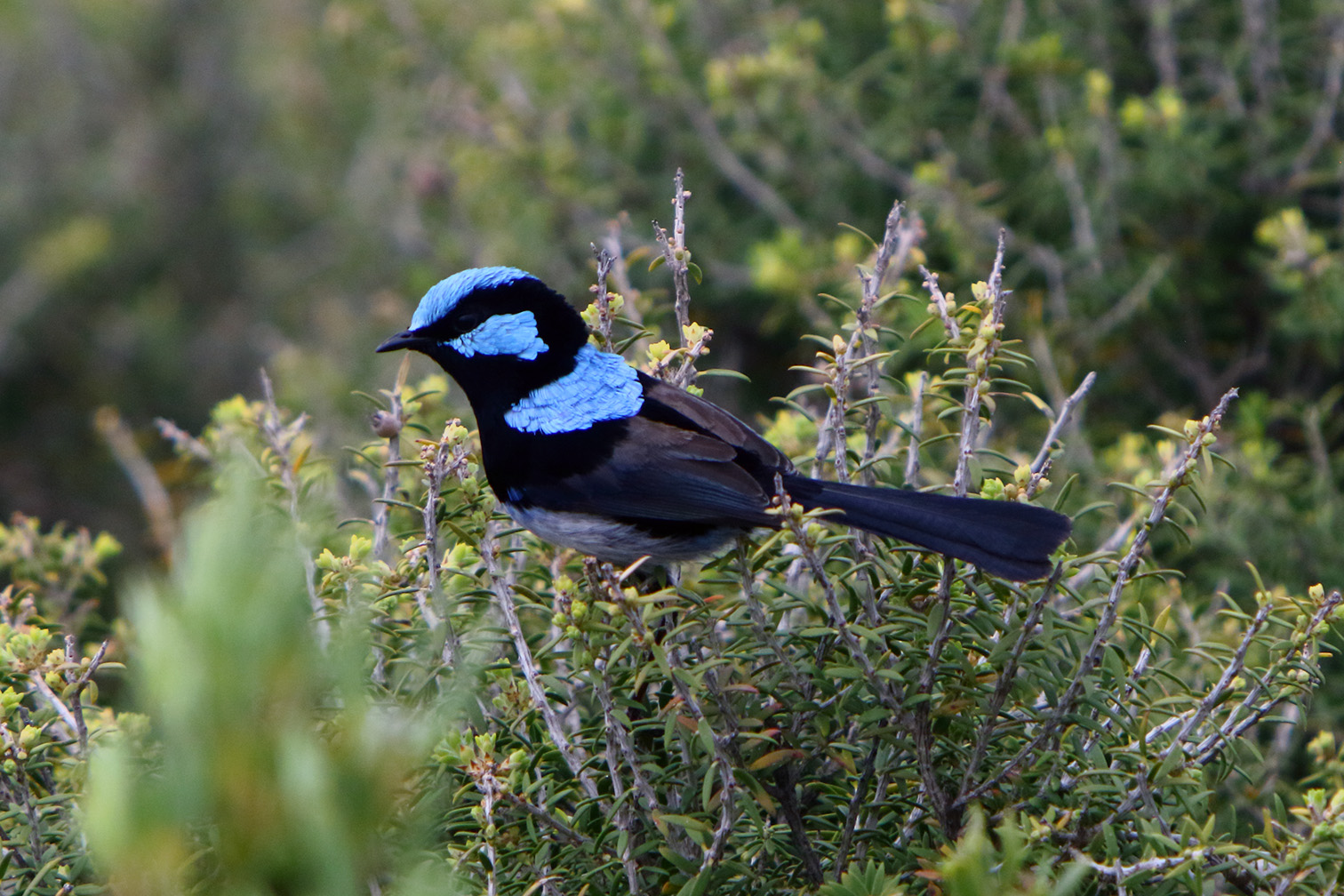
|
|
Eastern Rosella
The Eastern Rosella (Platycercus
eximius - Praktrosella) is a rosella native to southeast of the Australian
continent and to Tasmania. It has been introduced to New Zealand where feral
populations are found in the North Island (notably in the northern half of
the island and in the Hutt Valley) and in the hills around Dunedin in the
South Island.
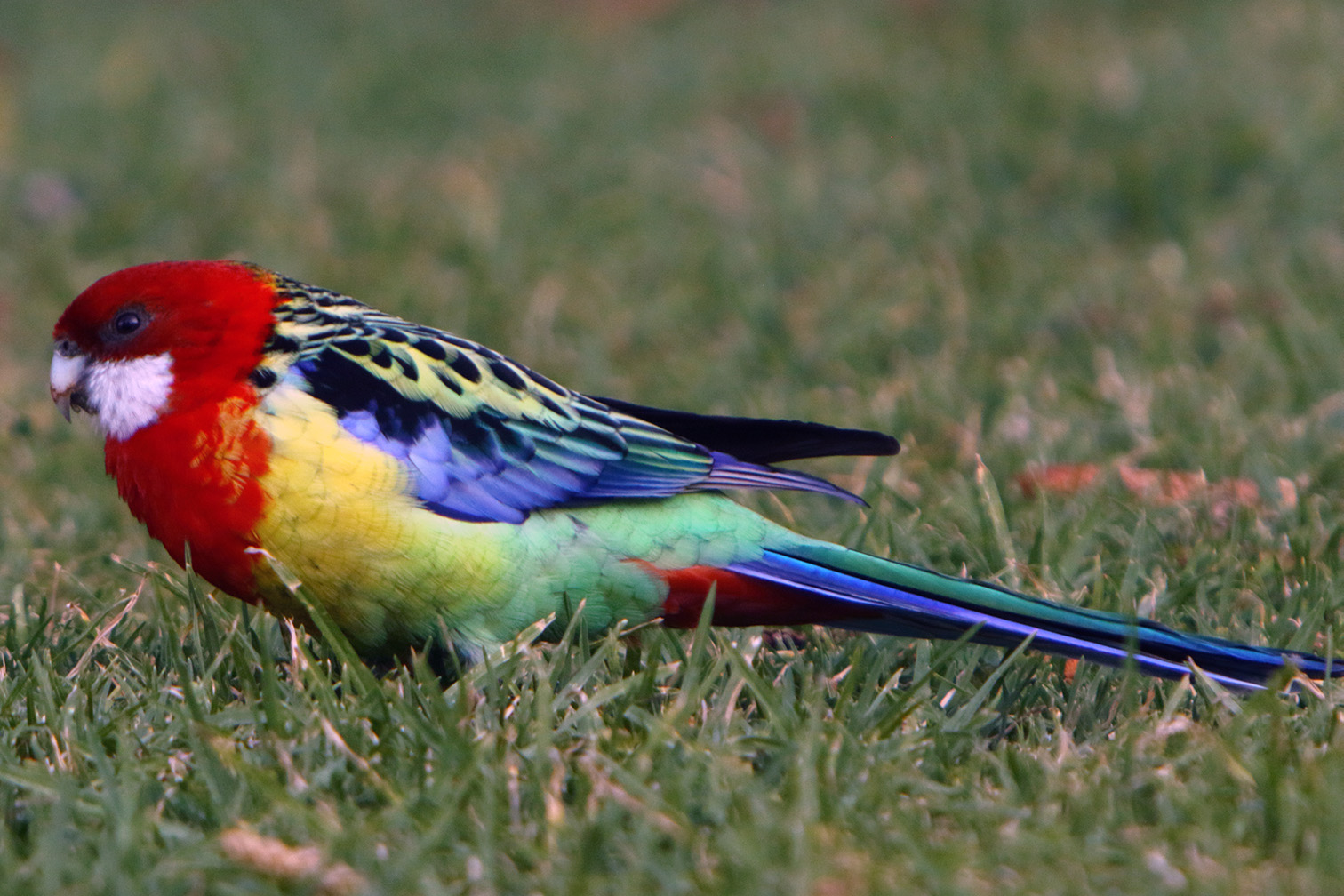 |
|
Silver Gull
The silver gull (Chroicocephalus
novaehollandiae - Silvermås) is the most common gull seen in Australia. It
has been found throughout the continent, but particularly at or near coastal
areas. The silver gull should not be confused with the herring gull, which
is called "silver gull" in many other languages (scientific name Larus
argentatus, German Silbermöwe, French Goéland argenté, Dutch zilvermeeuw),
but is a much larger, robust gull with no overlap in range.
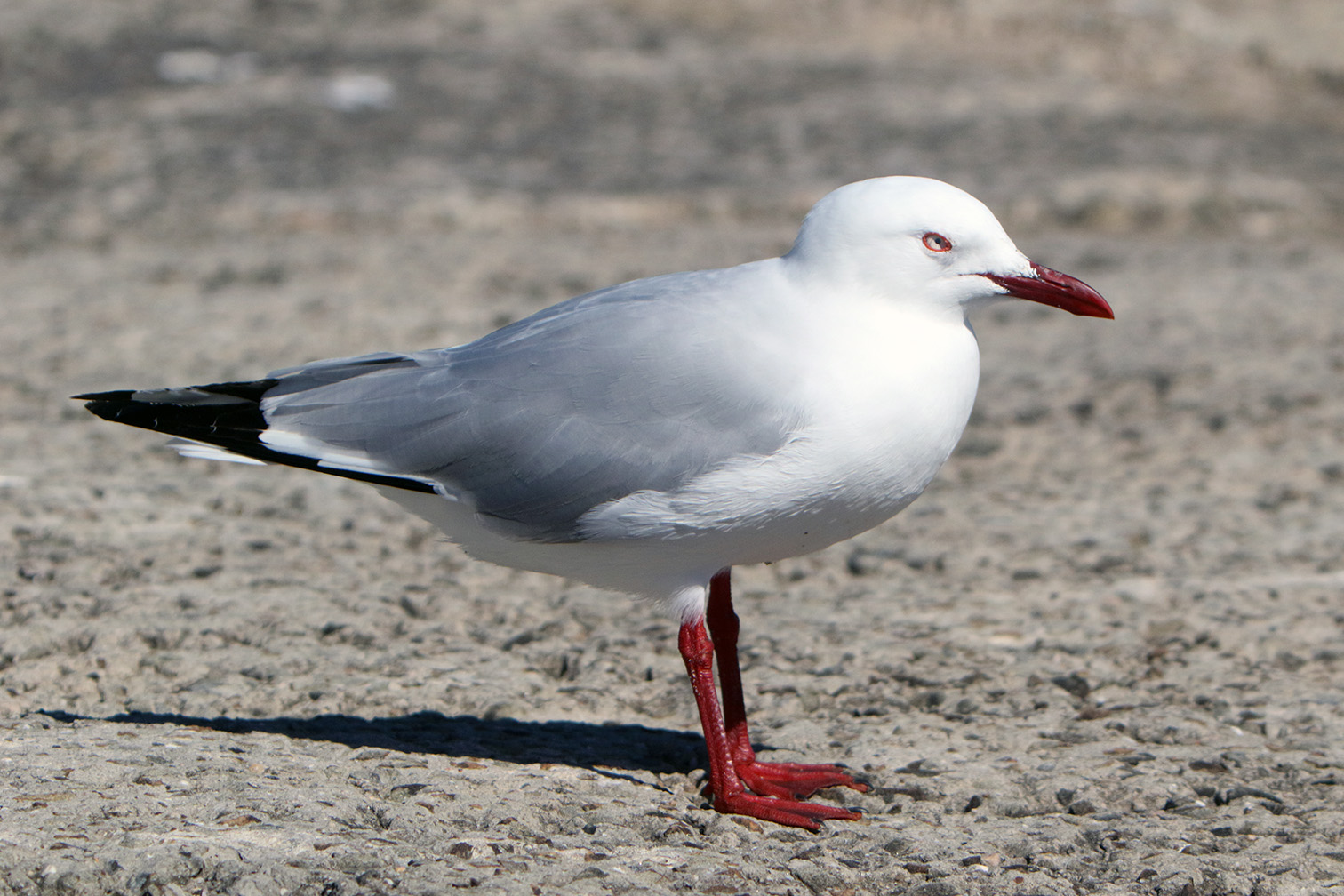 |
|
Cape Barren Goose
The Cape Barren goose
(Cereopsis novaehollandiae - Hönsgås) is a large goose resident in southern
Australia. The species is named for Cape Barren Island, where specimens were
first sighted by European explorers. It is restricted to the south-eastern
coast of Australia, the southern coast of Western Australia and in
south-eastern Victoria where it is found on offshore islands in areas of
pasture, tussock grass or low healthy scrub.
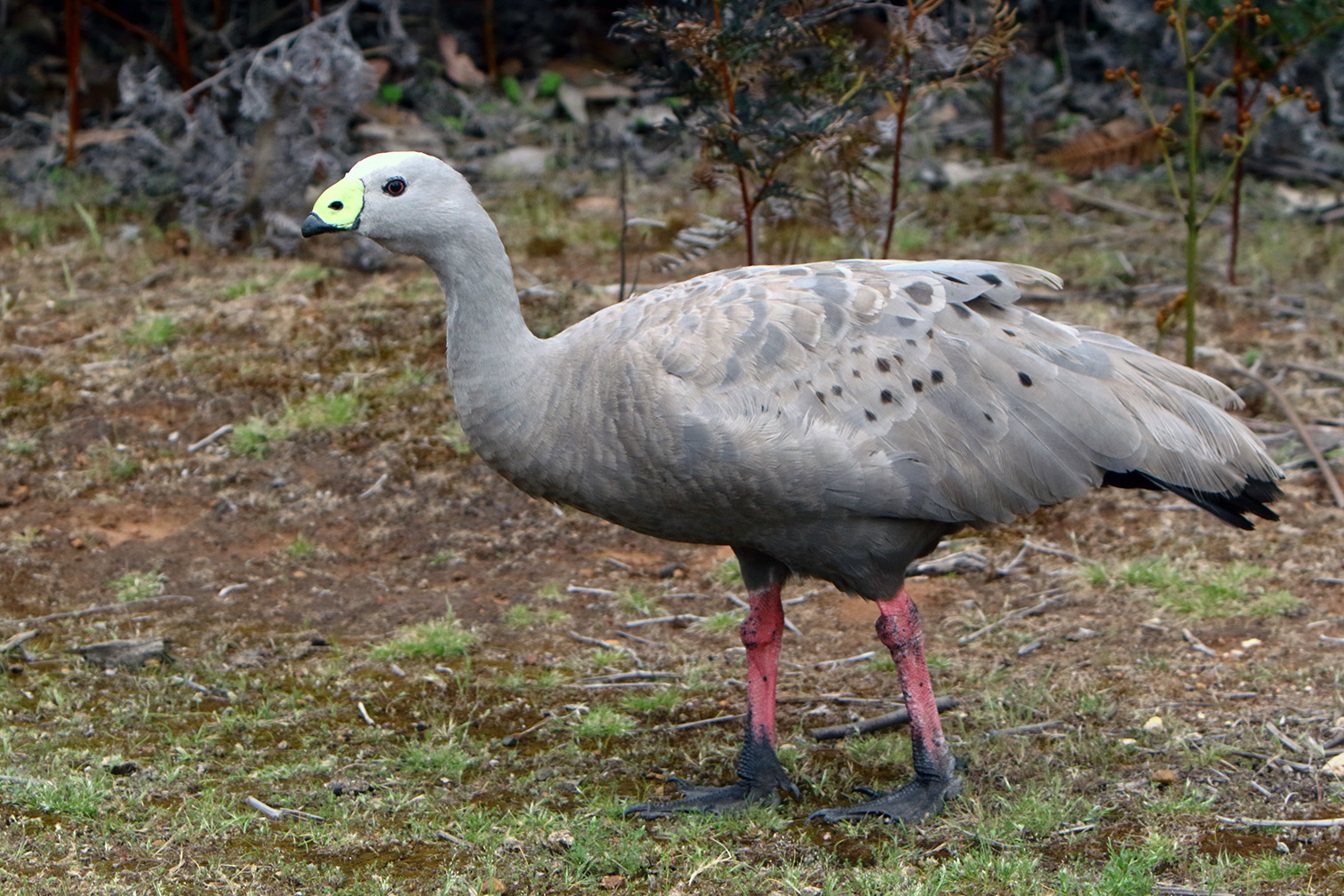 |
|
Pacific Gull
The Pacific gull (Larus
pacificus - Grovnäbbad trut) is a very large gull, native to the coasts of
Australia. It is moderately common between Carnarvon in the west, and Sydney
in the east, although it has become scarce in some parts of the south-east,
as a result of competition from the kelp gull, which has "self-introduced"
since the 1940s. Much larger than the ubiquitous silver gull, and nowhere
near as common, Pacific gulls are usually seen alone or in pairs, loafing
around the shoreline, steadily patrolling high above the edge of the water,
or (sometimes) zooming high on the breeze to drop a shellfish or sea urchin
onto rocks.
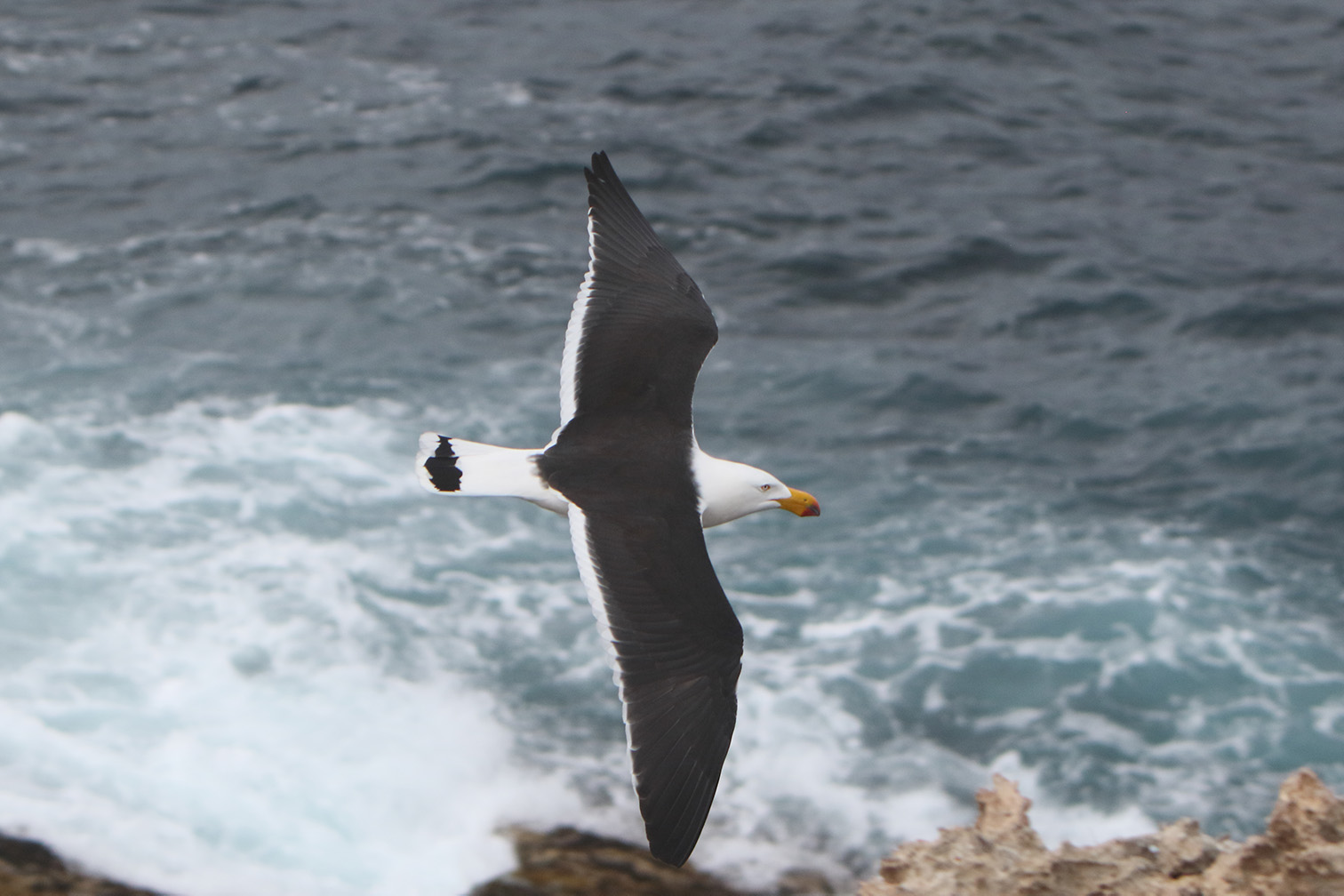 |
|
Australian Pelican
The Australian pelican
(Pelecanus conspicillatus - Australisk pelikan) is a large waterbird of the
family Pelecanidae, widespread on the inland and coastal waters of Australia
and New Guinea, also in Fiji, parts of Indonesia and as a vagrant in New
Zealand. It is a predominantly white bird with black wings and a pink bill.
It has been recorded as having the longest bill of any living bird. It
mainly eats fish, but will also consume birds and scavenges for scraps.
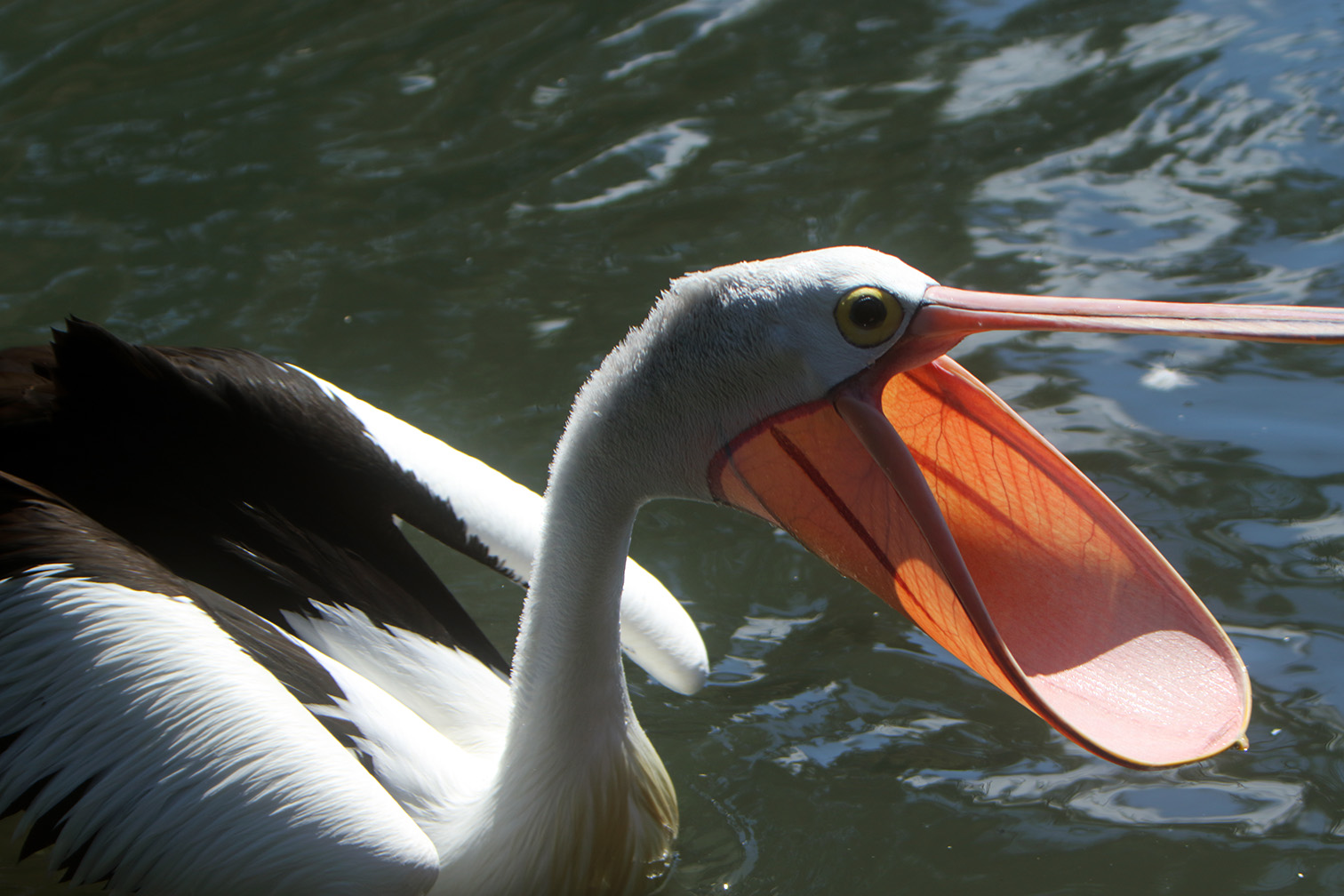 |
|
New Holland Honeyeater
The New
Holland honeyeater (Phylidonyris novaehollandiae - Vitögd honungsfågel)
is a honeyeater species found throughout southern Australia. It was among
the first birds to be scientifically described in Australia, and was
initially named Certhia novaehollandiae. It is a very active bird and rarely
sits long enough to give an extended view. When danger approaches a New
Holland honeyeater, such as a bird of prey, a group of honeyeaters will form
together and give a warning call.
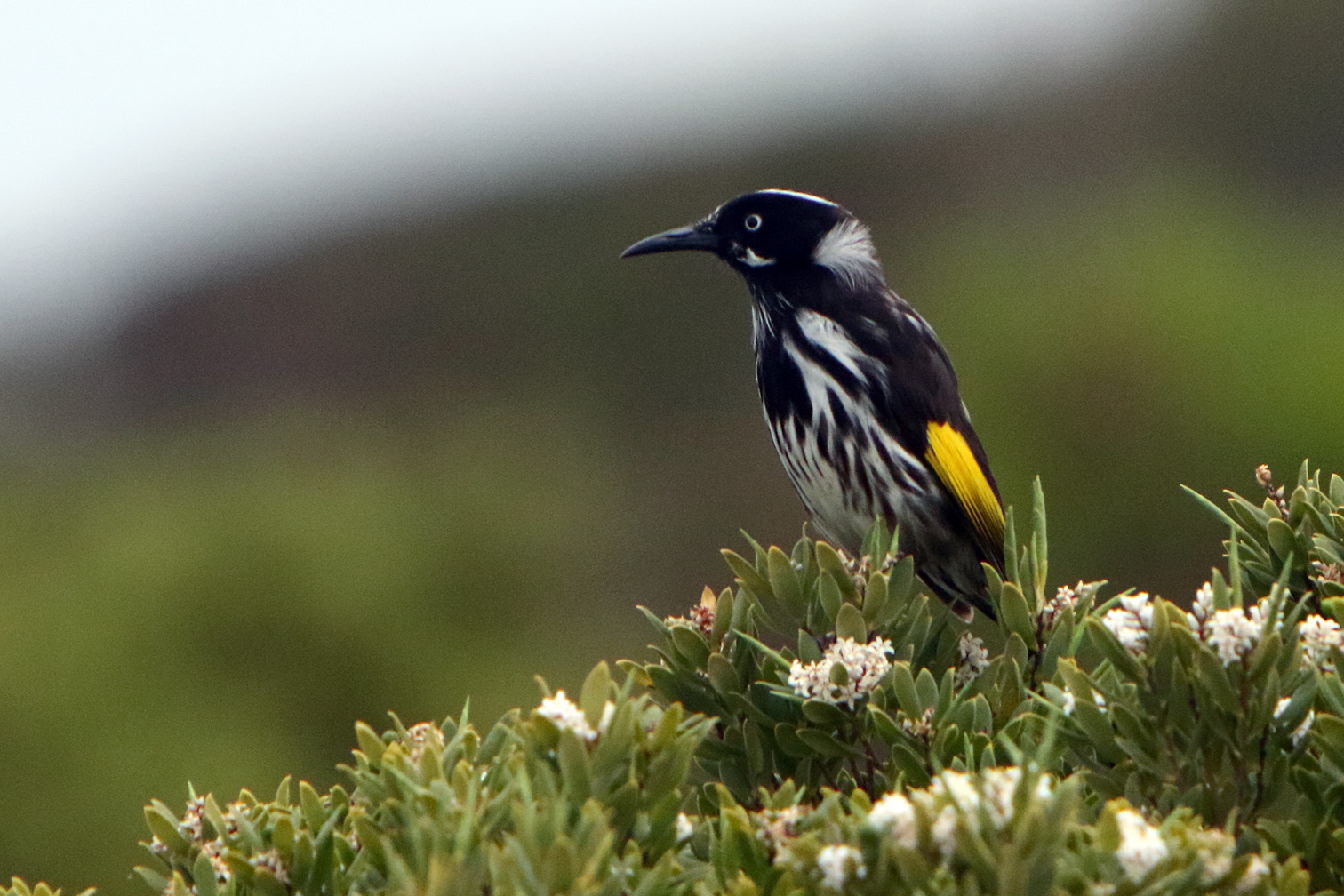 |
|
Galah
The galah (Eolophus roseicapilla
- Rosenkakadua), also known as the rose-breasted cockatoo, galah cockatoo,
roseate cockatoo or pink and grey, is one of the most common and widespread
cockatoos, and it can be found in open country in almost all parts of
mainland Australia. It is endemic on the mainland and was introduced to
Tasmania, where its distinctive pink and grey plumage and its bold and loud
behavior make it a familiar sight in the bush and increasingly in urban
areas. It appears to have benefited from the change in the landscape since
European colonisation and may be replacing the Major Mitchell's cockatoo in
parts of its range. The term galah is derived from gilaa, a word found in
Yuwaalaraay and neighbouring Aboriginal languages.
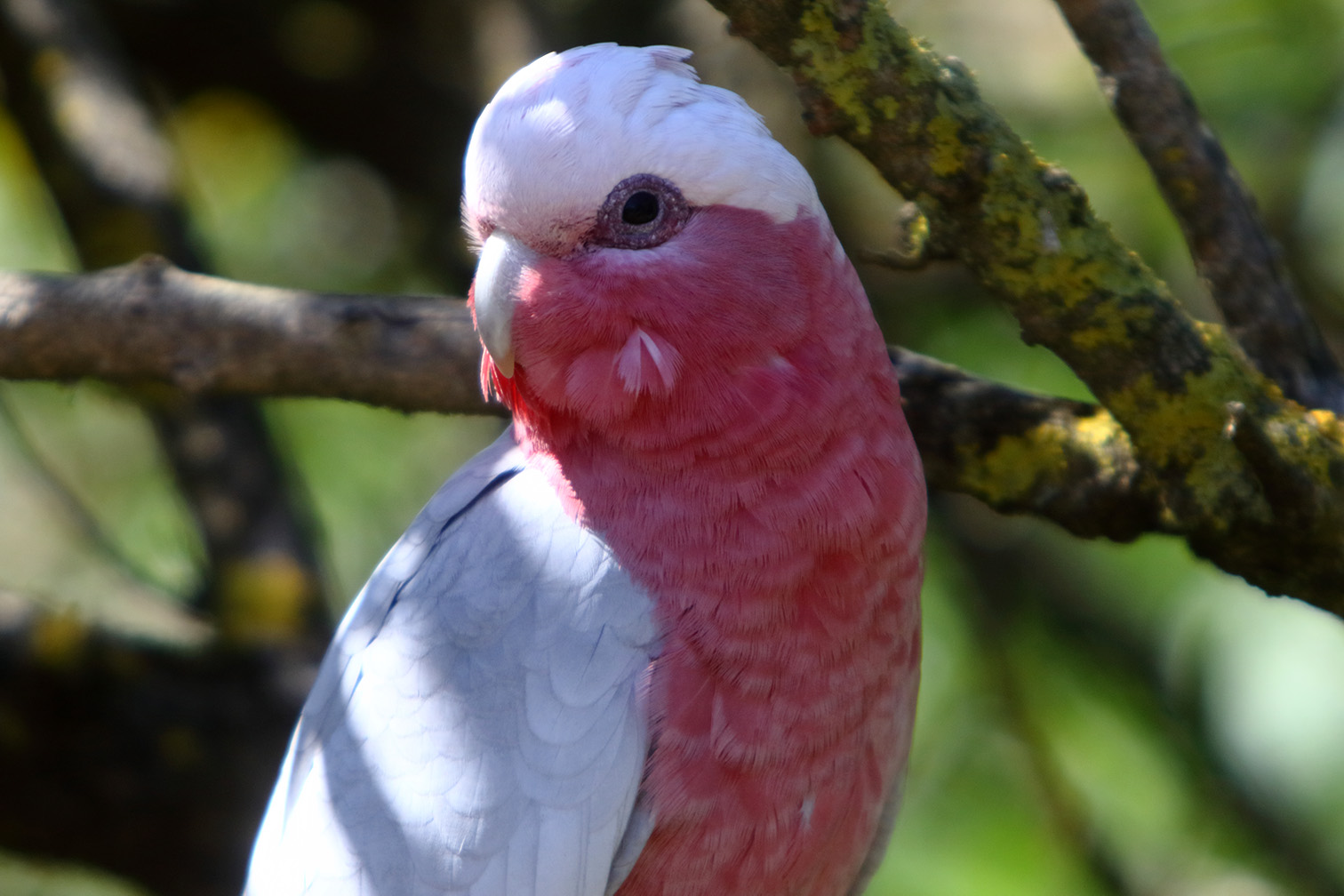 |
|
Silvereye
The silvereye or
wax-eye (Zosterops lateralis - Gråryggig glasögonfågel) is a very small
omnivorous passerine bird of the south-west pacific. In Australia and New
Zealand its common name is sometimes white-eye, but this name is more
commonly used to refer to all members of the genus Zosterops, or the entire
family Zosteropidae.
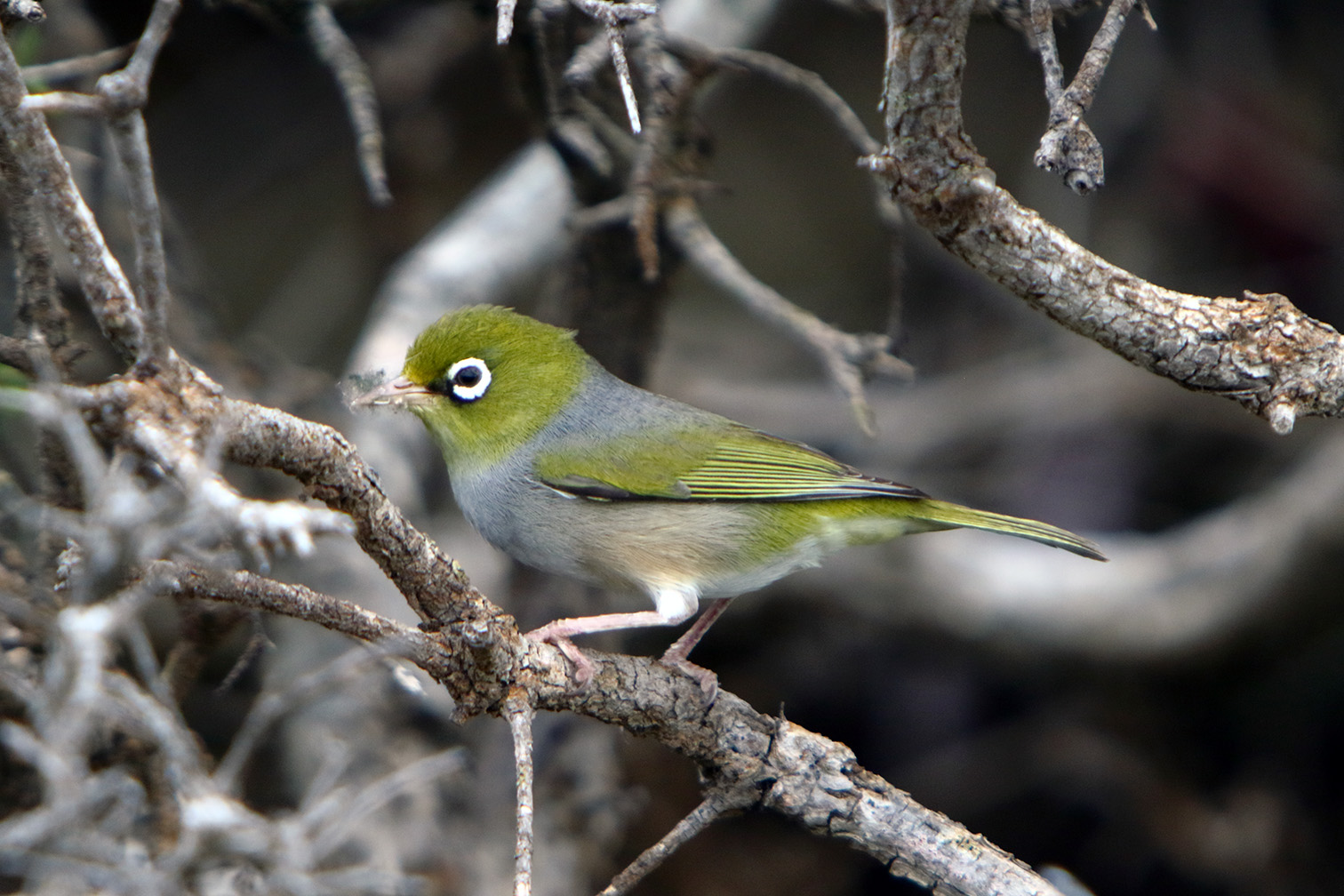 |
|
Australian Shelduck
The Australian shelduck
(Tadorna tadornoides - Australisk gravand), also known as the mountain duck,
is a shelduck part of the bird family Anatidae. The genus name Tadorna comes
from Celtic roots and means "pied waterfowl". They are protected under the
National Parks and Wildlife Act, 1974. The males are mostly dark, with a
chestnut breast. They have white neck collars and dark green heads. The
females are similar, but they have white around the eyes and are smaller.
Both males and females show a white wing during flight. The Australian
shelduck mainly breeds in southern Australia and Tasmania and is still
fairly common.
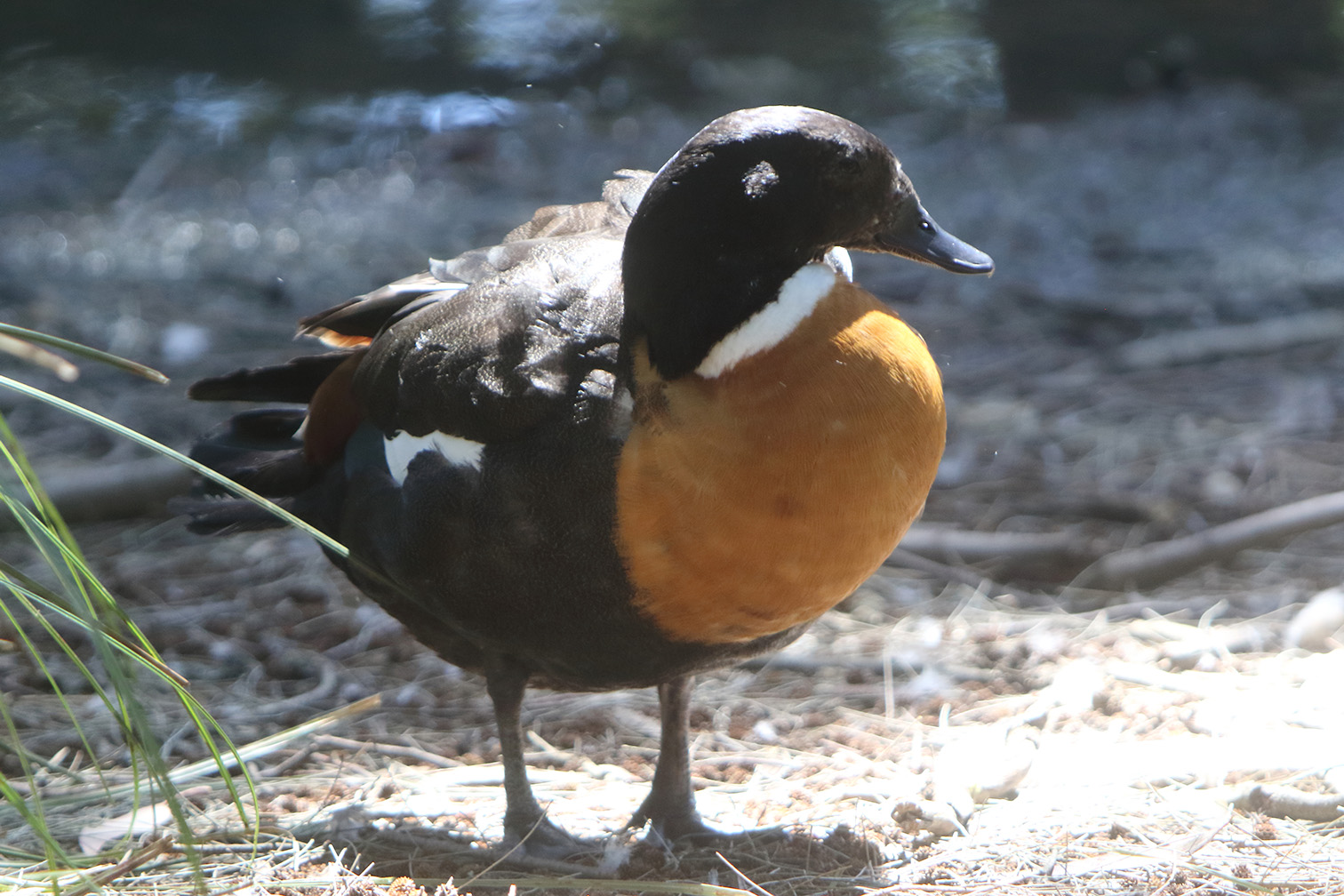 |
|
Red Wattlebird
The red wattlebird
(Anthochaera carunculata - Rödflikig honungsfågel) is a passerine bird native to southern Australia.
At 33–37 cm (13–14 1⁄2 in) in length, it is the second largest species of
Australian honeyeater. It has mainly grey-brown plumage, with red eyes,
distinctive pinkish-red wattles on either side of the neck, white streaks on
the chest and a large bright yellow patch on the lower belly. The sexes are
similar in plumage. John White described the red wattlebird in 1790; three
subspecies are recognized.
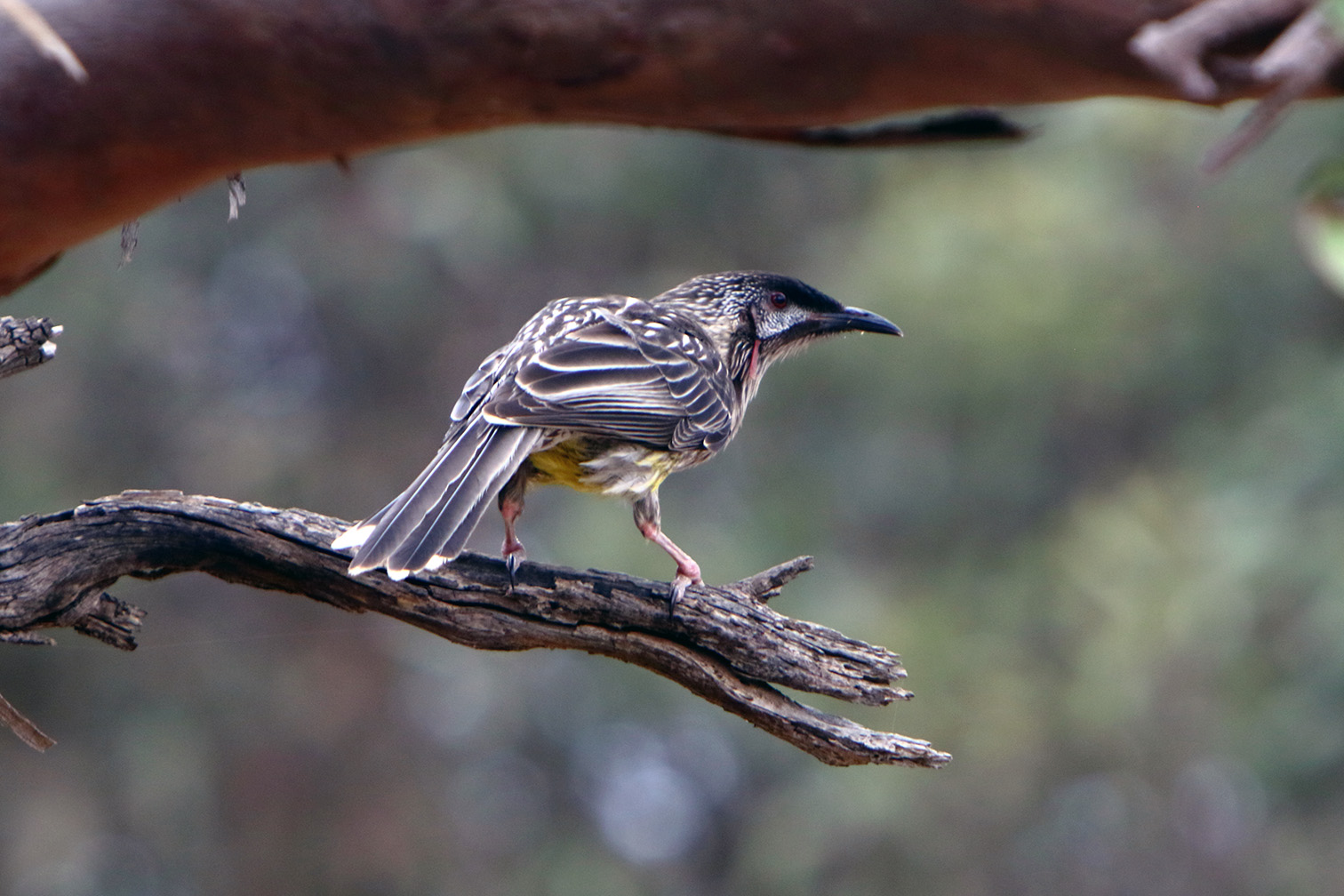 |
|
Sulphur-crested Cockatoo
The
sulphur-crested cockatoo (Cacatua galerita - Större gultofskakadua) is a
relatively large white cockatoo found in wooded habitats in Australia and
New Guinea and some of the islands of Indonesia. They can be locally very
numerous, leading to them sometimes being considered pests. A highly
intelligent bird, they are well known in aviculture, although they can be
demanding pets.
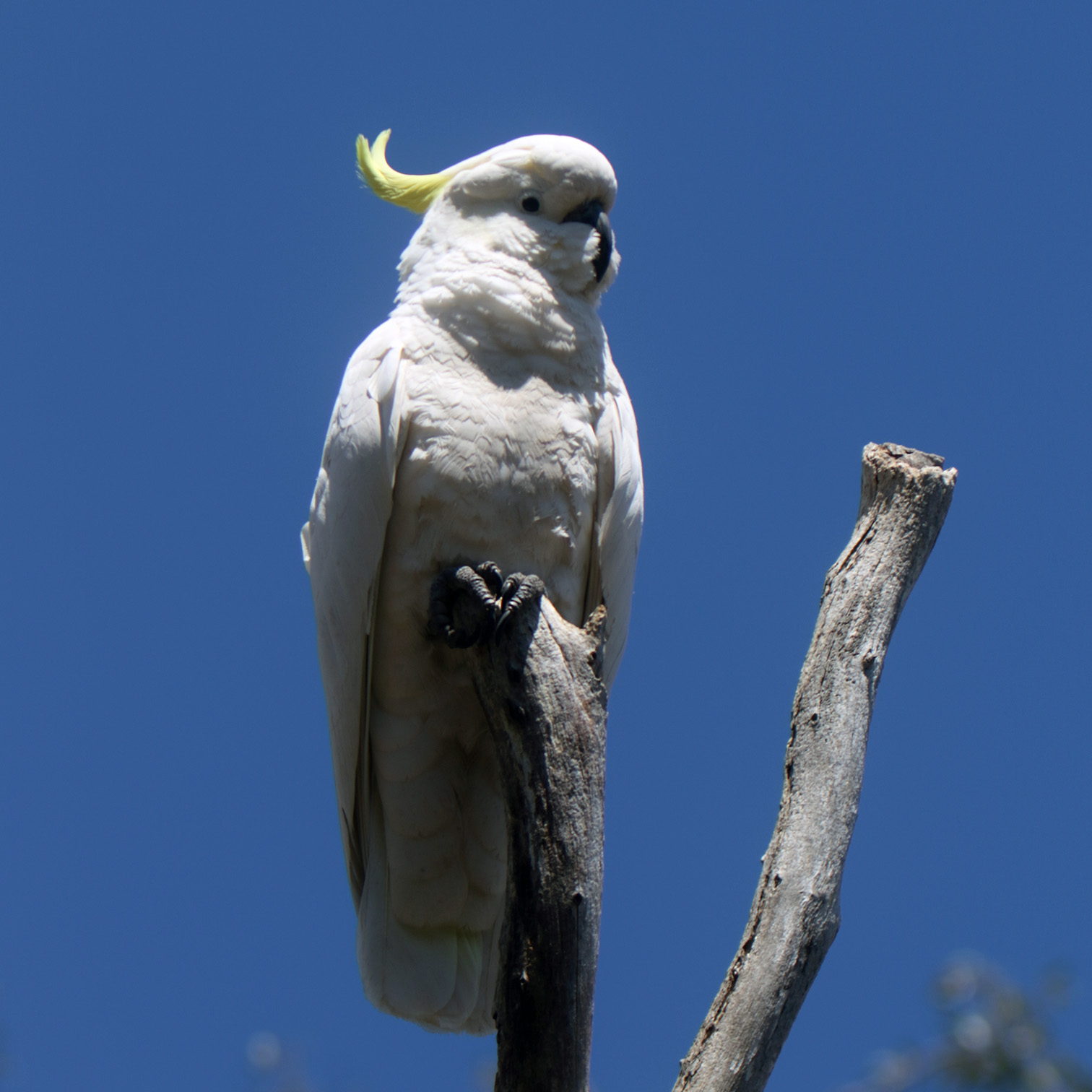 |
|
Pied Oystercatcher
The pied
oystercatcher (Haematopus longirostris - Australisk strandskata) is a
species of oystercatcher. It is a wading bird native to Australia and
commonly found on its coastline. The name "oystercatcher" is something of a
misnomer for this species, because they seldom eat oysters, which are found
mainly on rocky coastlines. Pied oystercatchers frequent sandy coastlines,
where they feed mainly on bivalve molluscs, which are prised apart with
their specially adapted bill. This Australian species is easily recognized
by the characteristic 5–8 cm long orange-red beak, slender pink legs and
black and white plumage. With the wings extended, a white wing-stripe is
also visible.
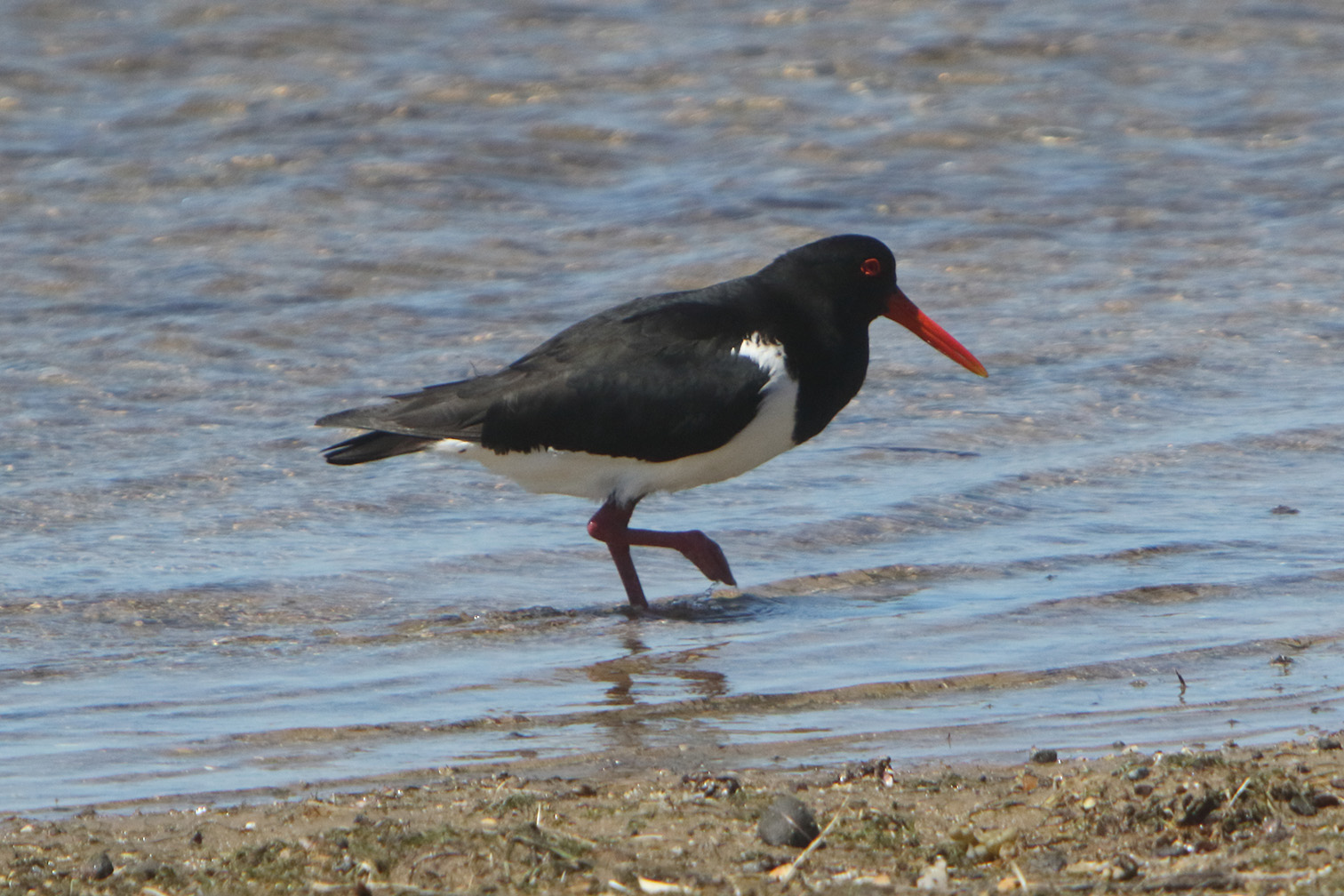 |
|
Zebra Finch
The zebra finch (Taeniopygia
guttata [formerly Poephila guttata] - Zebrafink), is the most common
estrildid finch of Central Australia and ranges over most of the continent,
avoiding only the cool moist south and some areas of the tropical far north.
It can also be found natively in Indonesia and East Timor. The bird has been
introduced to Puerto Rico and Portugal.
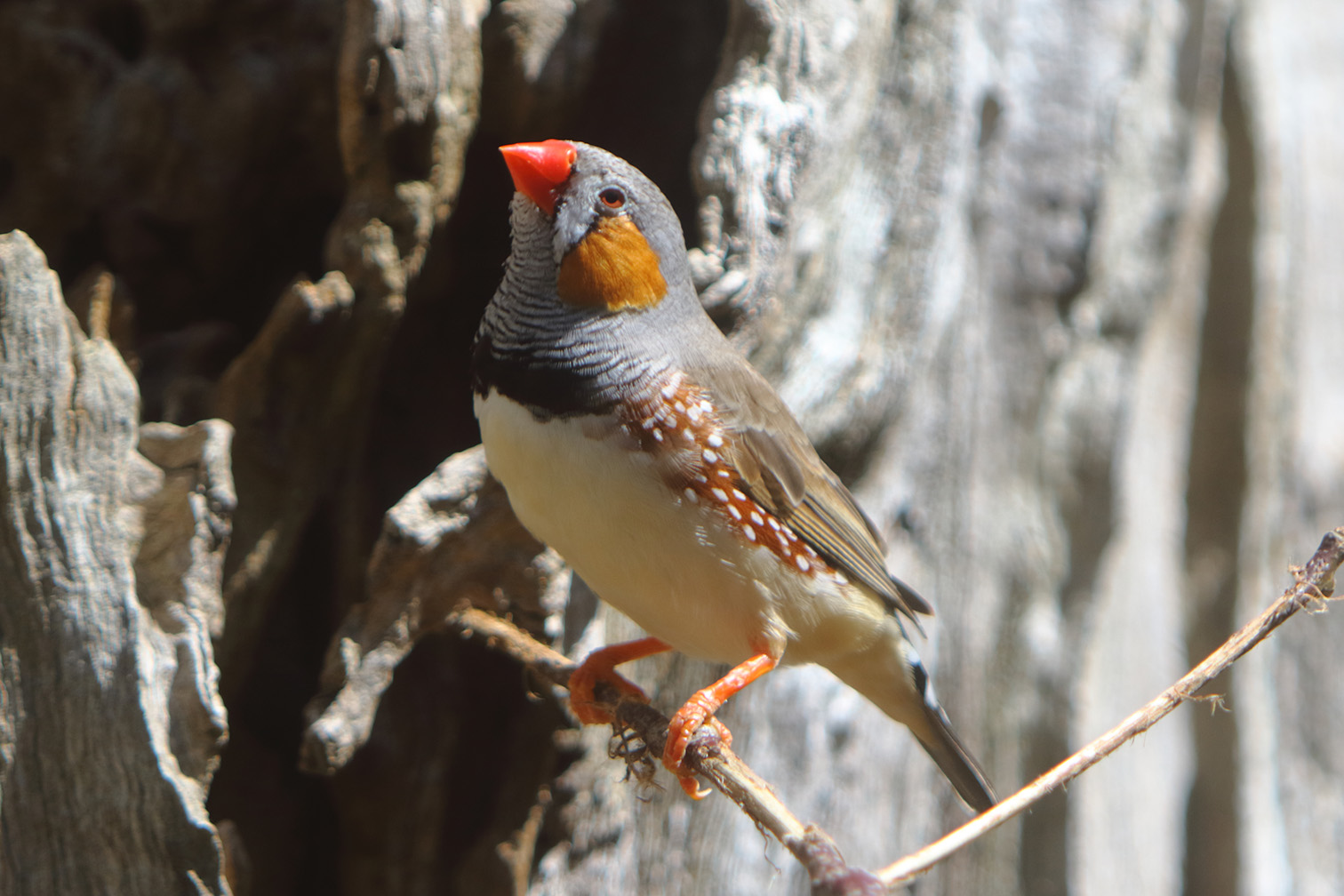 |
|
Crescent Honeyeater
The crescent
honeyeater (Phylidonyris pyrrhopterus - Månbröstad honungsfågel) is a
passerine bird of the honeyeater family, Meliphagidae, native to
southeastern Australia. A member of the genus Phylidonyris, it is most
closely related to the common New Holland honeyeater (P. novaehollandiae)
and the white-cheeked honeyeater (P. niger). Two subspecies are recognized,
with P. p. halmaturinus restricted in range to Kangaroo Island and the Mount
Lofty Ranges in South Australia.
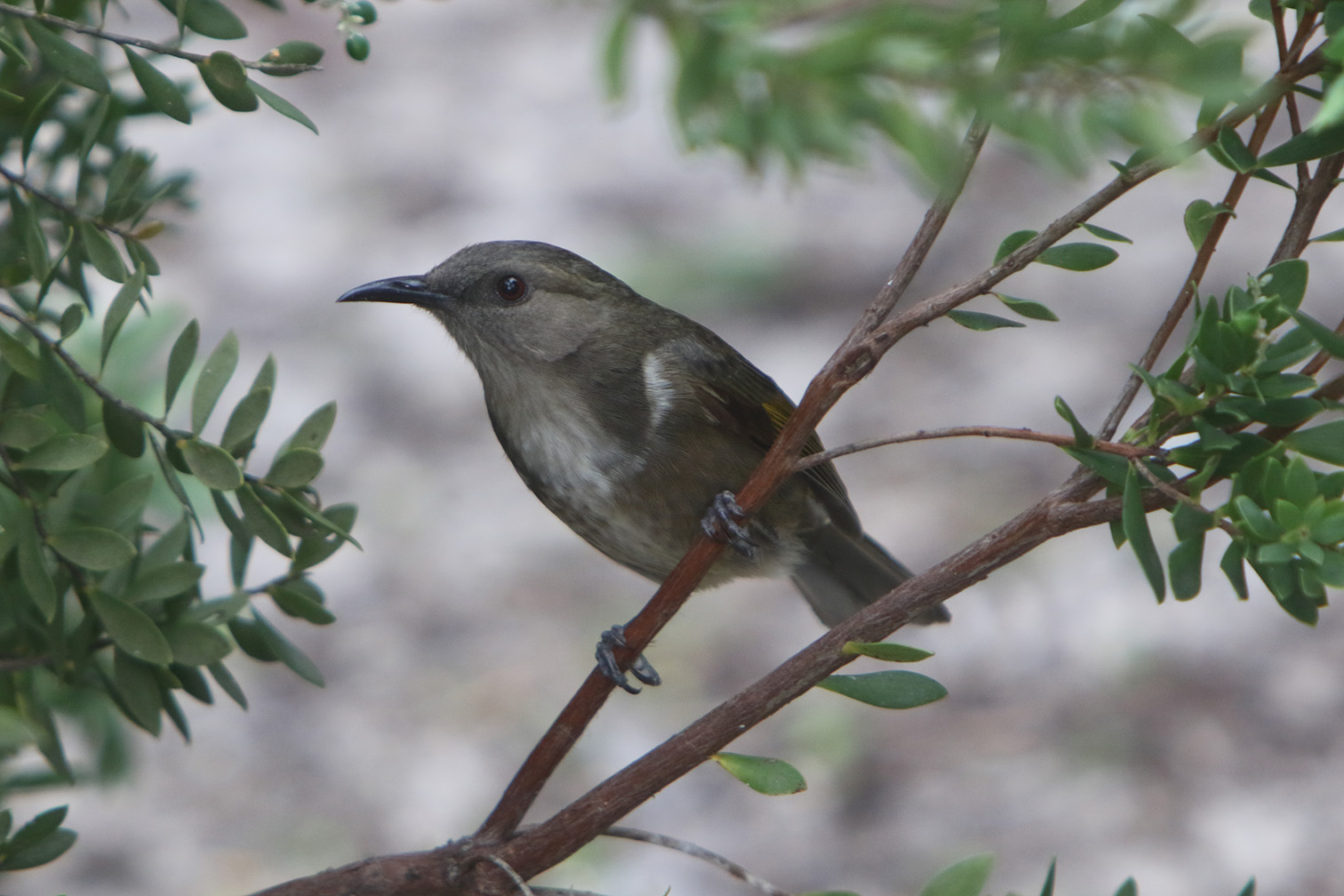 |
|
Apostle Bird
The apostlebird (Struthidea
cinerea - Apostelfågel), also known as the grey jumper, lousy jack or cwa
bird is a quick-moving, gray or black bird about 13 inches (33 centimetres)
long. It is a native to Australia where it roams woodlands, eating insects
and seeds at, or near, ground level. Apostlebirds often travel in groups of
about 12; for this reason they were named after the Biblical apostles, the
twelve chief followers of Jesus Christ.
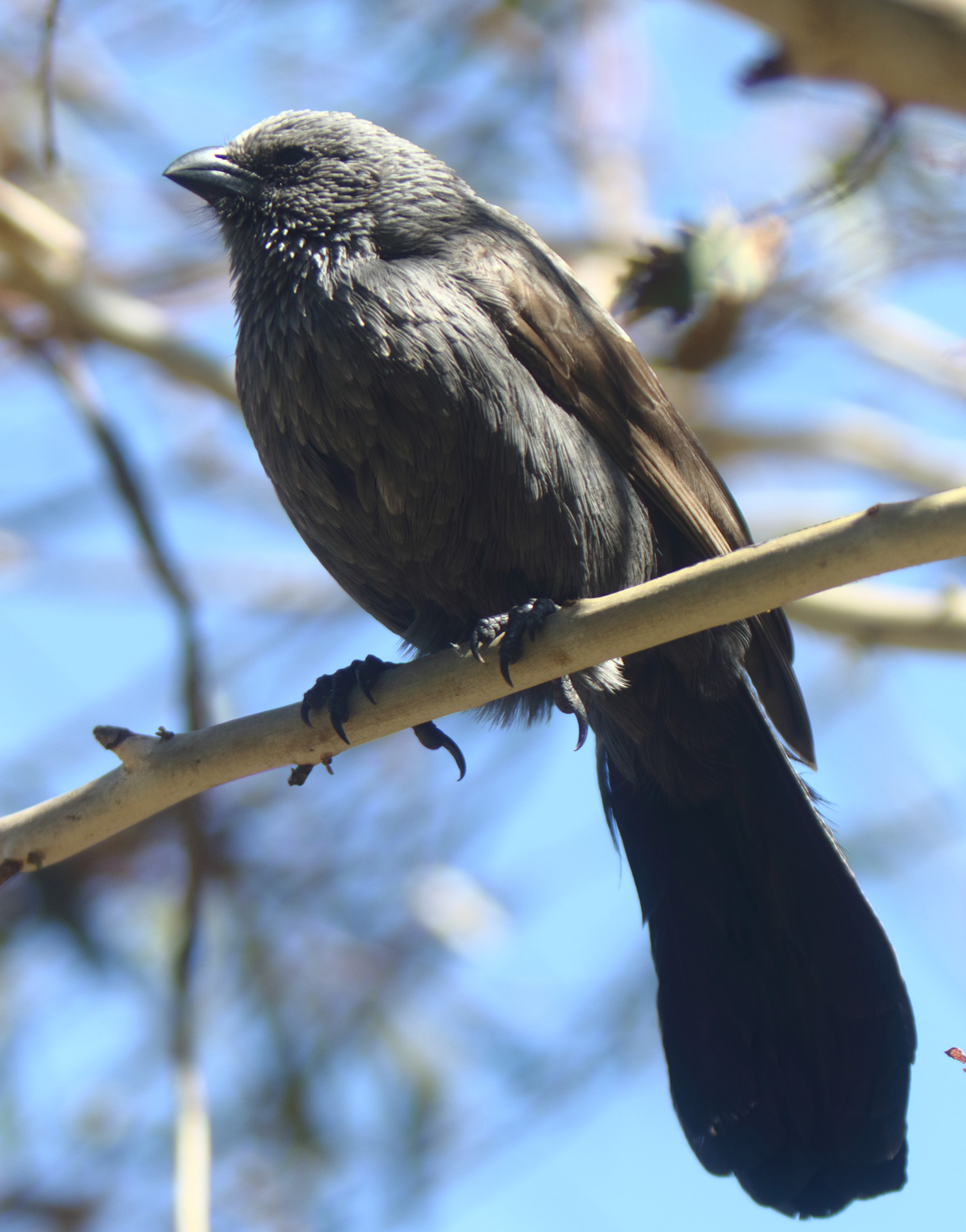 |
|
Tawny-Crowned Honeyeater
The
tawny-crowned honeyeater (Gliciphila melanops - Aprikoskronad
honungsfågel) is a passerine bird native to southern Australia. It was was
originally described by ornithologist John Latham in 1801 as Certhia
melanops. Its specific epithet is derived from the Ancient Greek terms
melano- "black" and ōps "face". DNA analysis has shown honeyeaters to be
related to the Pardalotidae (pardalotes), Acanthizidae (Australian warblers,
scrubwrens, thornbills, etc.), and Maluridae (Australian fairy-wrens) in a
large Meliphagoidea superfamily.
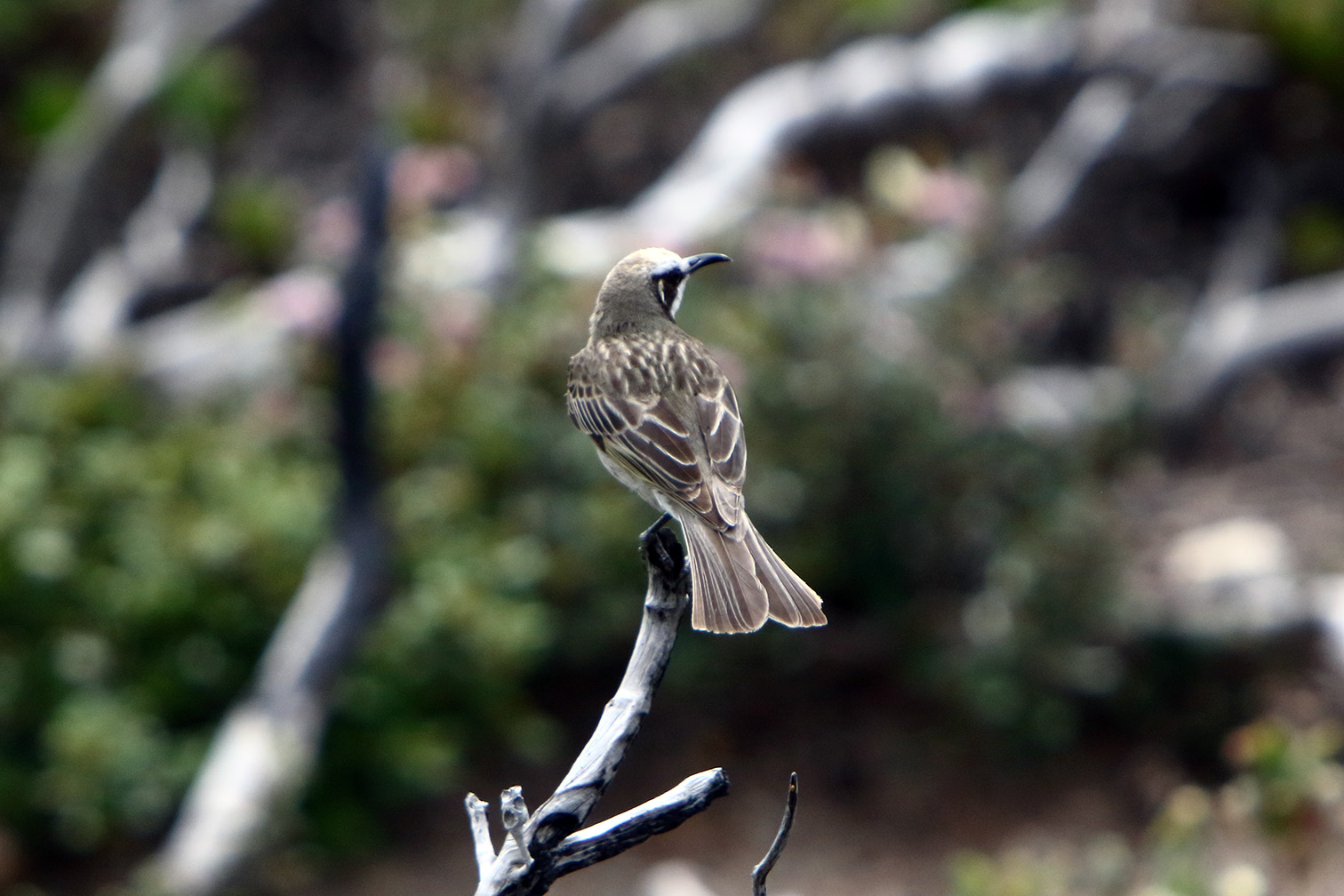 |
|
Peaceful Dove
The peaceful dove
(Geopelia placida - Billabongduva) is a pigeon native to Australia and New
Guinea. The peaceful dove is closely related to the zebra dove of south-east
Asia and the barred dove of eastern Indonesia. Until recently, the three
were classed as a single species, Geopelia striata, known as peaceful dove
or zebra dove.
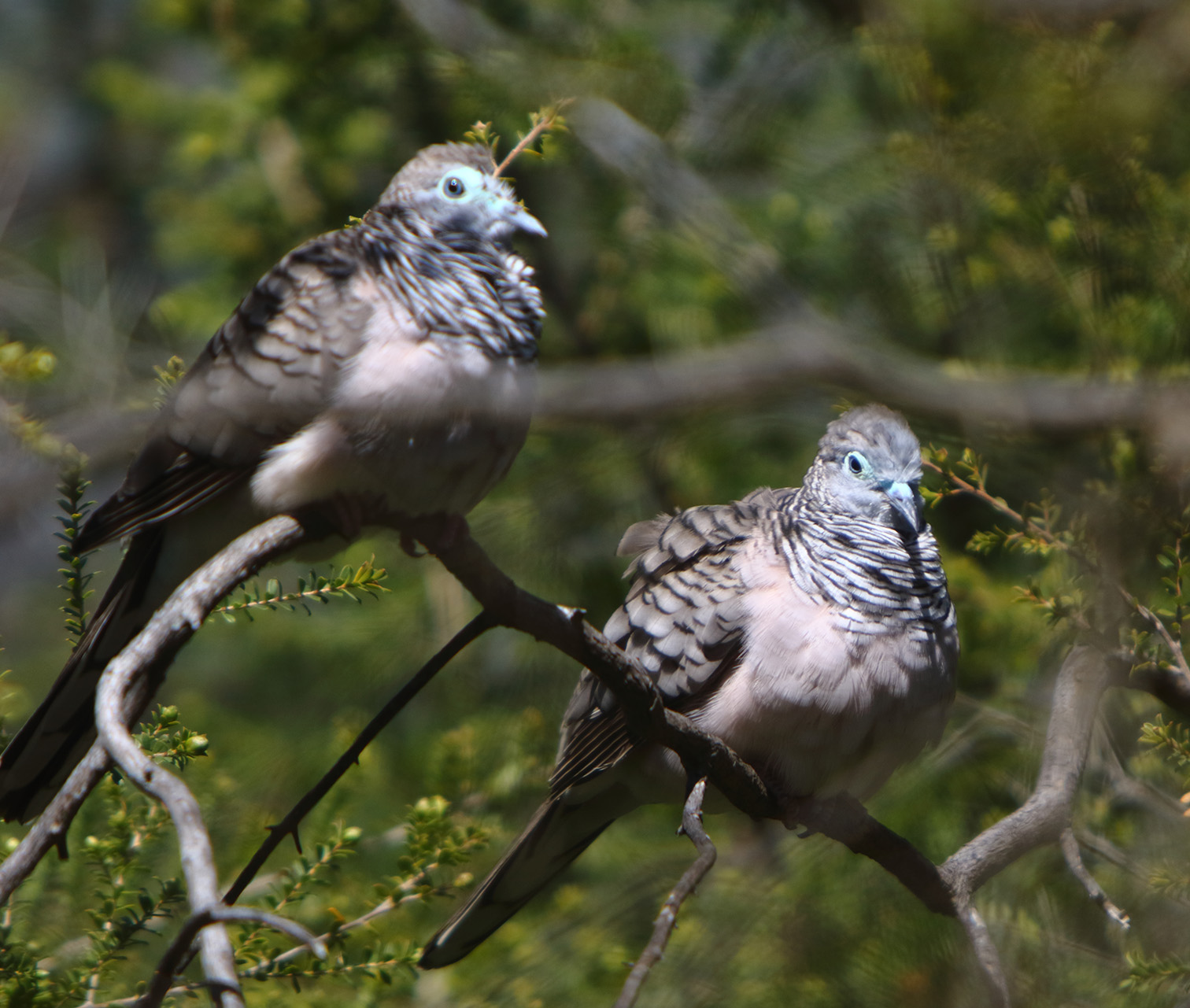 |
|
Australian Fairy Tern
The Australian
fairy tern (Sternula nereis nereis – Australisk småtärna) breeds in
Australia. There are three subspecies of the fairy tern. It is a small tern
which is native to the southwestern Pacific. It is listed as "Vulnerable" by
the IUCN and the New Zealand subspecies is "Critically Endangered". Formerly
classified as a Species of Least Concern by the IUCN, recent research shows
that its numbers have been decreasing rapidly throughout its range.
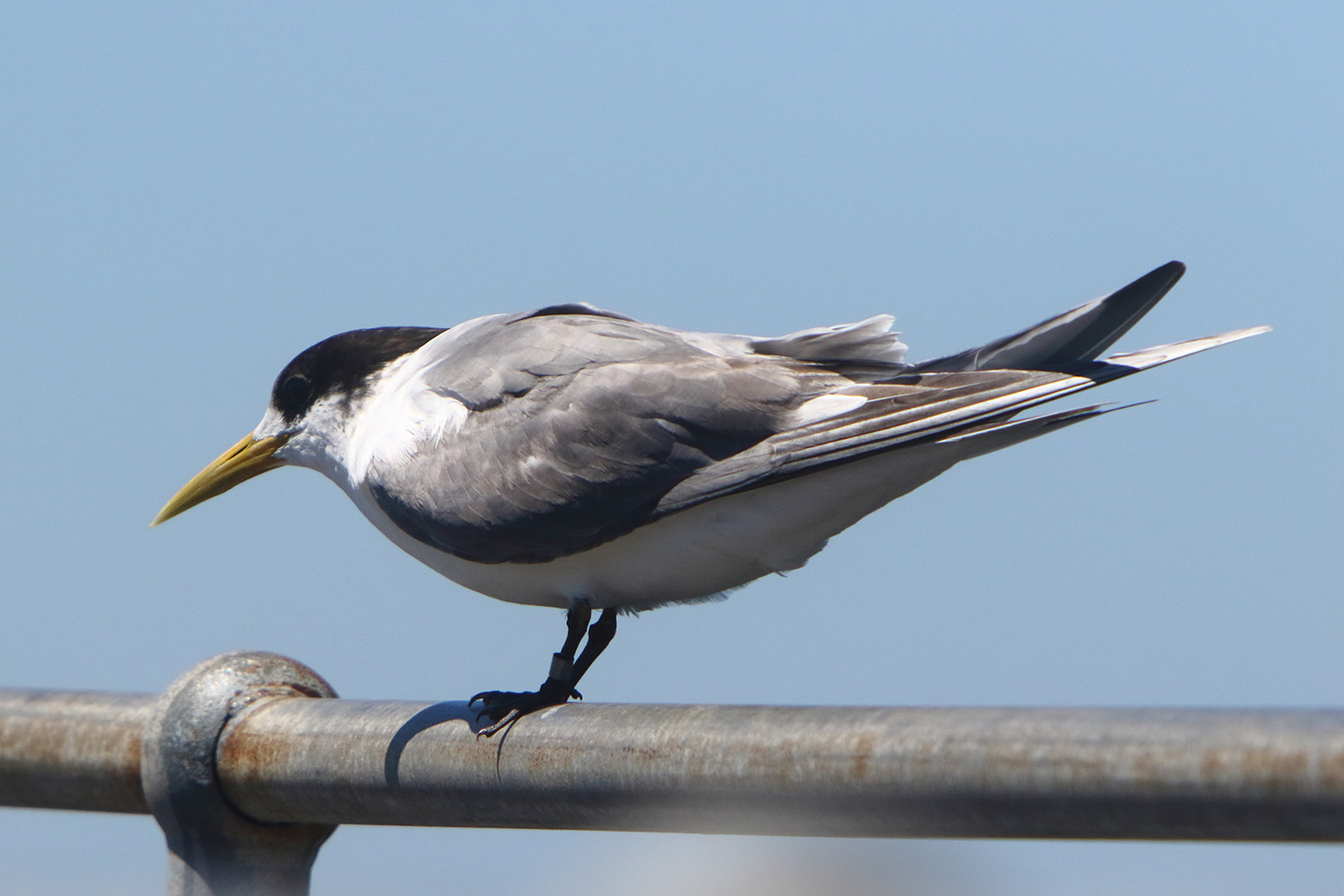 |
|
Diamond Firetail
The diamond
firetail (Stagonopleura guttata - Diamantastrild) is a species of
estrildid finch that is endemic to Australia. Estrildinae may have
originated in India and dispersed thereafter (towards Africa and Pacific
Ocean habitats). This bird is considered one of the smallest of the finches.
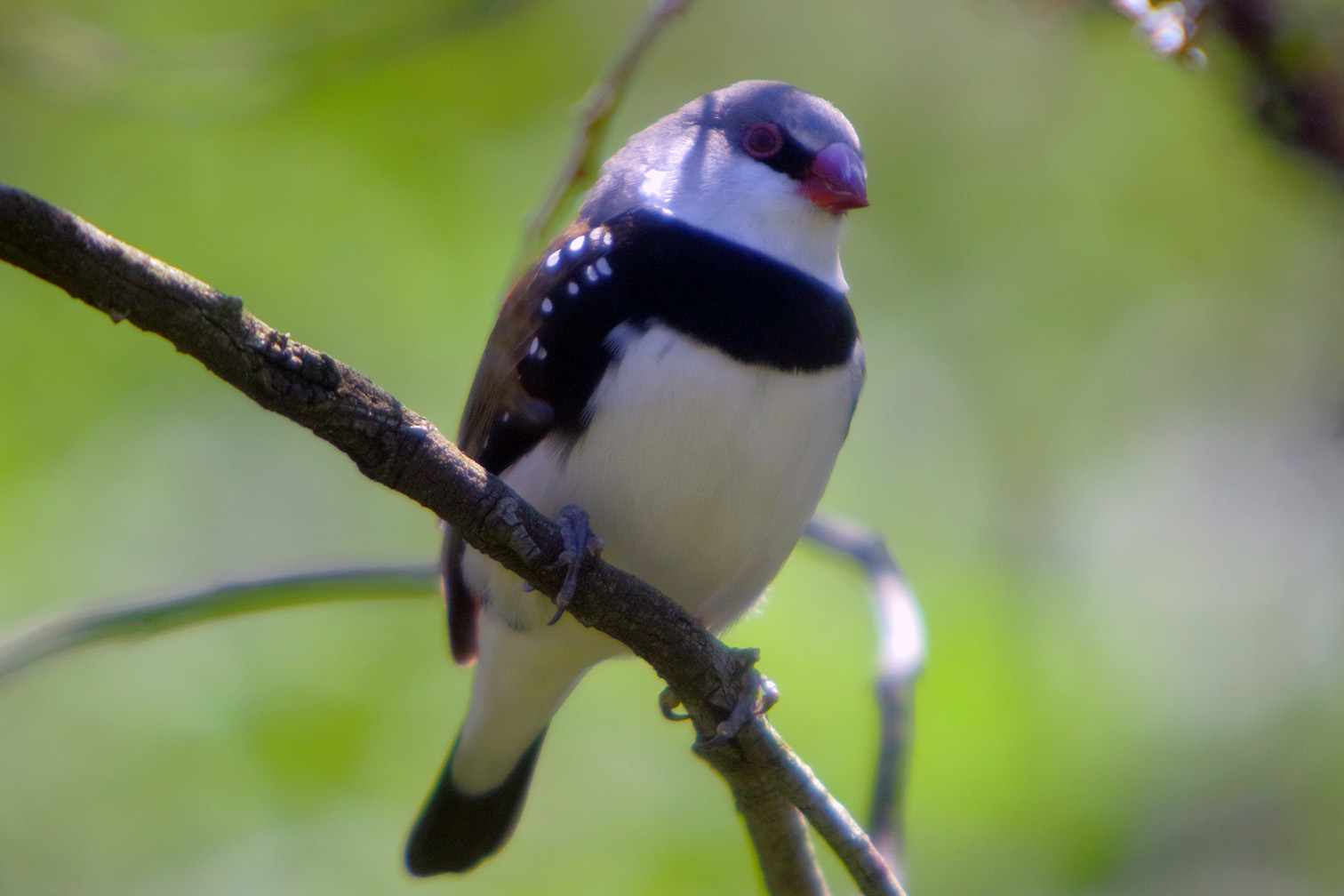 |
|
Little Black Cormorant
The little
black cormorant (Phalacrocorax sulcirostris - Sotskarv) is a member of
the cormorant family of seabirds. It is common in smaller rivers and lakes
throughout most areas of Australia and northern New Zealand, where it is
known as the little black shag. It is around sixty centimetres long, and is
all black with blue-green eyes.
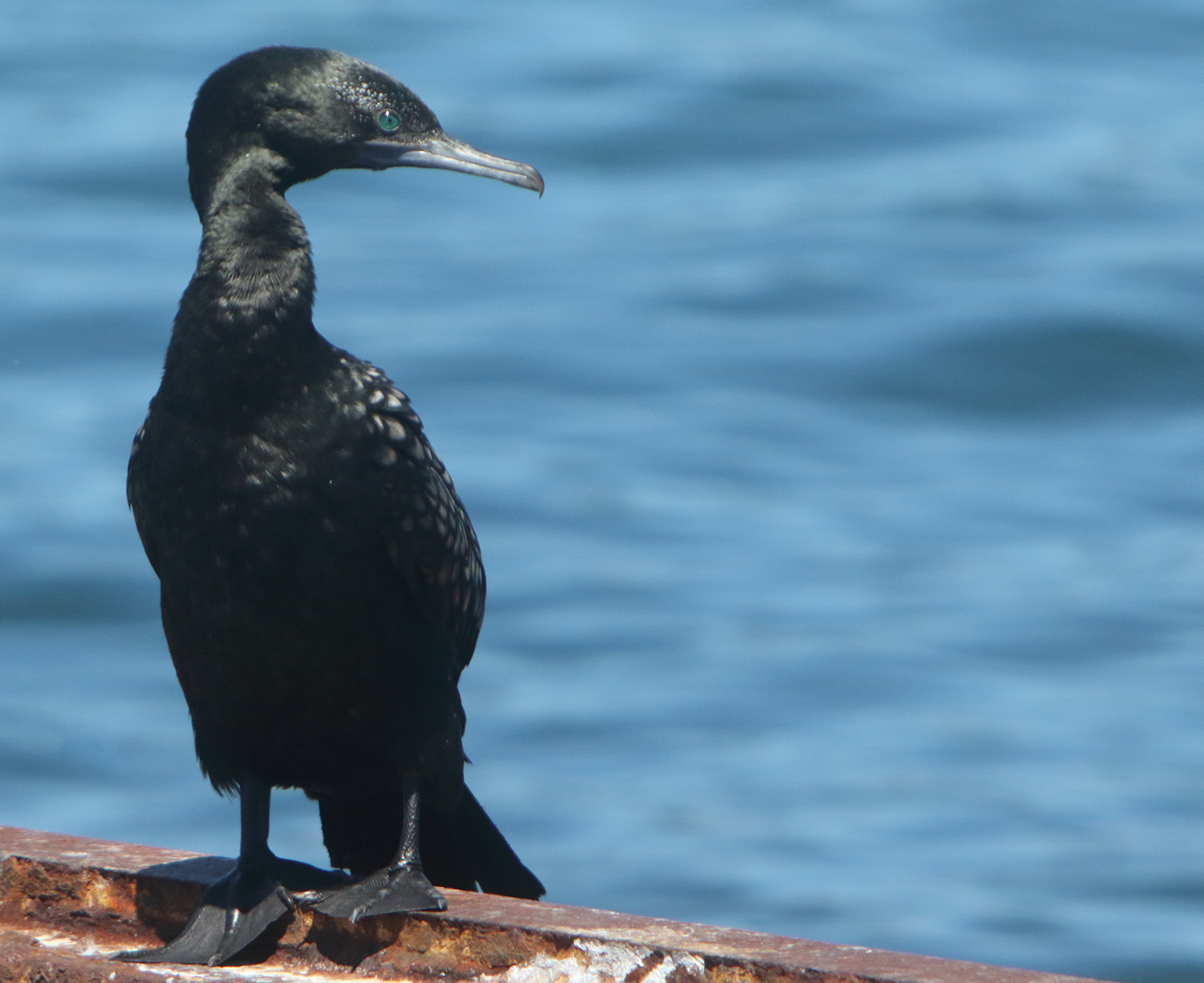 |
|
Hooded Plover
The hooded dotterel
or hooded plover (Thinornis cucullatus - Svarthuvad pipare) is a species
of bird in the family Charadriidae. It is endemic to southern Australia and
Tasmania where it inhabits ocean beaches and subcoastal lagoons. There are
two recognised subspecies, both of which are classified as endangered. Fewer
than 70 Hooded Plovers are left on the Fleurieu Peninsula.
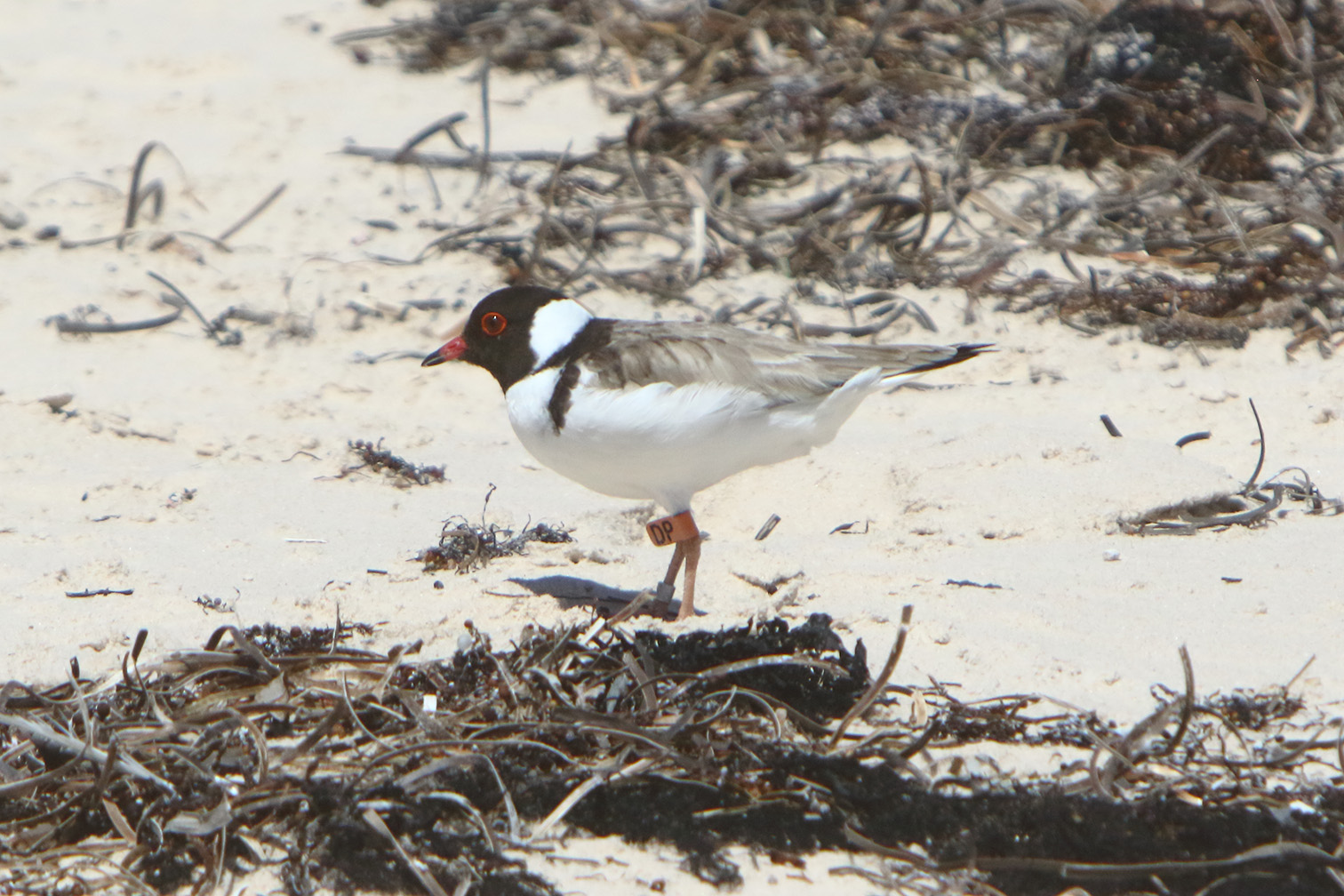 |
|
Australian Pied Cormorant
The
Australian pied cormorant (Phalacrocorax varius - Australisk skarv),
also known as the pied cormorant, pied shag, or great pied cormorant, is a
medium-sized member of the cormorant family. It is found around the coasts
of Australasia. In New Zealand it is usually known either as the pied shag
or by its Māori name of Karuhiruhi. Older sources may refer to it as the
"yellow-faced cormorant".
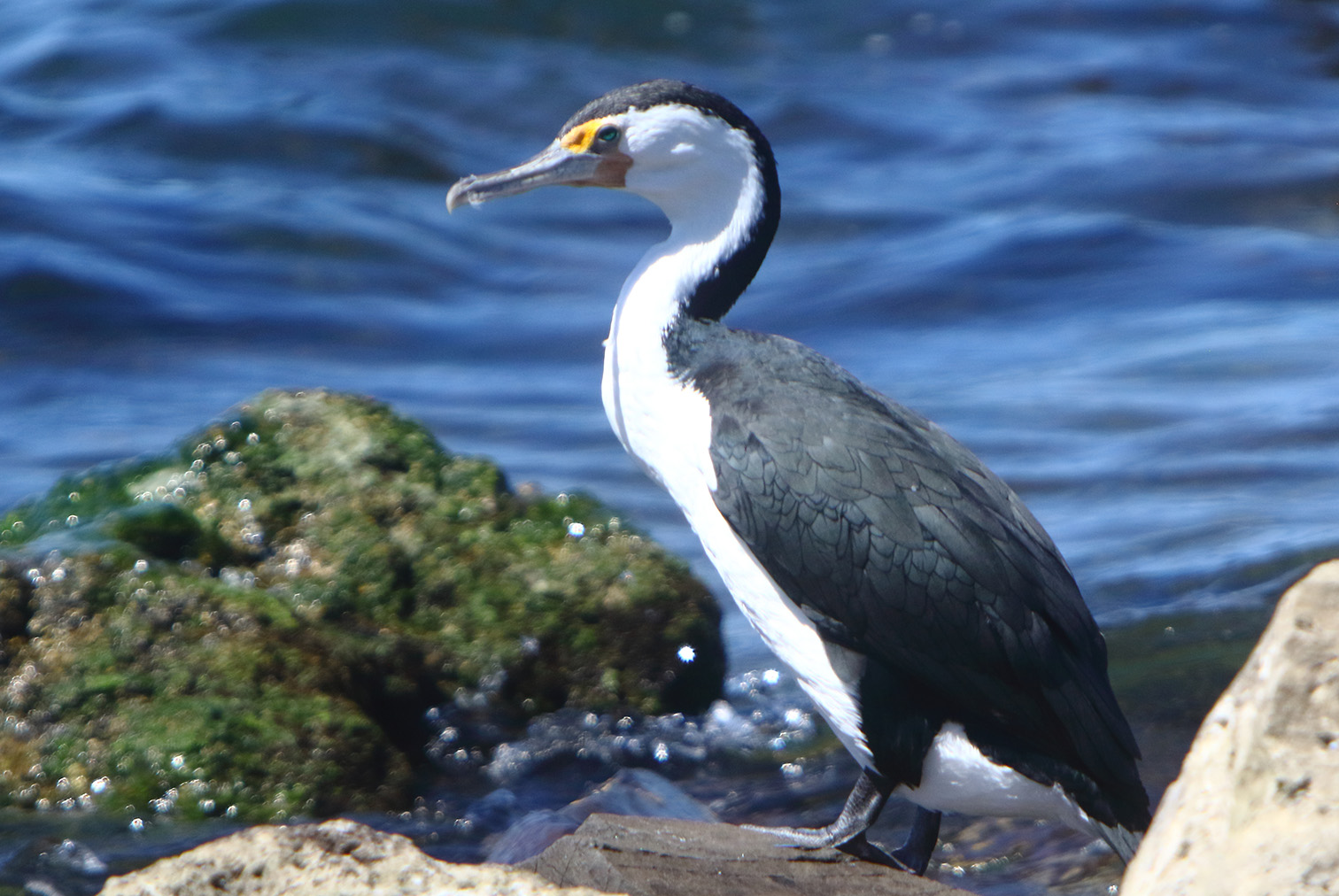 |
|
Grey Fantail
The grey fantail (Rhipidura
albiscapa - Australisk solfjäderstjärt) is a small insectivorous bird. It is
a common fantail found in Australia (except western desert areas), the
Solomon Islands, Vanuatu and New Caledonia. The species is considered by
many to conspecific with (the same as) the New Zealand fantail (Rhipidura
fuliginosa), however due to differences in its calls some authorities now
treat it as a separate species.
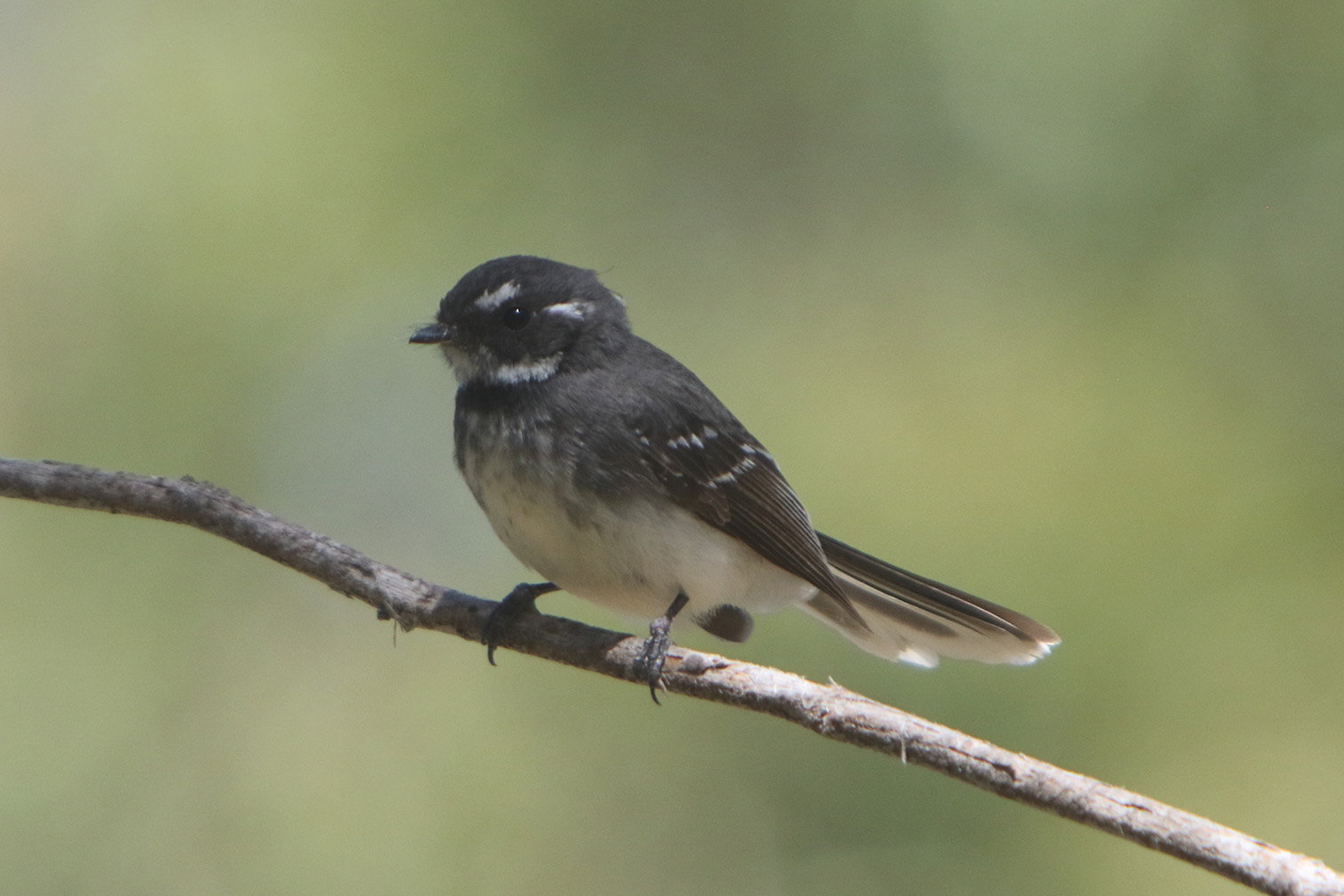 |
|
Crested Tern
The greater
crested tern (Thalasseus bergii - Tofstärna), also called crested tern
or swift tern, is a tern in the family Laridae that nests in dense colonies
on coastlines and islands in the tropical and subtropical Old World. Its
five subspecies breed in the area from South Africa around the Indian Ocean
to the central Pacific and Australia, all populations dispersing widely from
the breeding range after nesting. This large tern is closely related to the
royal and lesser crested terns, but can be distinguished by its size and
bill colour.
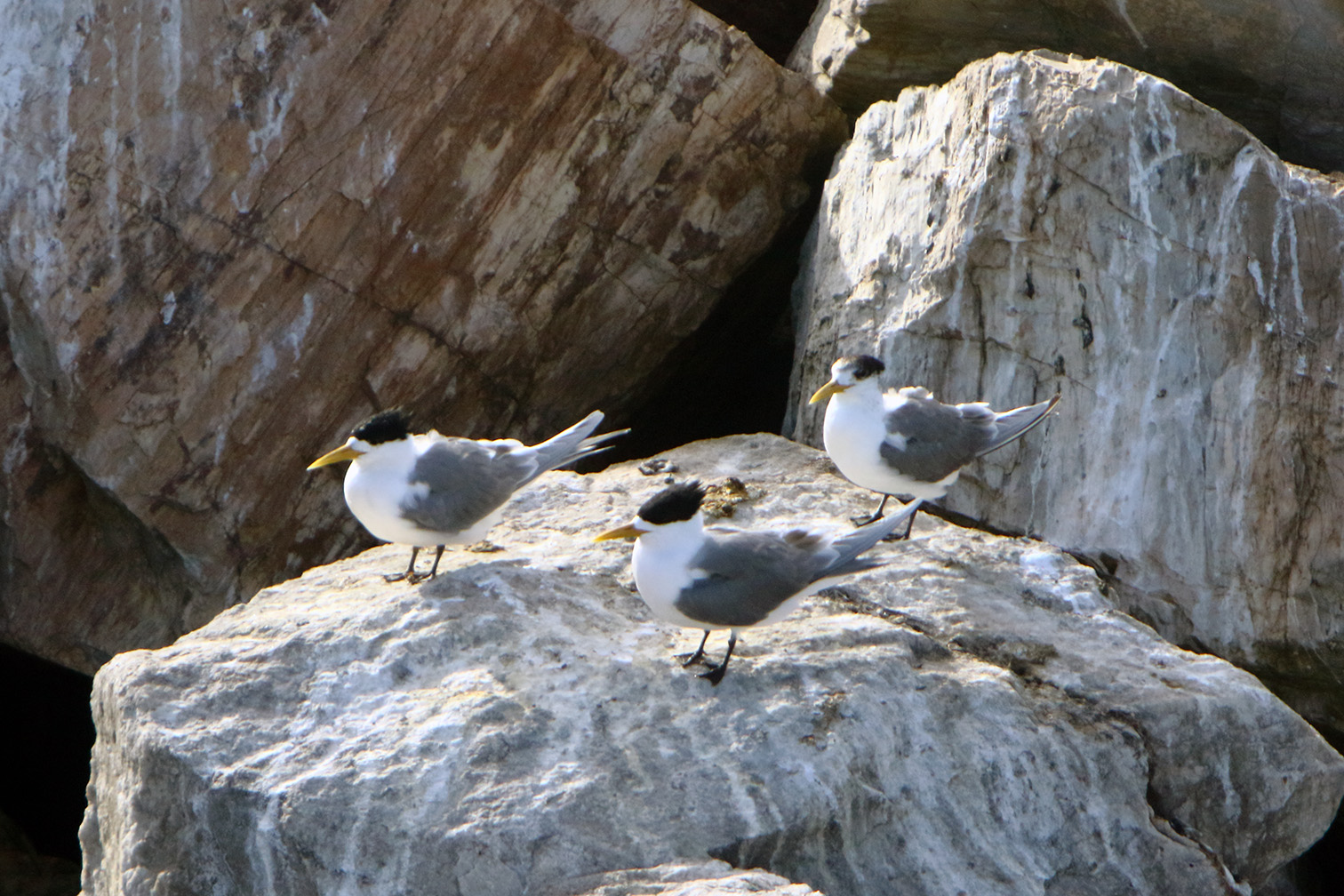 |
|
Wild Tureky
The wild turkey (Meleagris
gallopavo - "Vild" Kalkon) is an upland ground bird native to North America
and is the heaviest member of the diverse Galliformes. Although native to
North America, the turkey probably got its name from the domesticated
variety being imported to Britain in ships coming from the Levant via Spain.
The British at the time therefore associated the wild turkey with the
country Turkey and the name prevails. There are wild populations of some
size following introductions in Germany, Hawaii and New Zealand. And we can
also see the beginning of established wild populations of wild turkey at
several islands in Oceania, for example Kangaroo Island.
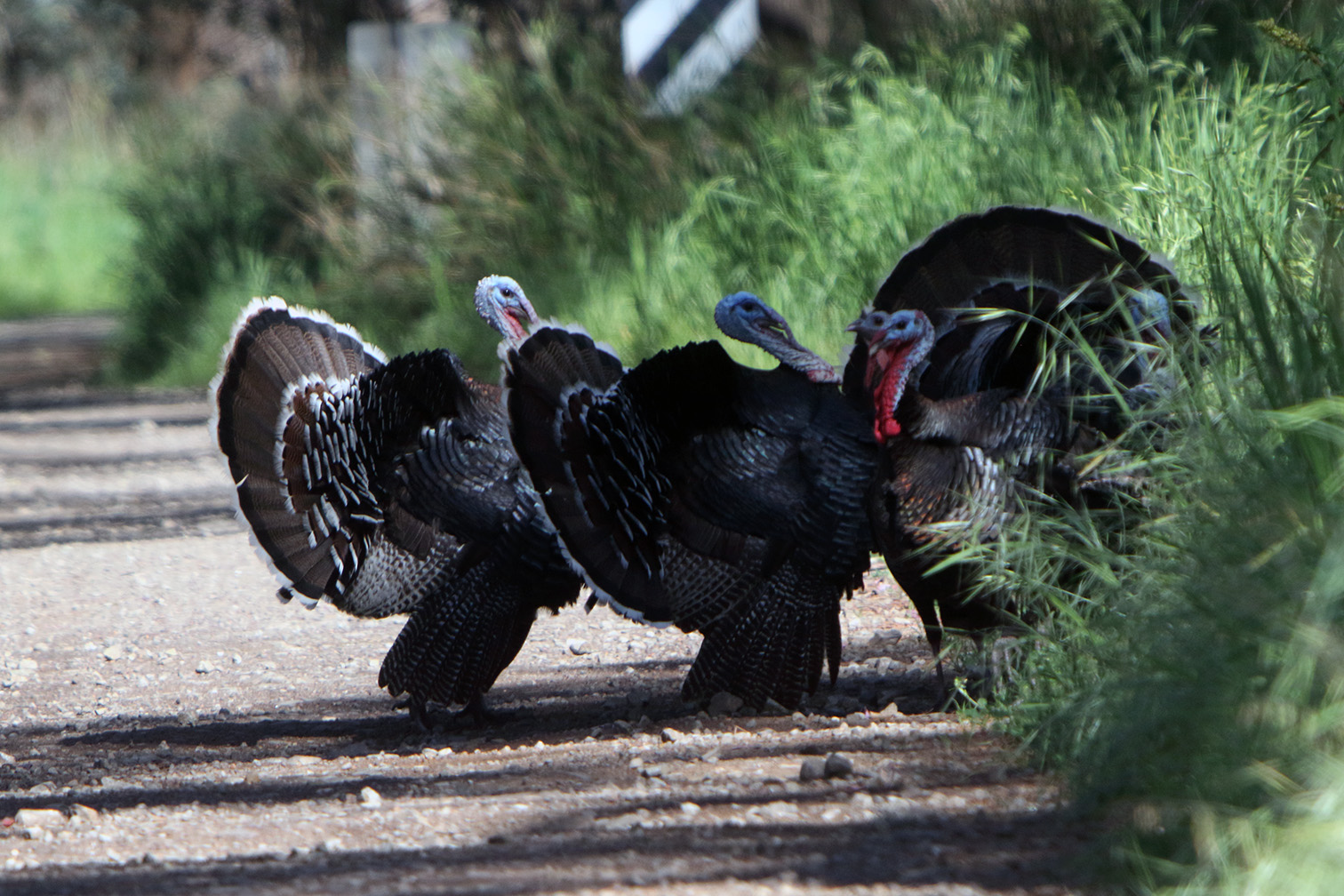 |
|
Little Egret
The little egret (Egretta
garzetta - Silkeshäger) is a species of small heron in the family Ardeidae. The genus name
comes from the Provençal French Aigrette, "egret", a diminutive of Aigron,"
heron". The species epithet garzetta is from the Italian name for this bird,
garzetta or sgarzetta. Its breeding distribution is in wetlands in warm
temperate to tropical parts of Europe, Africa, Asia, and Australia.
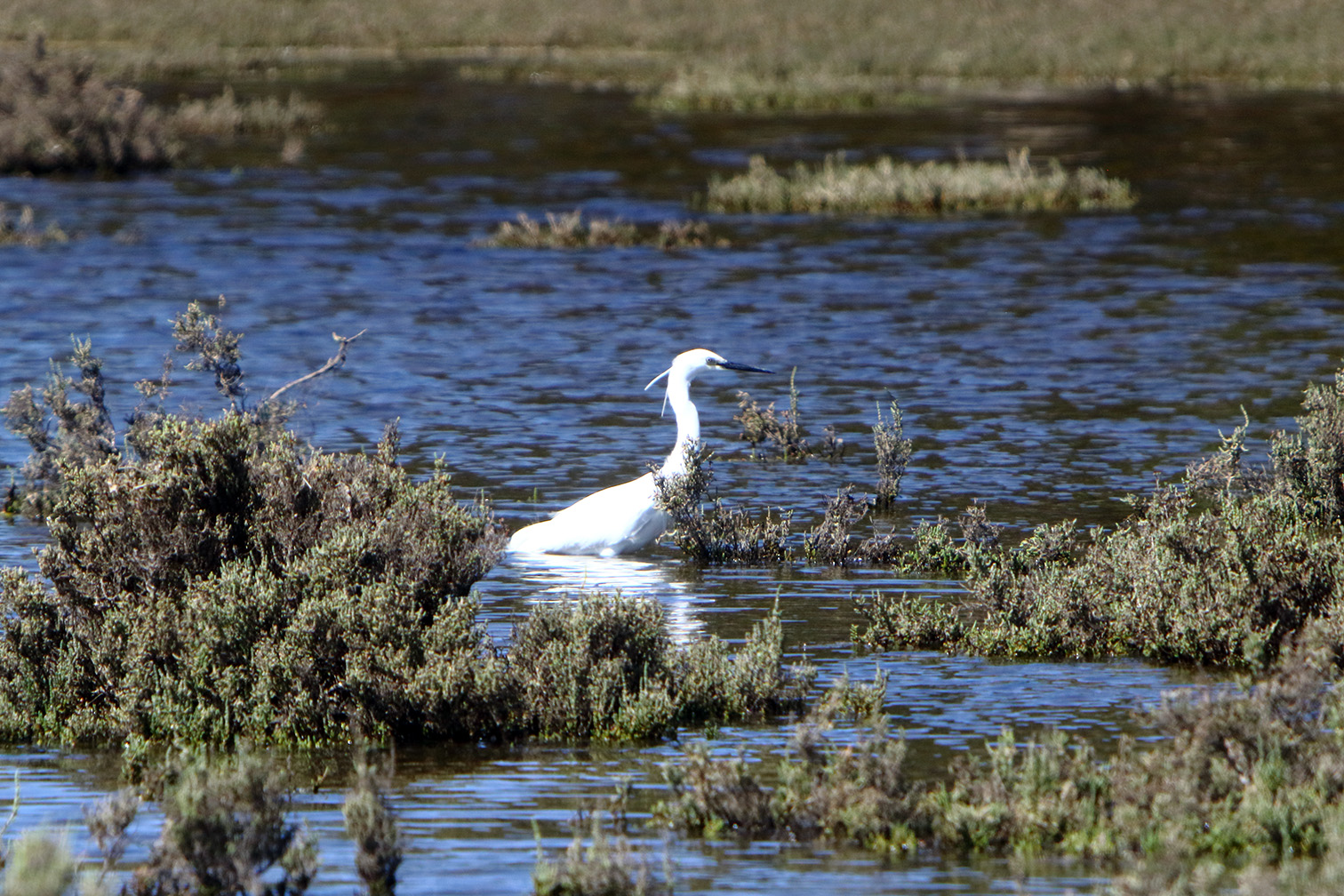 |
|
Straw-necked Ibis
The straw-necked
ibis (Threskiornis spinicollis - Skäggibis) is a bird of the ibis and
spoonbill family Threskiornithidae. Adults have distinctive straw-like
feathers on their neck. Straw-necked ibises are found throughout Australia,
except parts of Western Australia, South Australia, and south-west Tasmania.
They are most abundant on the east coast, and also inhabit Norfolk Island
and Lord Howe Island. They are also found in Indonesia and New Guinea. They
build in colonies, often with the Australian white ibis.
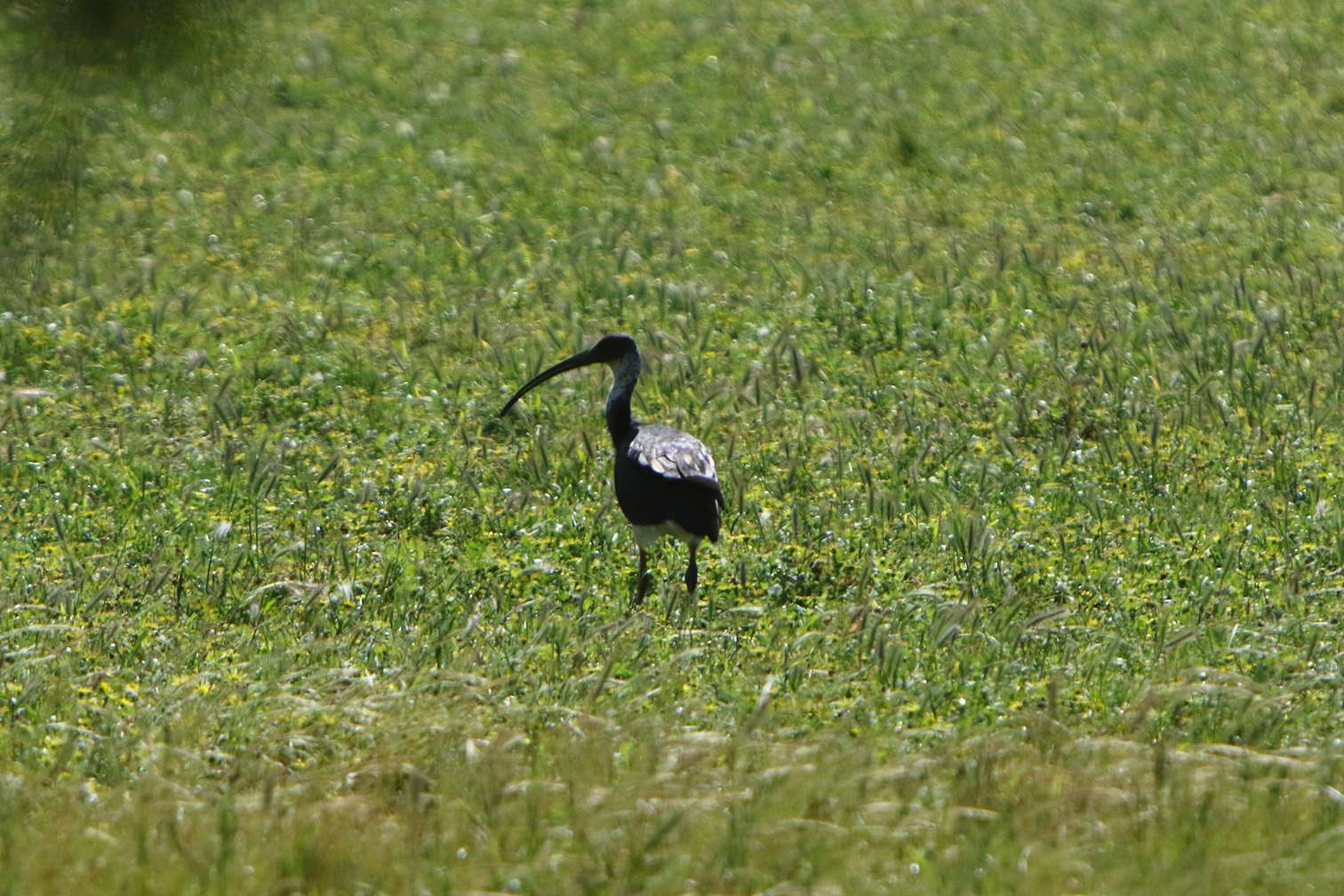 |
|
Little Corella
The little corella
(Cacatua sanguinea - Nakenögd kakadua), also known as the bare-eyed
cockatoo, blood-stained cockatoo, short-billed corella, little cockatoo and
blue-eyed cockatoo, is a white cockatoo native to Australia and southern New
Guinea. It was known as Birdirra among the Yindjibarndi people of the
central and western Pilbara. They would keep them as pets, or traditionally
cook and eat them. The downy feathers are used in traditional ceremonies and
dances where they adorn head and armbands.
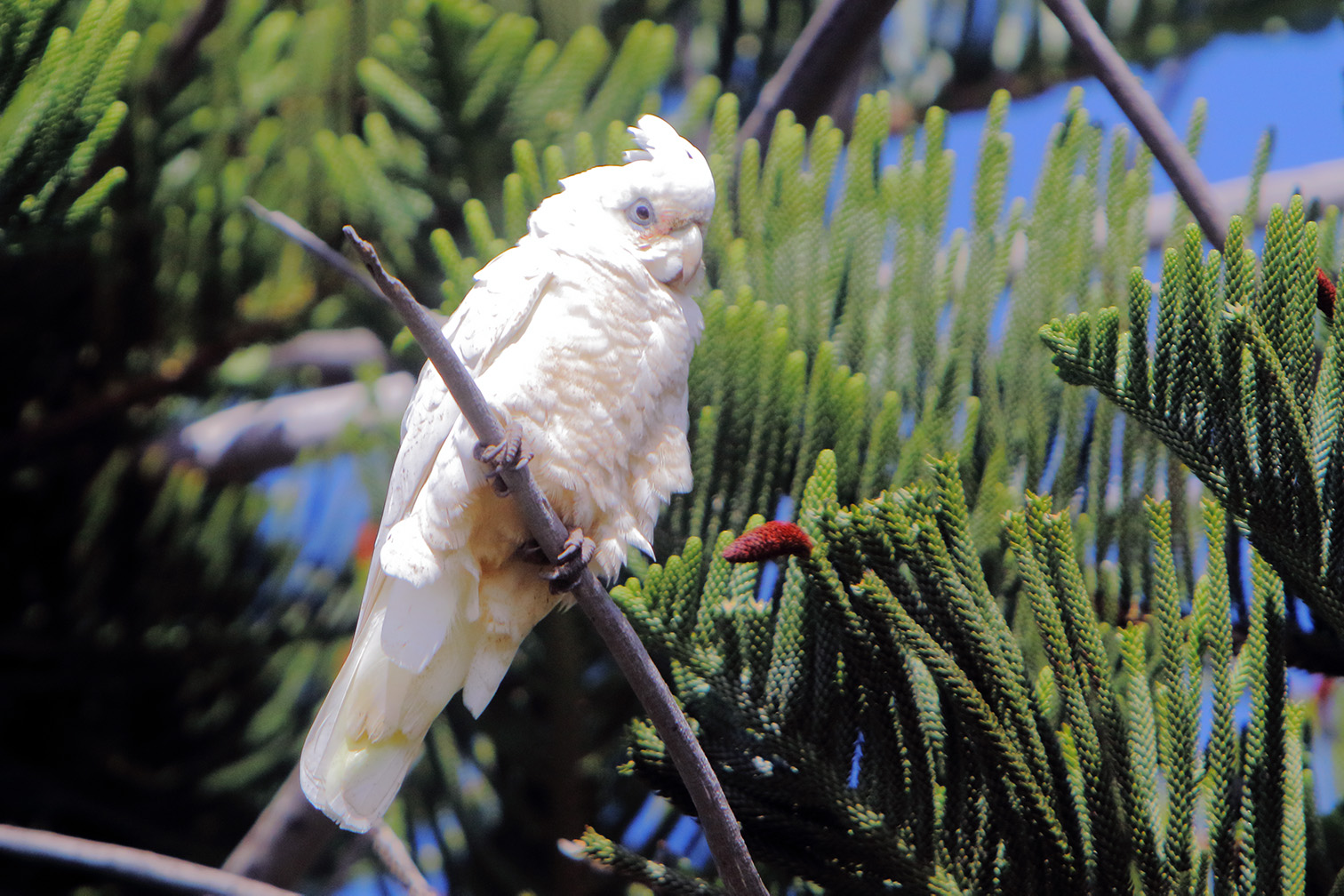 |
|
Black Swan
The black swan (Cygnus
atratus - Svart svan) is a large waterbird, a species of swan which breeds
mainly in the southeast and southwest regions of Australia. Within Australia
they are nomadic, with erratic migration patterns dependent upon climatic
conditions. Black swans are large birds with mostly black plumage and red
bills. They are monogamous breeders. Male and female share incubation and
cygnet rearing duty.
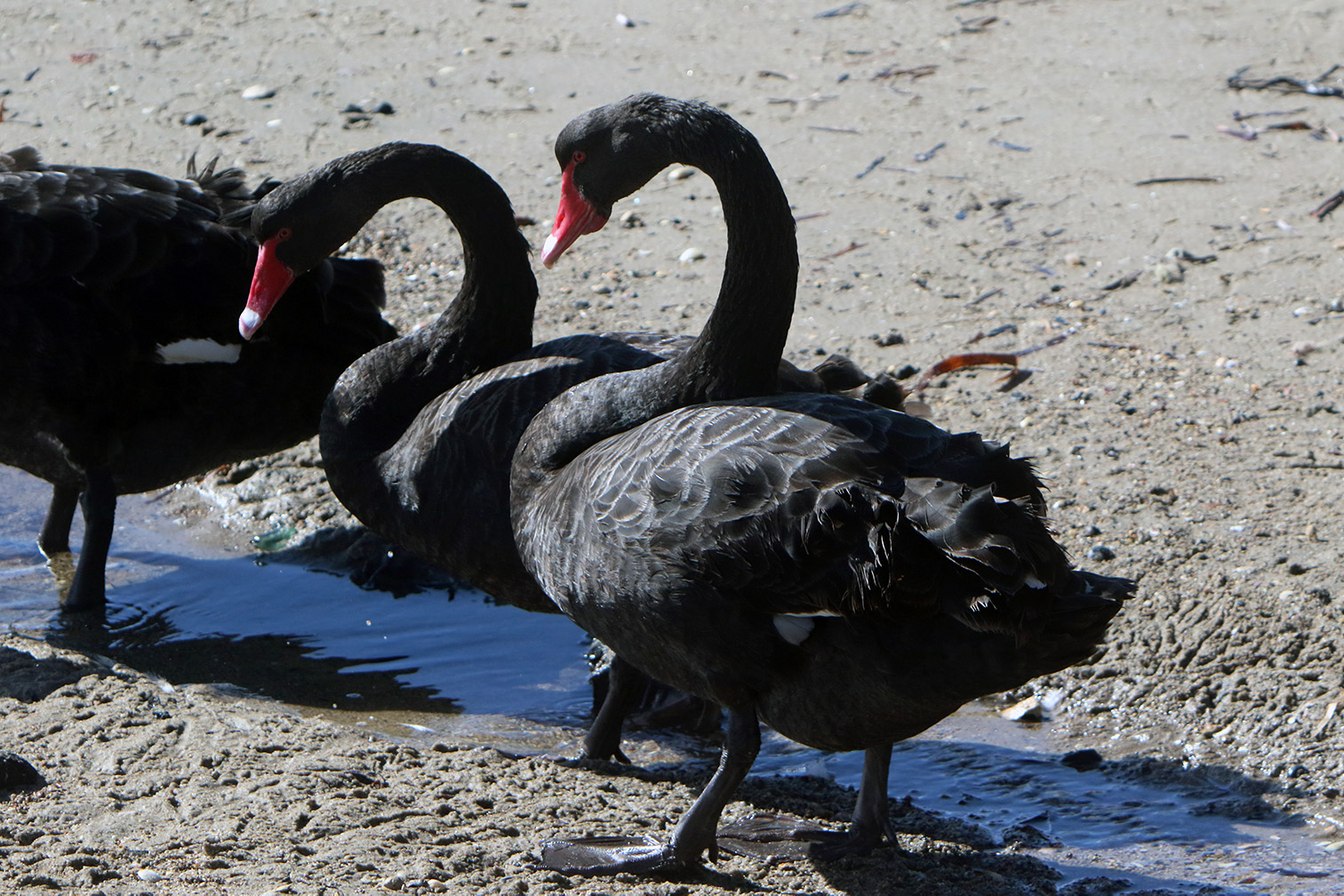 |
|
Sooty Oystercatcher
The sooty
oystercatcher (Haematopus fuliginosus - Sotstrandskata) is a species of
oystercatcher. It is a wading bird endemic to Australia and commonly found
on its coastline. It prefers rocky coastlines, but will occasionally live in
estuaries. All of its feathers are black. It has a red eye, eye ring and
bill, and pink legs.
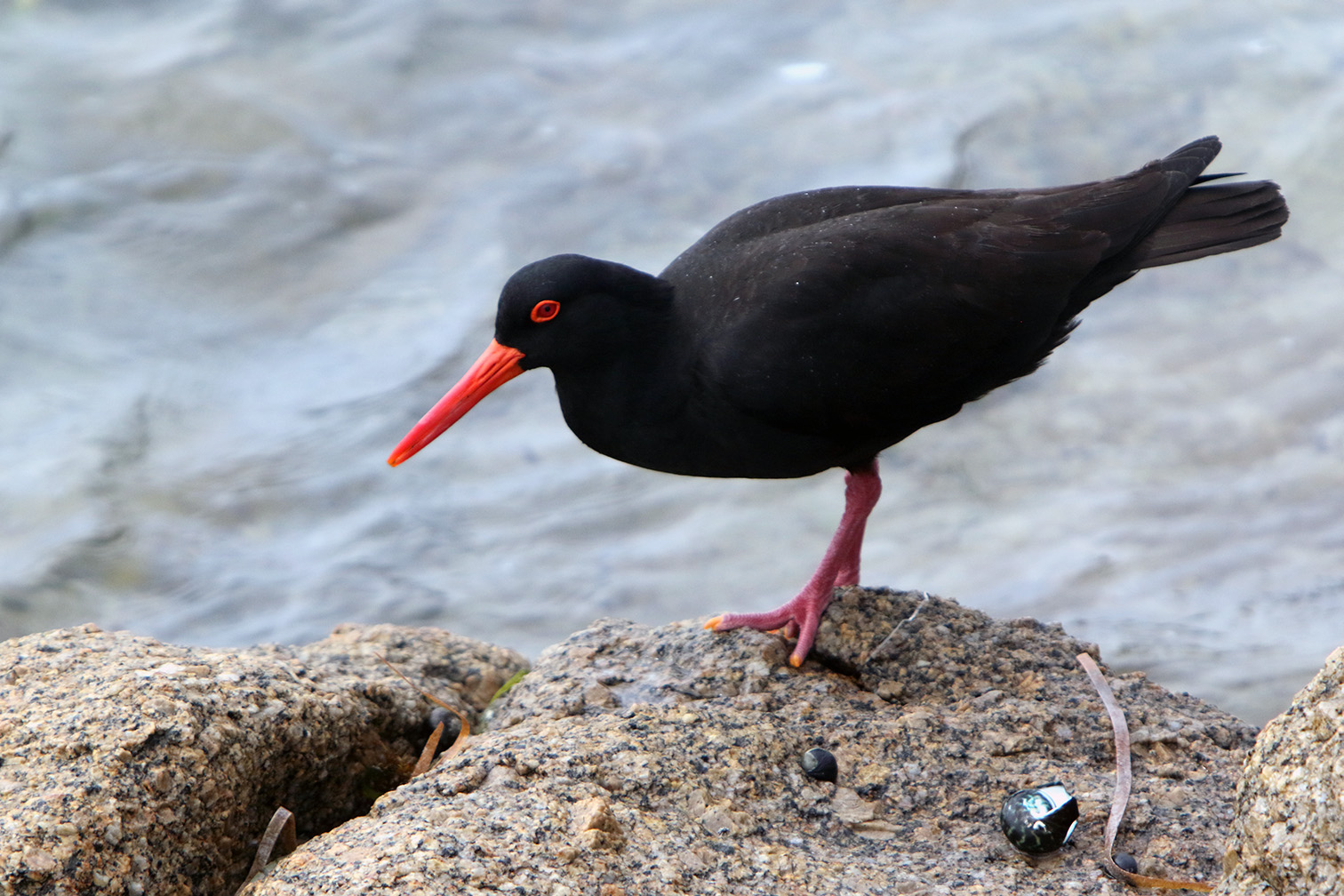 |
|
White-faced Heron
The white-faced
heron (Egretta novaehollandiae - Vithuvad häger) also known as the
white-fronted heron and incorrectly as the grey heron or blue crane, is a
common bird throughout most of Australasia, including New Guinea, the
islands of Torres Strait, Indonesia, New Zealand, and all but the driest
areas of Australia. It is a medium-sized heron, pale, slightly bluish-grey,
with yellow legs and white facial markings. It can be found almost anywhere
near shallow water, fresh or salt, and although it is prompt to depart the
scene on long, slow-beating wings if disturbed, it will boldly raid suburban
fish ponds.
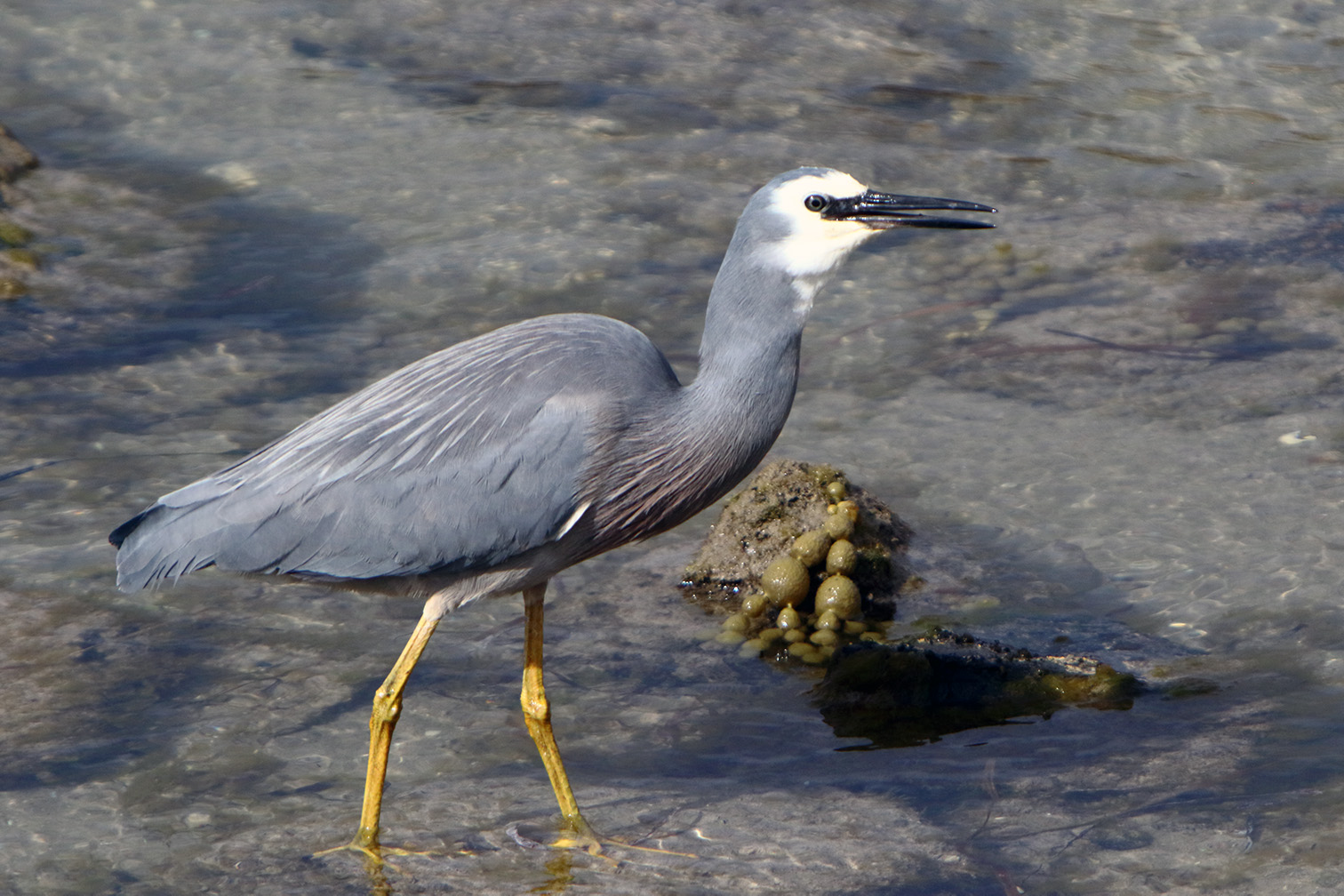 |
|
Little Penguin
The little penguin
(Eudyptula minor - Dvärgpingvin) is the smallest species of penguin. It
grows to an average of 33 cm in height and 43 cm in length, though specific
measurements vary by subspecies. It is found on the coastlines of southern
Australia and New Zealand, with possible records from Chile. In Australia,
they are often called fairy penguins because of their small size. In New
Zealand, they are more commonly known as little blue penguins or blue
penguins owing to their slate-blue plumage. They are also known by their
Māori name: kororā.
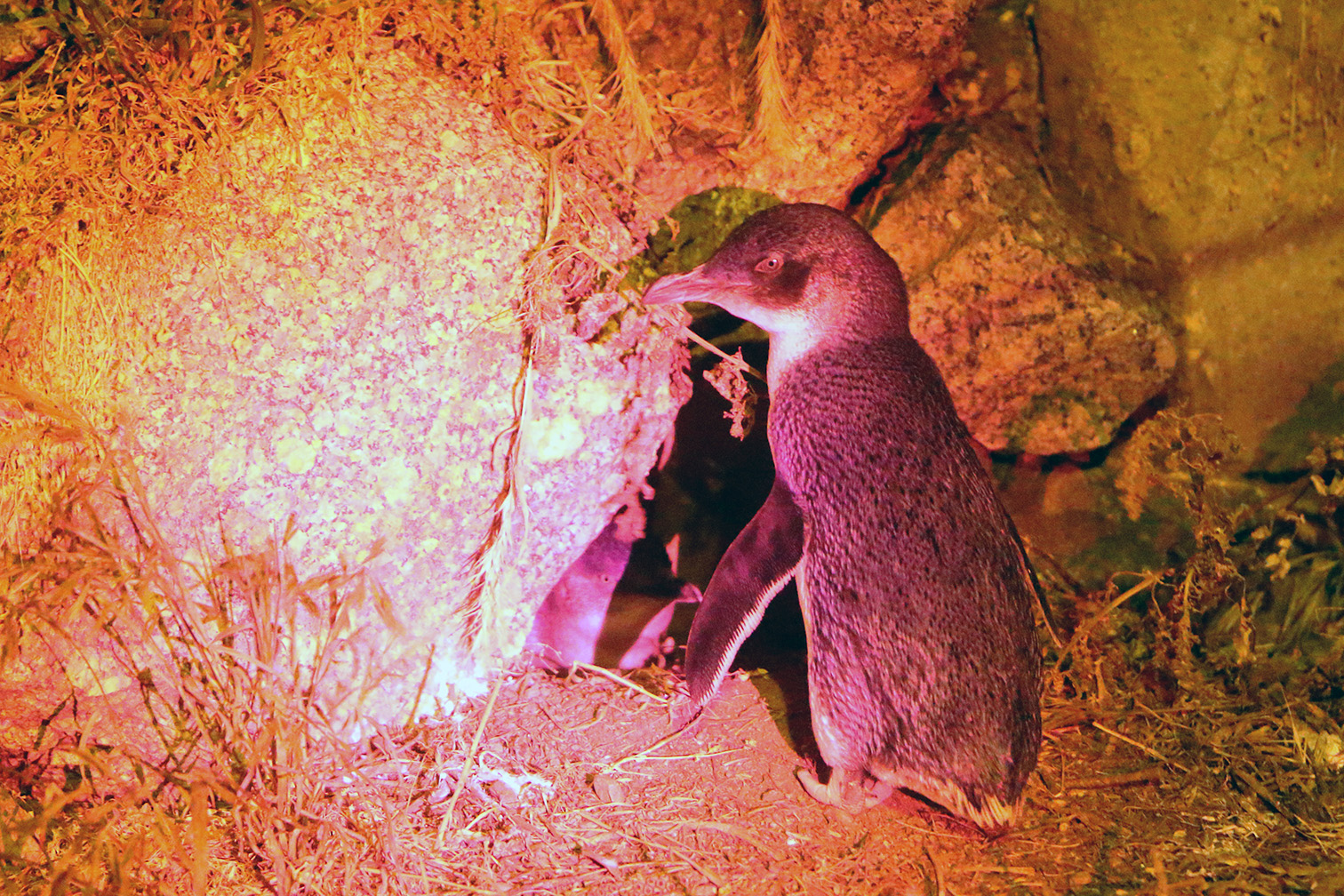 |
|
Magpie-Lark
The magpie-lark (Grallina
cyanoleuca - Skatlärka), also known as the peewee, peewit or mudlark, is a
passerine bird native to Australia, Timor and southern New Guinea. The male
and female both have black and white plumage, though with different
patterns. John Latham described the species in 1801. Long thought to be a
member of the mudnest builder family Corcoracidae, it has been reclassified
in the family Monarchidae (the monarch flycatchers). Two subspecies are
recognized.
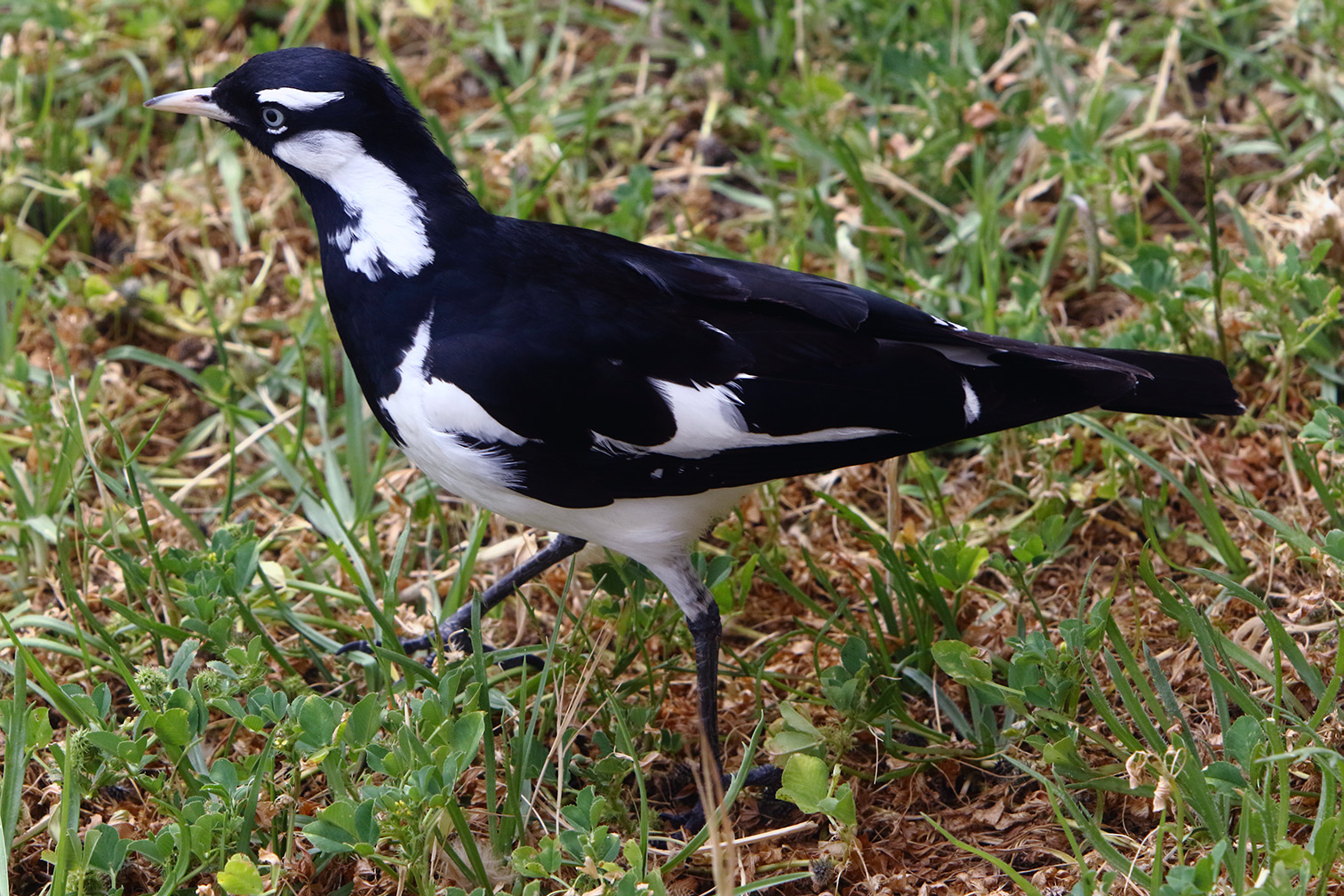 |
|
Australian Magpie
The Australian
magpie (Gymnorhina tibicen - Flöjtkråka) is a medium-sized black and
white passerine bird native to Australia and southern New Guinea. Although
once considered to be three separate species, it is now considered to be
one, with nine recognised subspecies. With its long legs, the Australian
magpie walks rather than waddles or hops and spends much time on the ground.
Described as one of Australia's most accomplished songbirds, the Australian
magpie has an array of complex vocalisations. The Australian magpie is the
mascot of several Australian sporting teams, most notably the Collingwood
Magpies, the Western Suburbs Magpies and Port Adelaide Magpies.
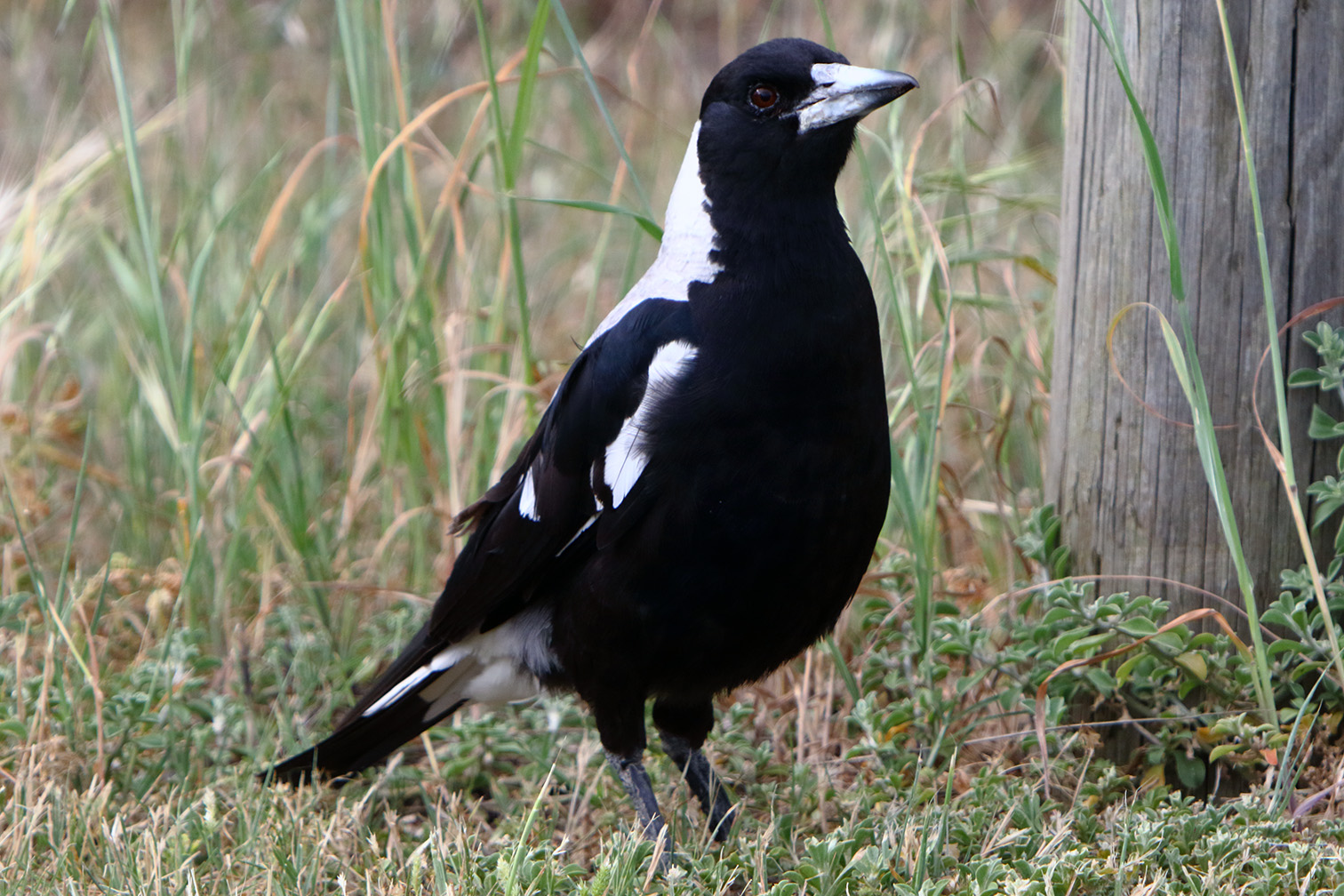 |
|
Willie Wagtail
The willie wagtail
(Rhipidura leucophrys - Ärlesolfjäderstjärt) is a passerine bird native to
Australia, New Guinea, the Solomon Islands, the Bismarck Archipelago, and
Eastern Indonesia. It is a common and familiar bird throughout much of its
range, living in most habitats apart from thick forest. Measuring 19–21.5 cm
in length, the willie wagtail is contrastingly coloured with almost entirely
black upperparts and white underparts; the male and female have similar
plumage. The willie wagtail is insectivorous and spends much time chasing
prey in open habitat. Its common name is derived from its habit of wagging
its tail horizontally when foraging on the ground. It was widely featured in
Aboriginal folklore around the country as either a bringer of bad news or a
stealer of secrets.
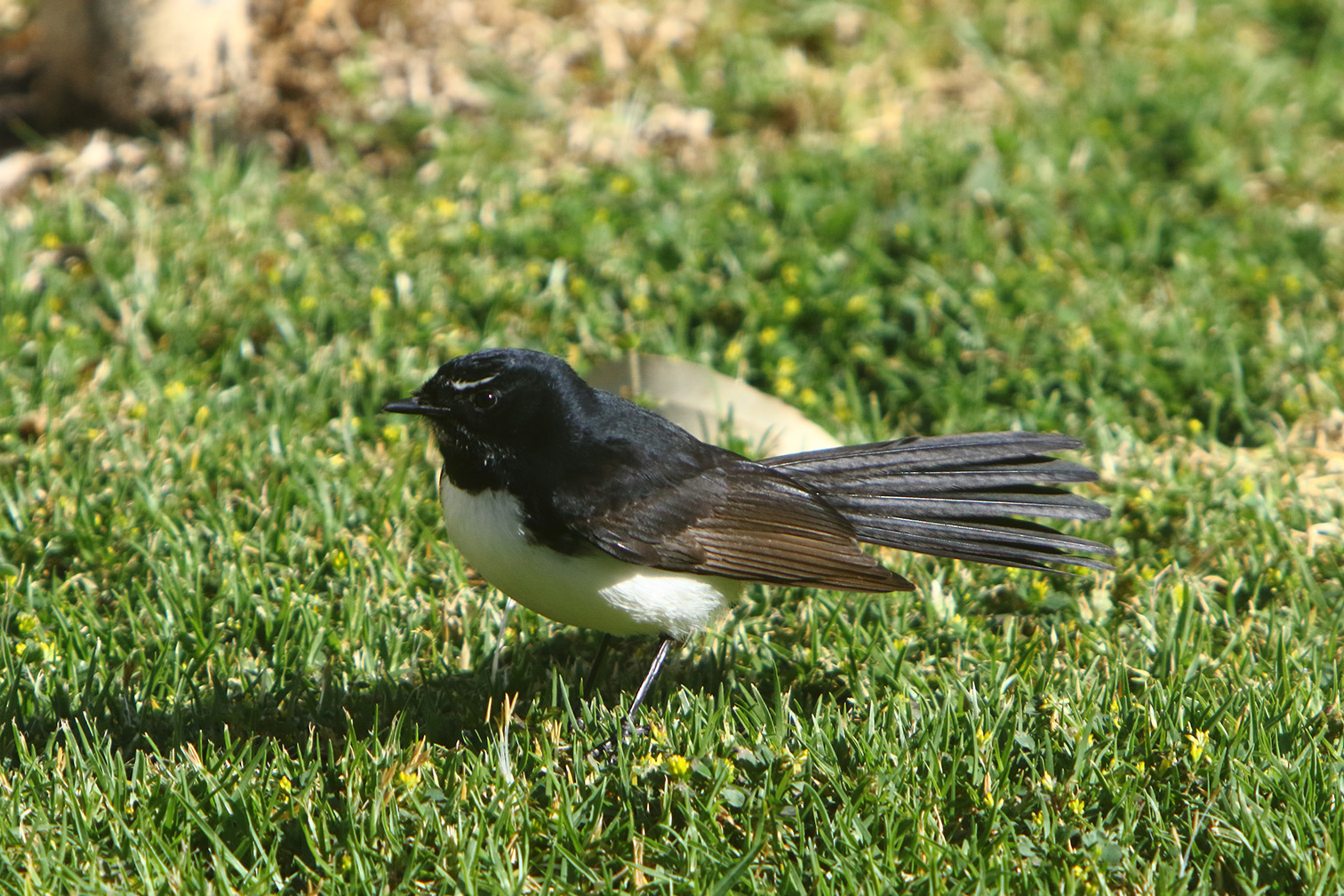 |
|
Singing Honeyeater
The singing
honeyeater (Gavicalis virescens - Sånghonungsfågel) is a small bird
found in Australia, and is part of the honeyeater family, Meliphagidae. The
bird lives in a wide range of shrub-land, wood-land and coastal habitat. It
is relatively common and is widespread right across Australia west of the
Great Dividing Range, through to the west coast and on Western Australian
coastal islands. It does not occur in other countries.
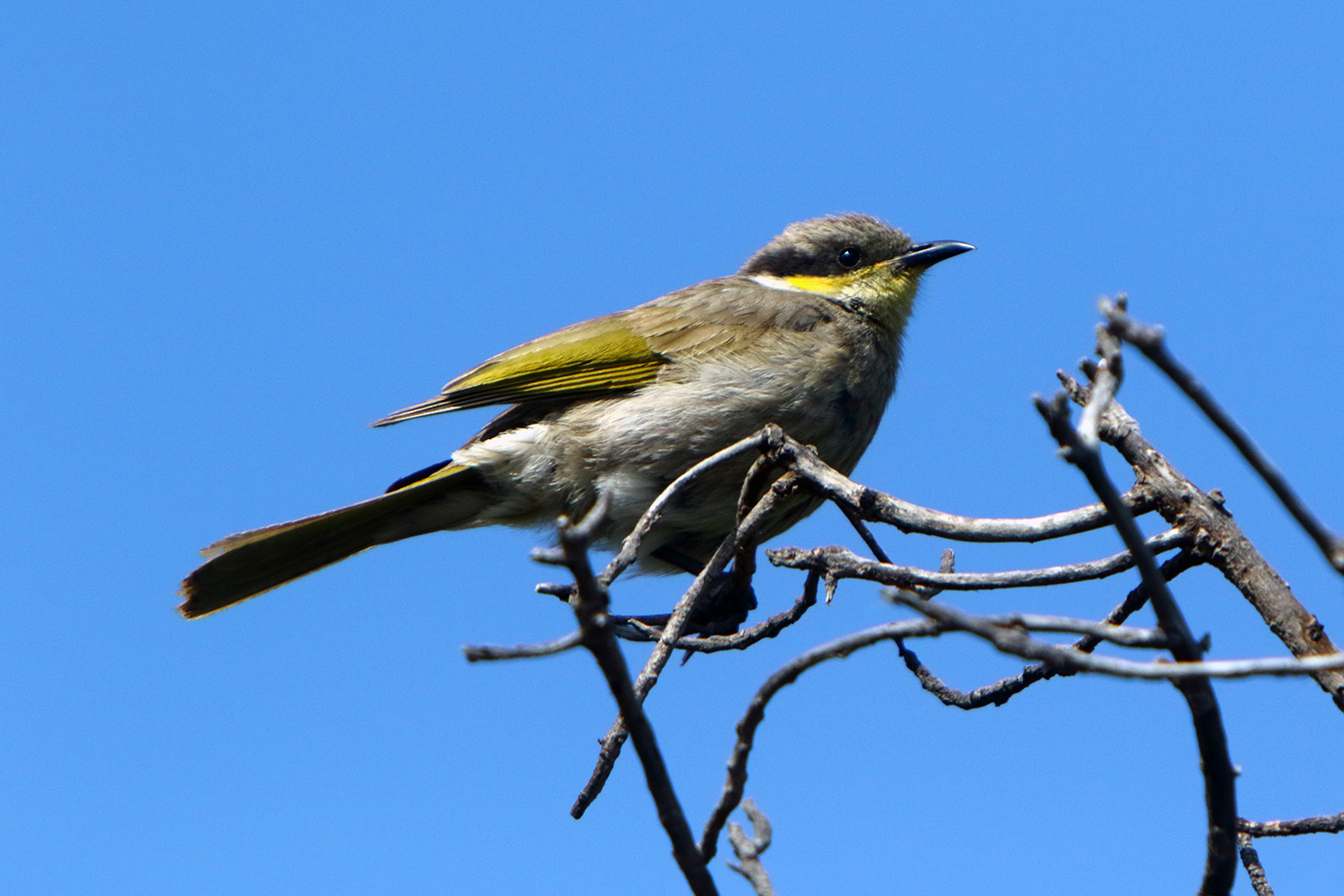 |
|
Dusky
Moorhen The
dusky moorhen (Gallinula tenebrosa - Mörk rörhöna) is a bird species in
the rail family and is one of the eight extant species in the moorhen genus.
It occurs in India, Australia, New Guinea, Borneo and Indonesia. It is often
confused with the purple swamphen and the Eurasian coot due to similar
appearance and overlapping distributions. They often live alongside birds in
the same genus, such as the Tasmanian nativehen and the common moorhen.
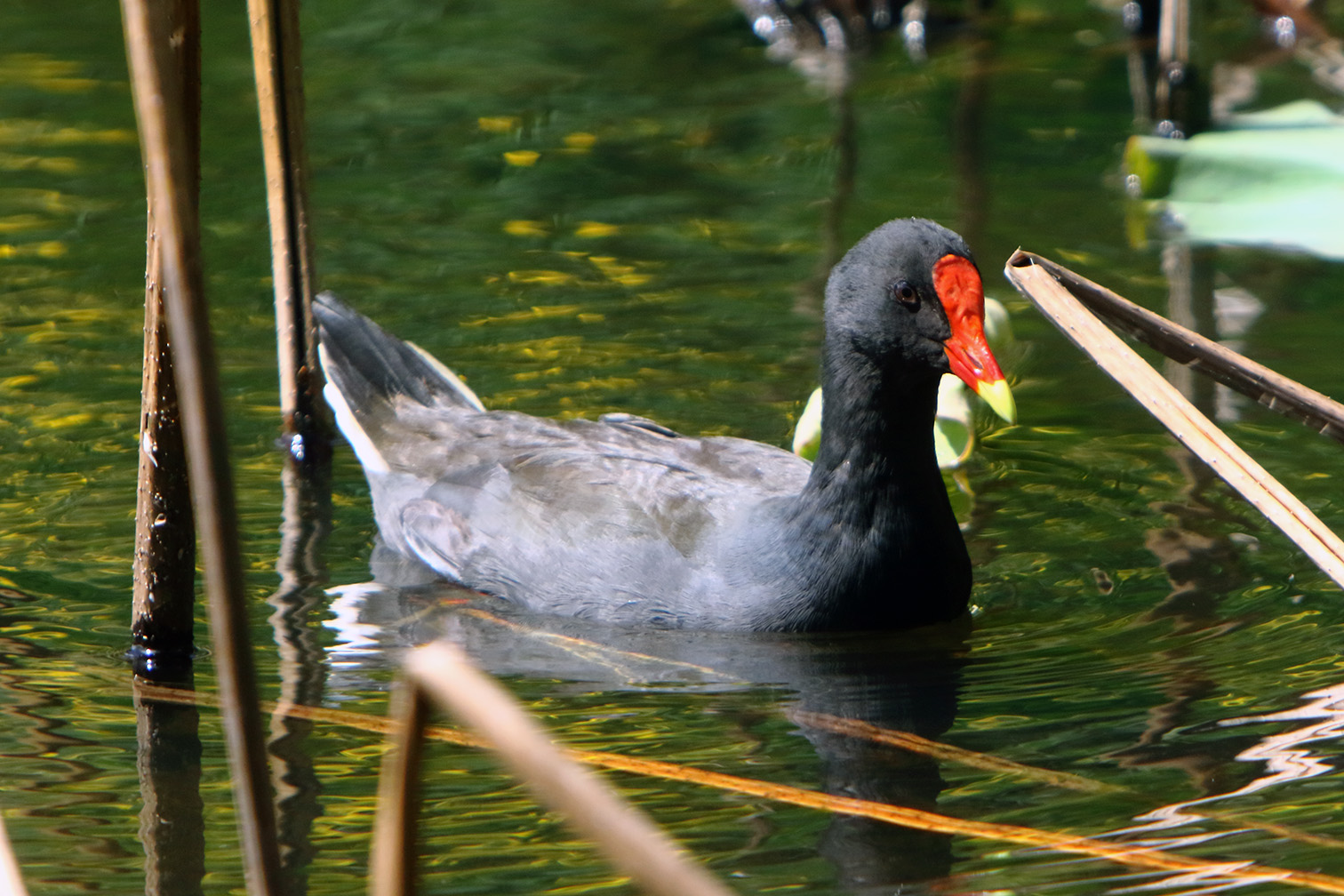 |
|
Noisy
Miner The
noisy miner (Manorina melanocephala - Larmhonungsstare) is a bird in the
honeyeater family, Meliphagidae, and is endemic to eastern and south-eastern
Australia. This miner is a grey bird, with a black head, orange-yellow beak
and feet, a distinctive yellow patch behind the eye and white tips on the
tail feathers. As the common name suggests, the noisy miner is a vocal
species with a large range of songs, calls, scoldings and alarms, and almost
constant vocalizations particularly from young birds.
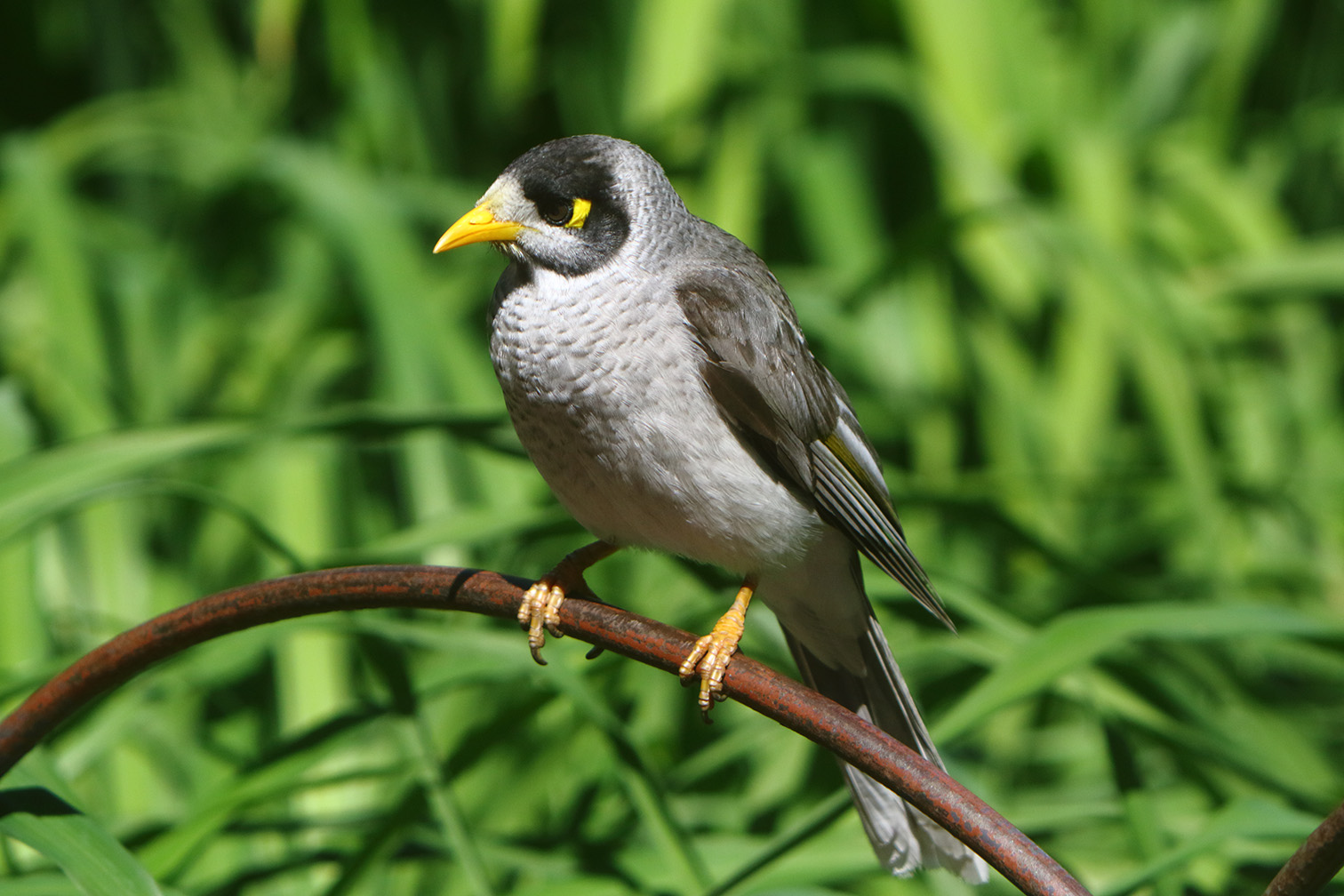 |
|
Crested Pigeon
The crested pigeon (Ocyphaps lophotes -
Tofsduva) is a bird found widely throughout mainland Australia except for
the far northern tropical areas. It is the only member of the genus Ocyphaps.
Only two Australian pigeon species possess an erect crest, the crested
pigeon and the spinifex pigeon. The crested pigeon is the larger of the two
species. The crested pigeon is sometimes incorrectly referred to as a
topknot pigeon, but the topknot pigeon, Lopholaimus antarcticus has a
red-brown crest that does not stand erect.
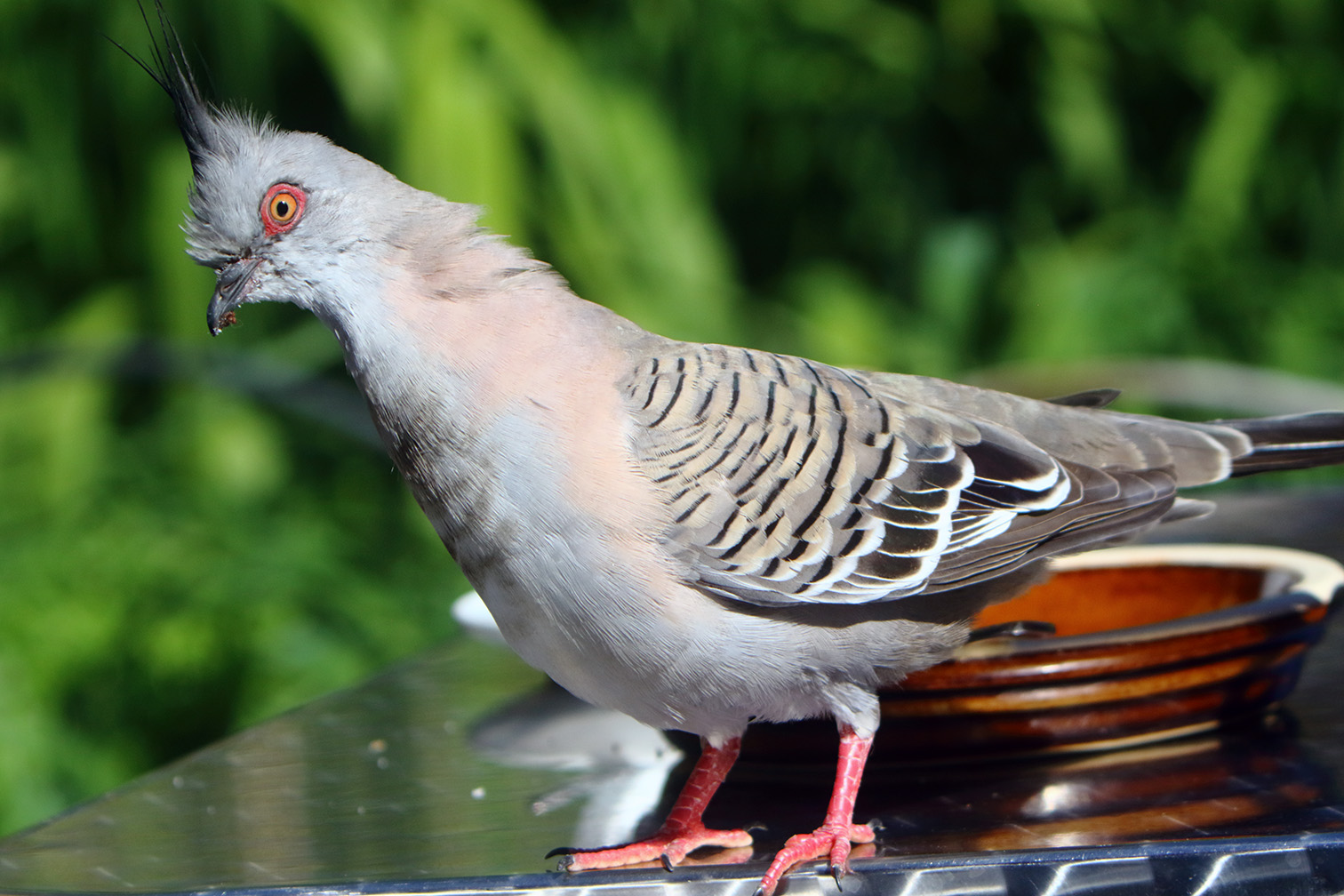 |
|
Rainbow Lorikeet
The rainbow
lorikeet (Trichoglossus moluccanus - Regnbågslorikit) is a species of
parrot found in Australia. It is common along the eastern seaboard, from
northern Queensland to South Australia. Its habitat is rainforest, coastal
bush and woodland areas. Several taxa traditionally listed as subspecies of
the rainbow lorikeet are now treated as separate species.
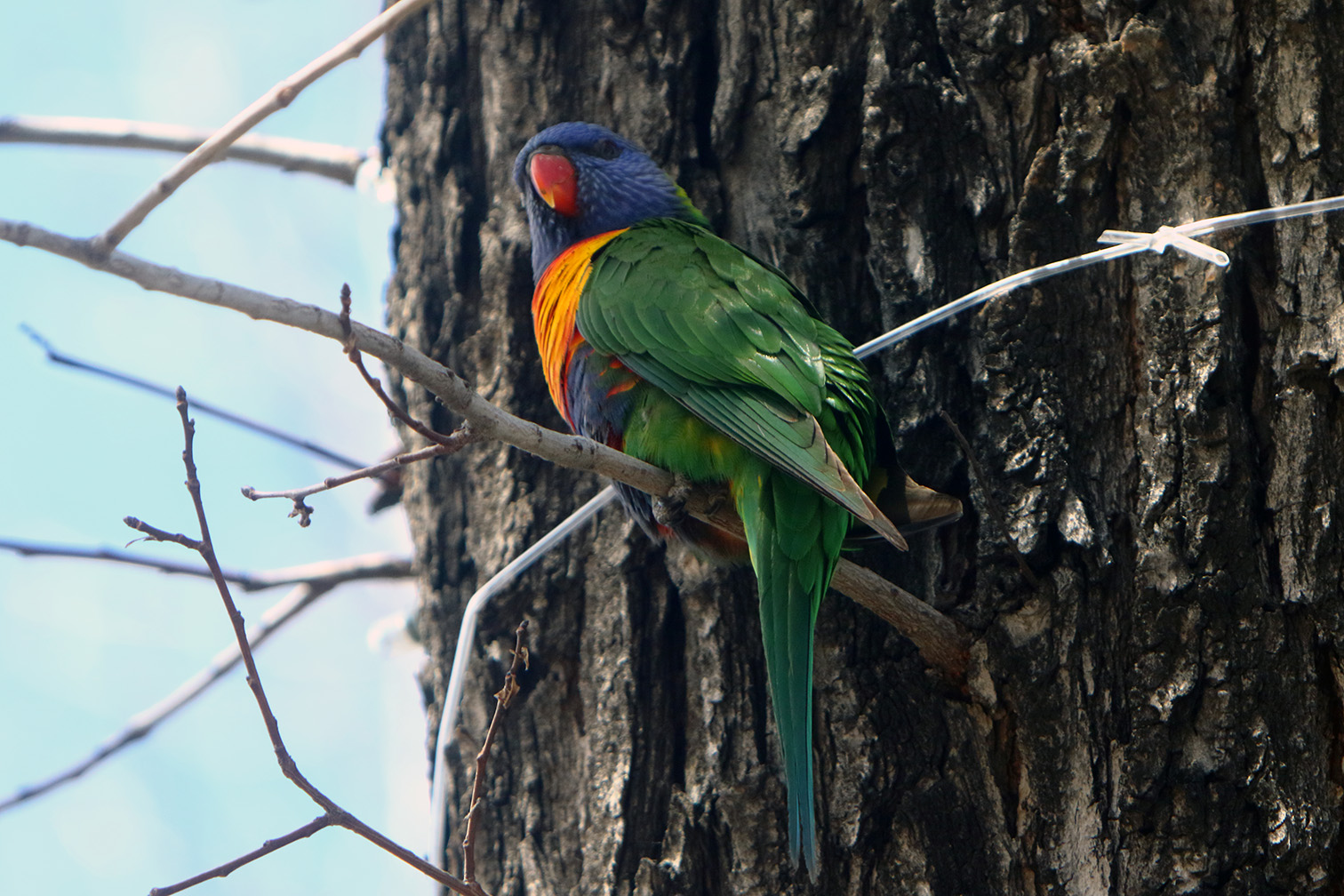 |
|
Australian Raven
The
Australian raven (Corvus coronoides - Australisk korp) is a passerine
bird in the genus Corvus native to much of southern and northeastern
Australia. Measuring 46–53 centimetres in length, it has all-black plumage,
beak and mouth, as well as strong grey-black legs and feet. The upperparts
are glossy, with a purple, blue or green sheen, and its black feathers have
grey bases. The Australian raven is distinguished from the Australian crow
species by its throat hackles, which are prominent in adult birds. Older
adult individuals have white irises, younger adults have a white irises with
an inner blue rim, while younger birds have dark brown irises until fifteen
months of age, and hazel irises with an inner blue rim around each pupil
until age two years and ten months.
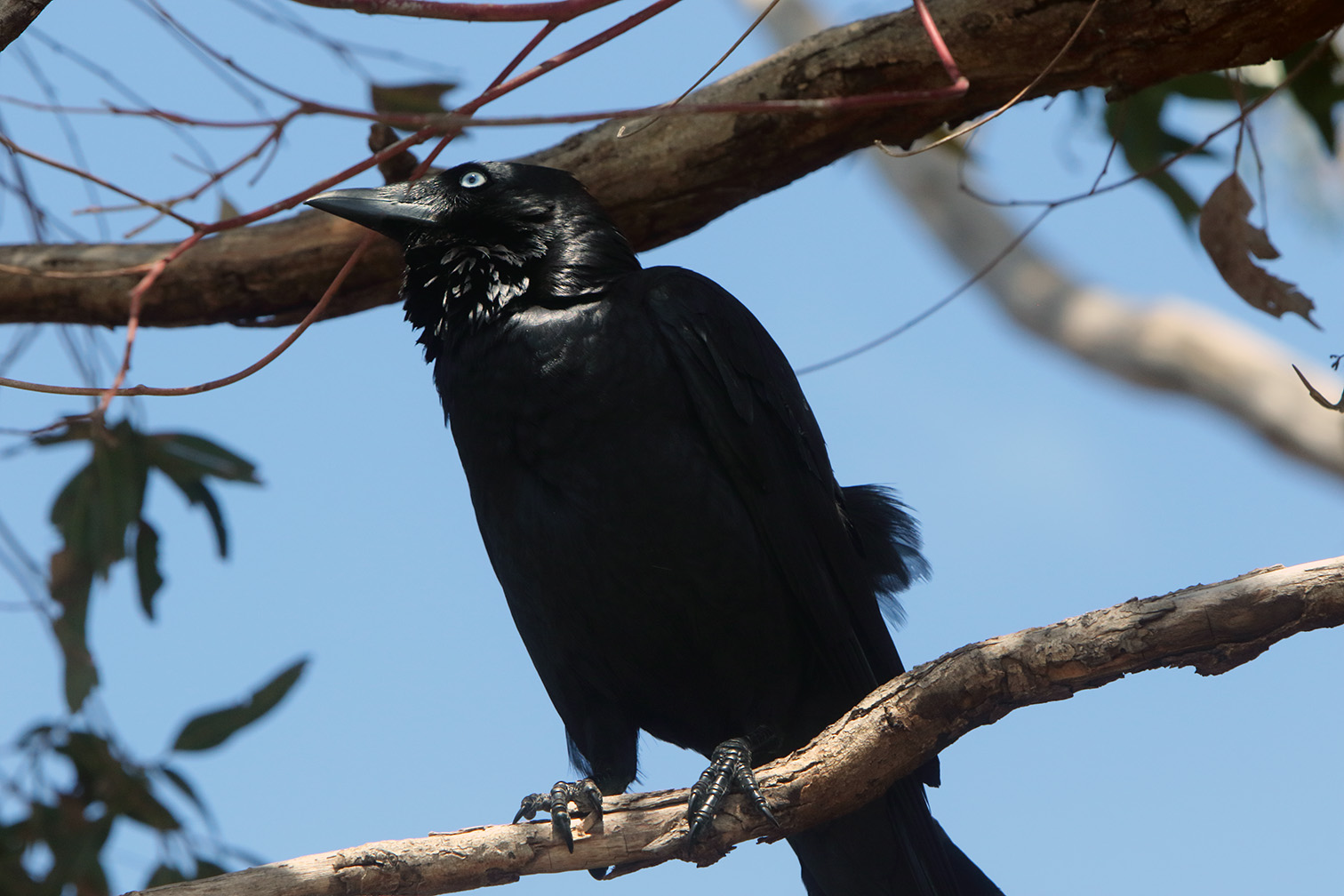 |
|
Australian Nankeen Kestrel
The
Australian kestrel or nankeen kestrel (Falco cenchroides - Nakinfalk) is
one of the smallest falcons, and unlike many, does not rely on speed to
catch its prey. Instead, it simply perches in an exposed position, but it
also has a distinctive technique of hovering over crop and grasslands. A
very common and easily seen raptor, the nankeen kestrel is found in
Australia, New Guinea, and nearby islands, and is an irregular visitor to
New Zealand. It occupies any type of land that is not too densely vegetated,
but in particular temperate grasslands and open woodlands.
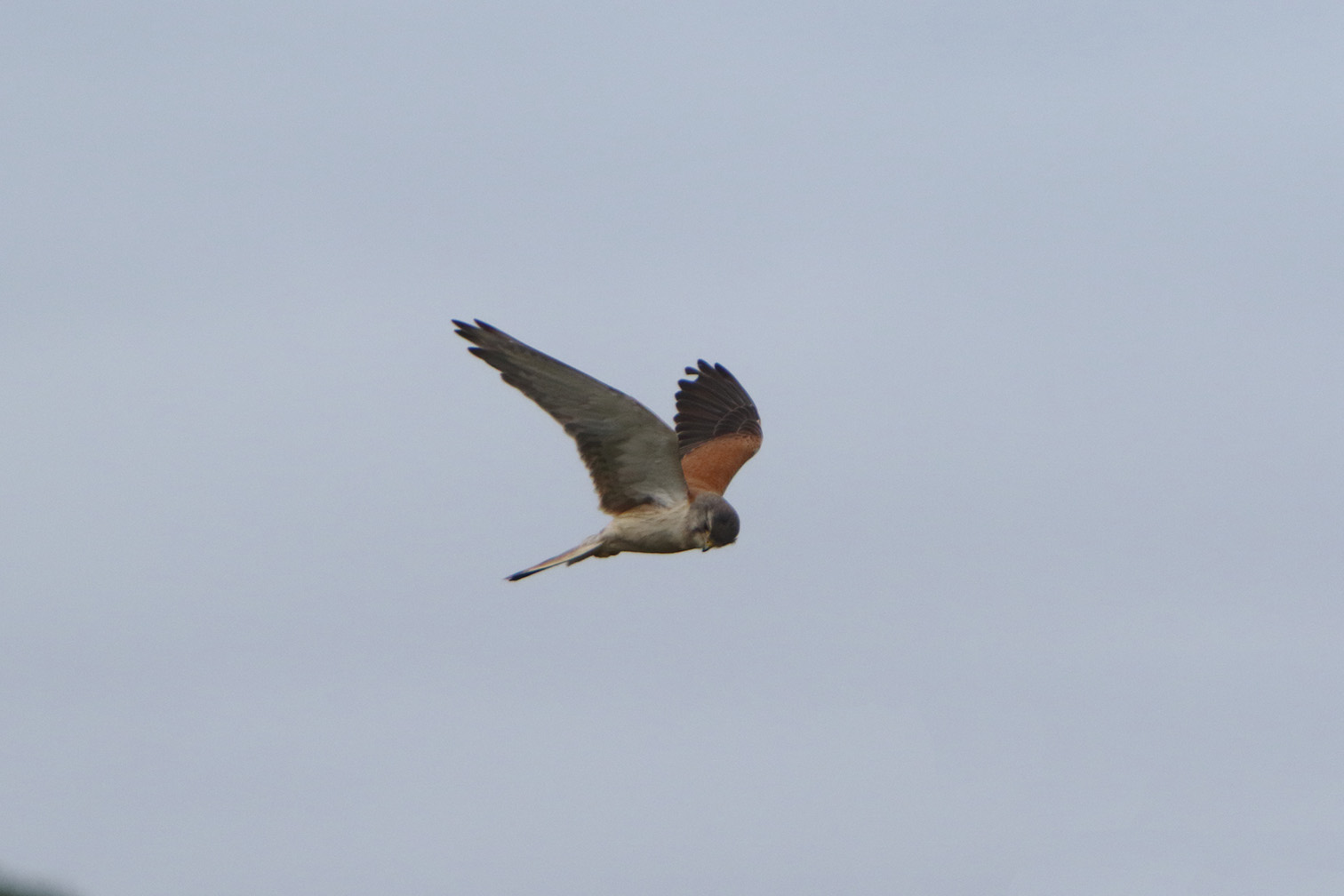 |
|
Chestnut Teal
The chestnut teal
(Anas castanea - Kastanjekricka) is a dabbling duck found in Australia. It
is protected under the National Parks and Wildlife Act 1974. The chestnut
teal is commonly distributed in south-eastern and south-western Australia,
while vagrants may occur elsewhere. The chestnut teal prefers coastal
estuaries and wetlands, and is indifferent to salinity. This bird is an
omnivore.
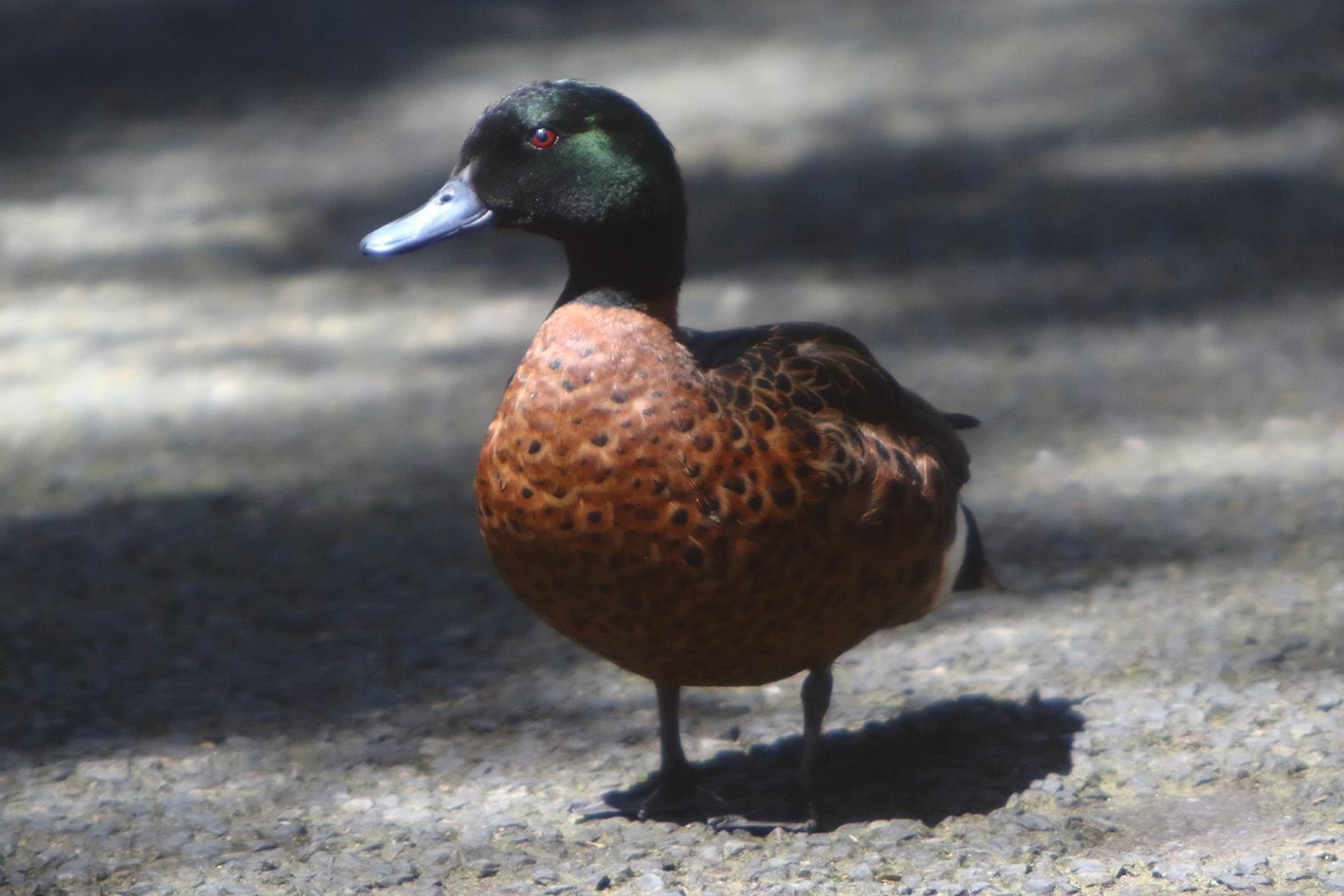 |
|
Diamond Dove
The diamond dove (Geopelia
cuneata - Diamantduva) is a resident bird in Australia. The dove
predominantly exists in areas near water but which are lightly arid or
semi-arid in nature, being Central, West and Northern Australia. They are
one of Australia's smallest pigeons along with the peaceful dove. They have
been spotted occasionally in Southern Australia in parks and gardens when
the centre of Australia is very dry. They are small pigeons with a length of
19 to 21 centimeters. Regardless of sex, they have white spots and black
edges on their wings, red eyes and orange eye-rings.
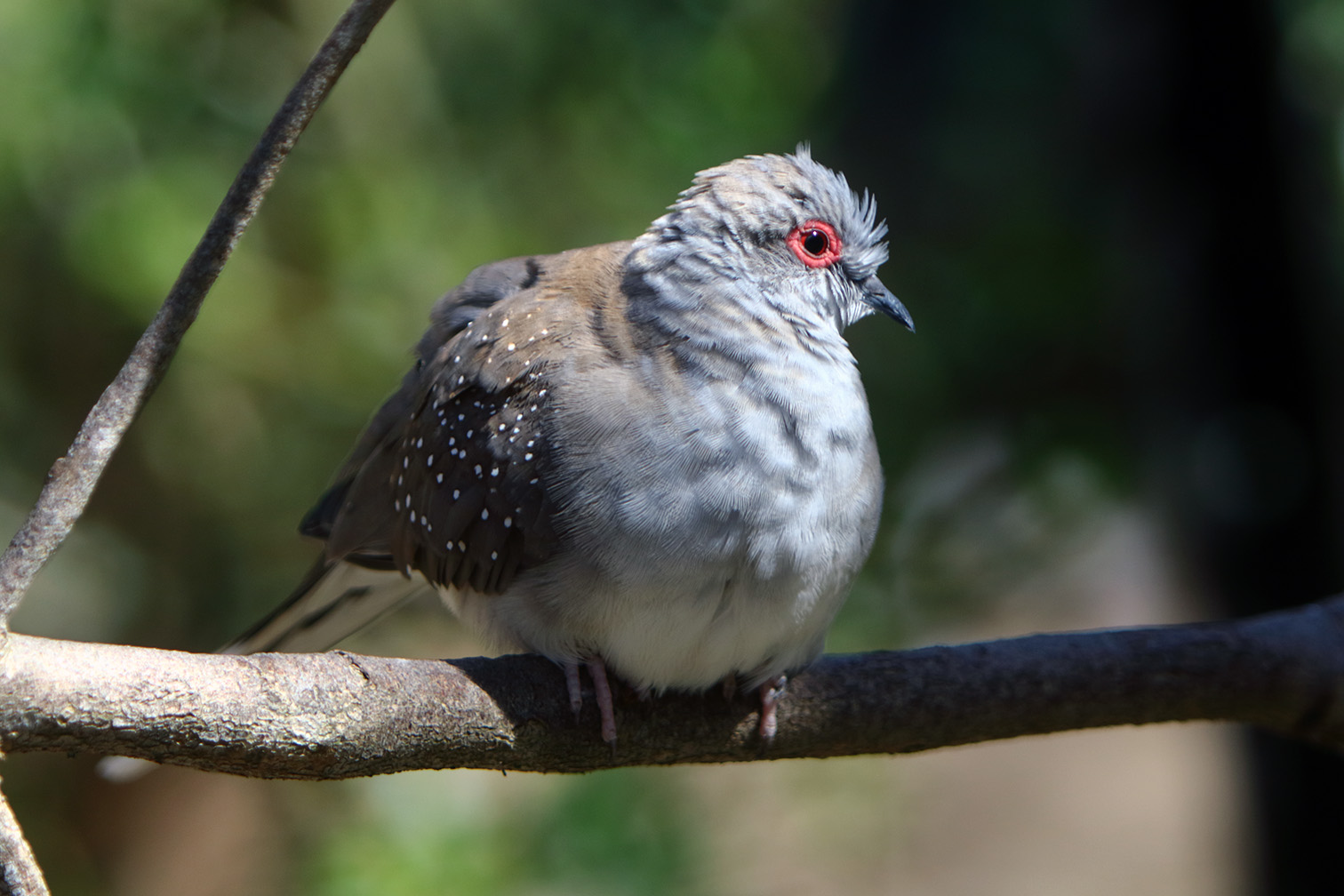 |
Kan inte låta bli att även visa några bilder på ytterligare
några djur från Australiens fantastiska fauna...
|
Koala Såg vi
lite här och var - såväl vid vägkanten som högt uppe i träden...
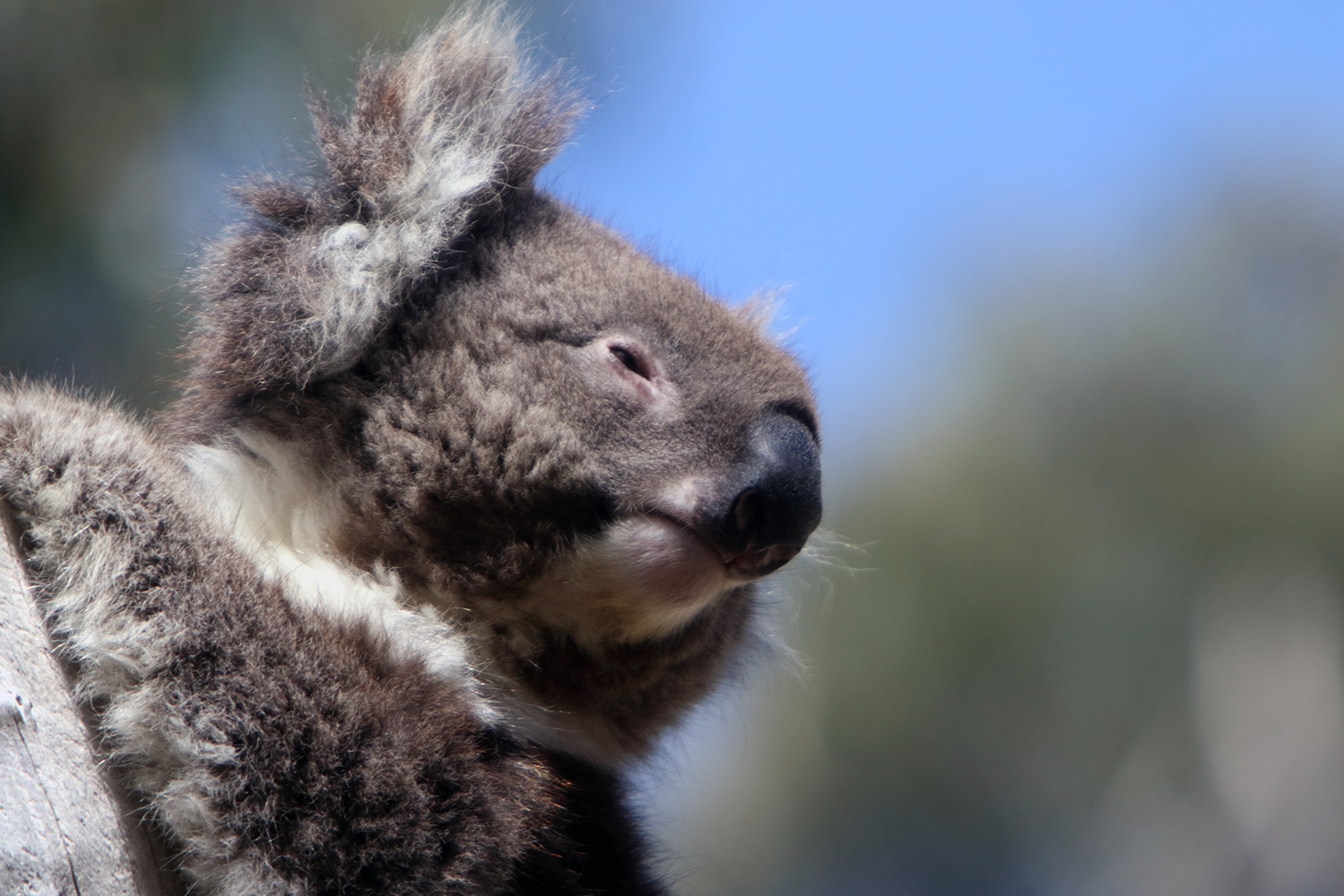 |
|
Känguru Trodde
man skulle se dem hela tiden och anpassade hastigheten längs vägarna
därefter, men de var betydligt mer skygga under dagarna än förväntat...
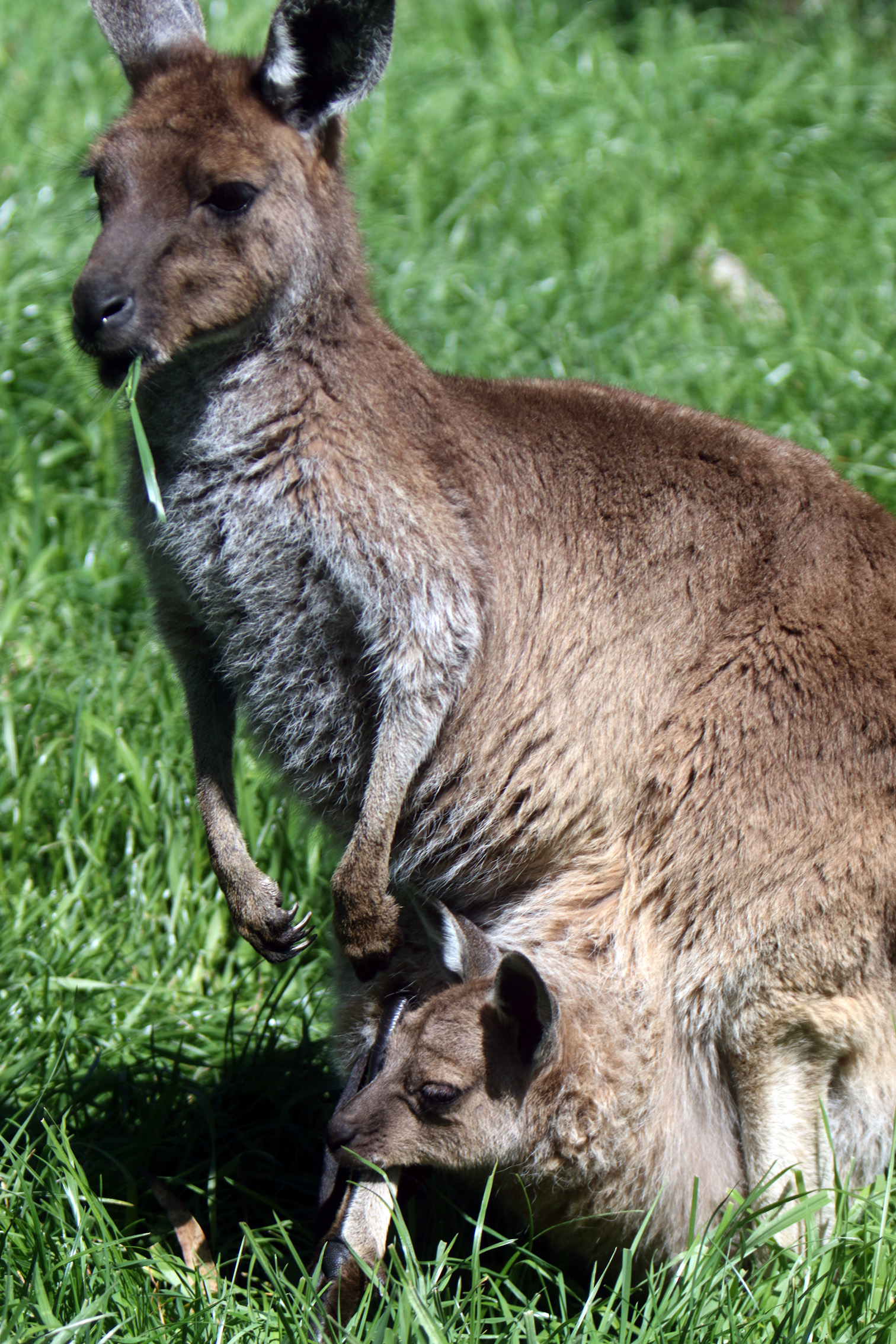 |
|
Delfiner Ett
gäng på 10-15 delfiner dök upp längs kusten när vi var på Kangaroo Island...
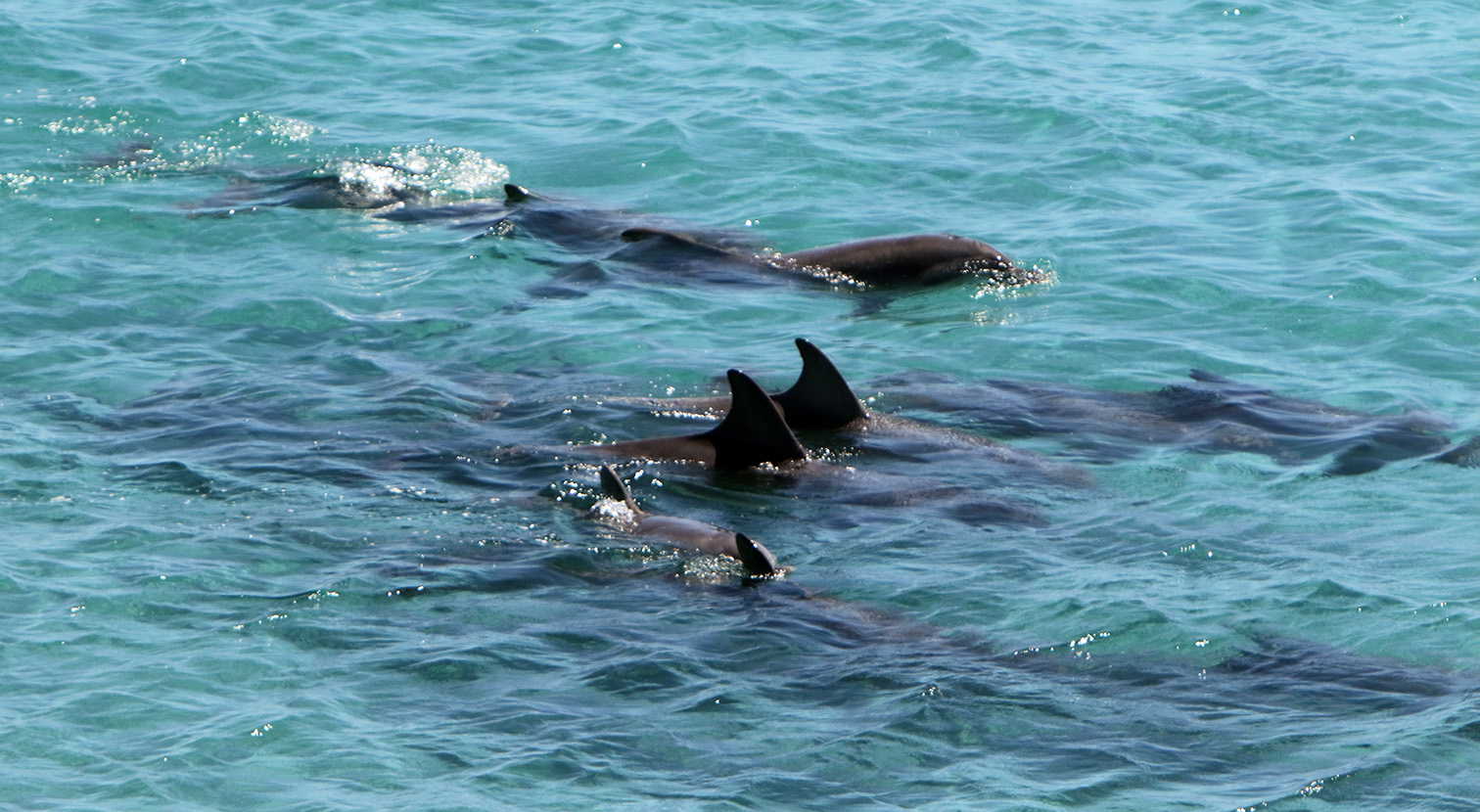 |
|
Pälssäl
Pälssälarna hade börjat samlats inför parningen vid Admirals Arch på
Kangaroo Island...
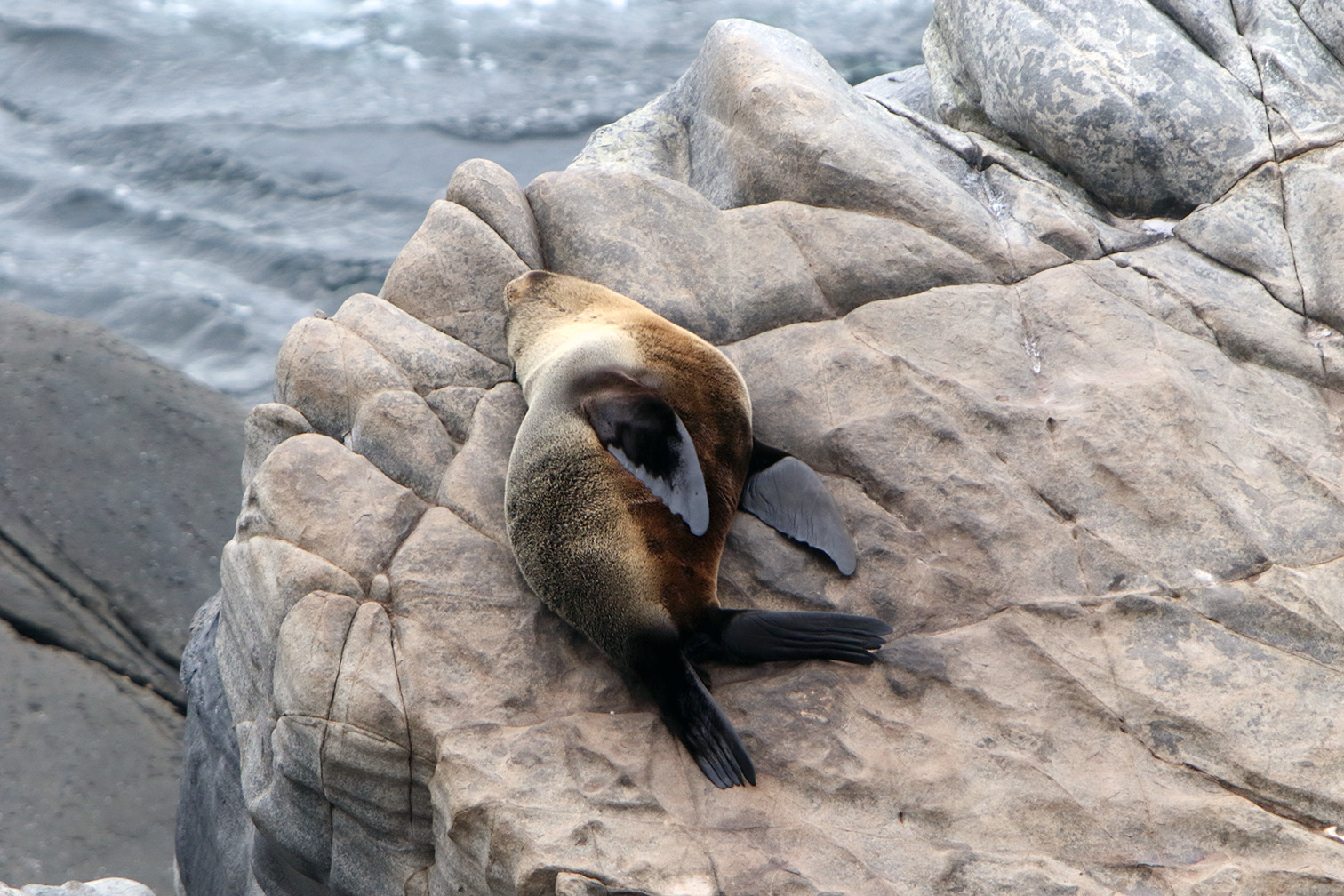 |
ÅTER TILL FÅGELSIDAN
ÅTER TILL OINTRES.SE
|

